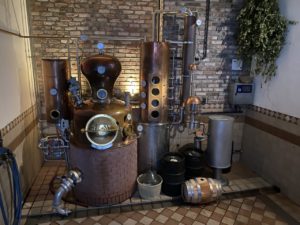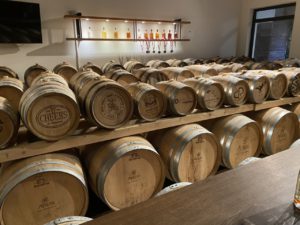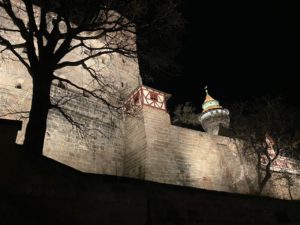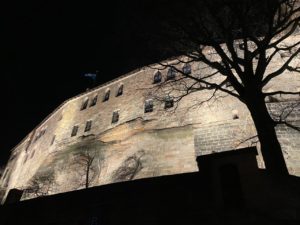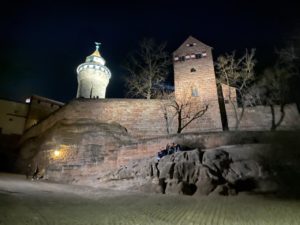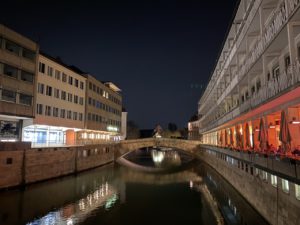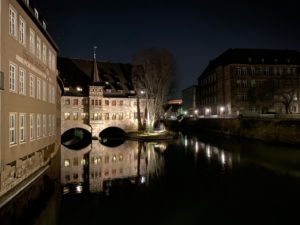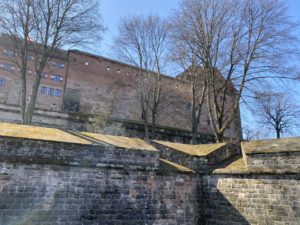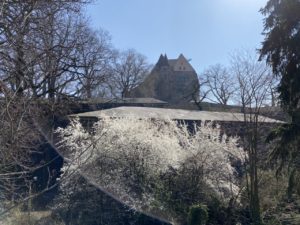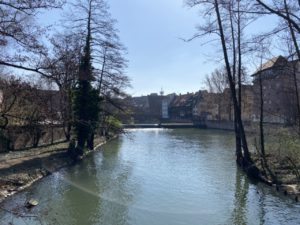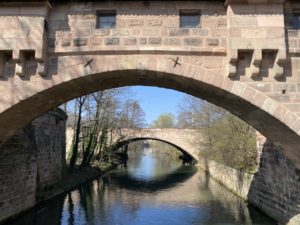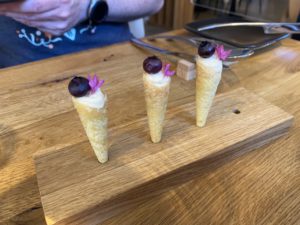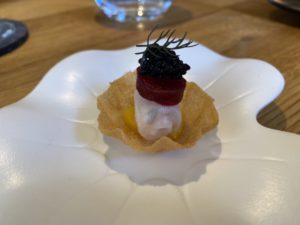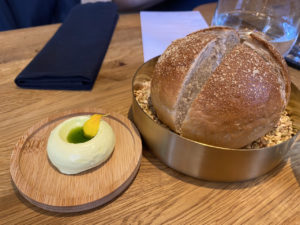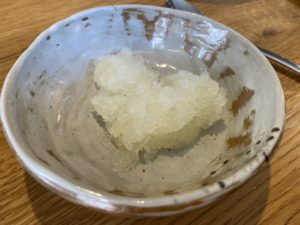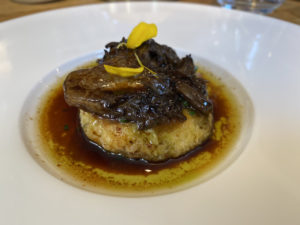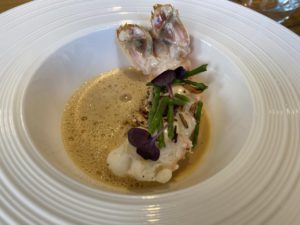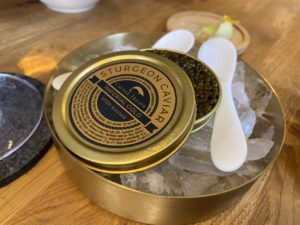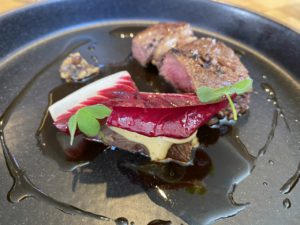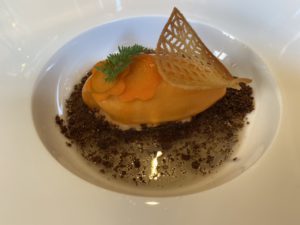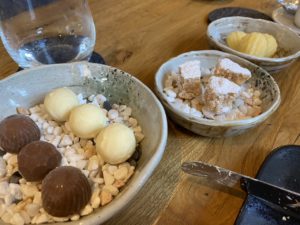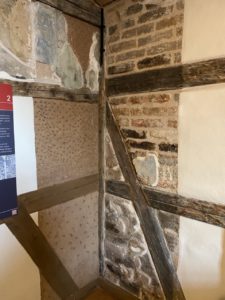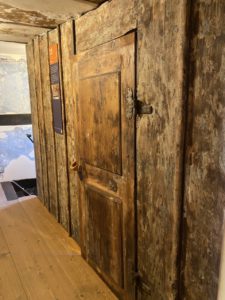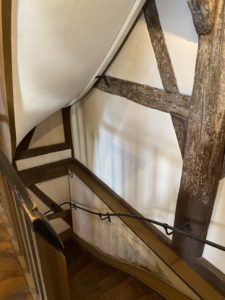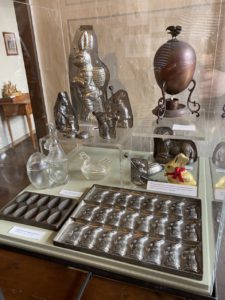Last year I attended the AWS Nürnberg Meetup Group (via Zoom) and learned a couple things: 1) Nürnberg = Nuremberg, which I had previously naively thought was an entirely separate city 😂; 2) despite being technically located in Bavaria, Nürnbergers do NOT think of themselves as Bavarian but rather Franconian; and 3) the folks there are incredibly friendly. The organiser of the AWS group is Frank, and when I mentioned that I’d like to visit his city someday, he said to let him know and he’d give us a personal tour. But nobody actually means things like that when they say it, right?
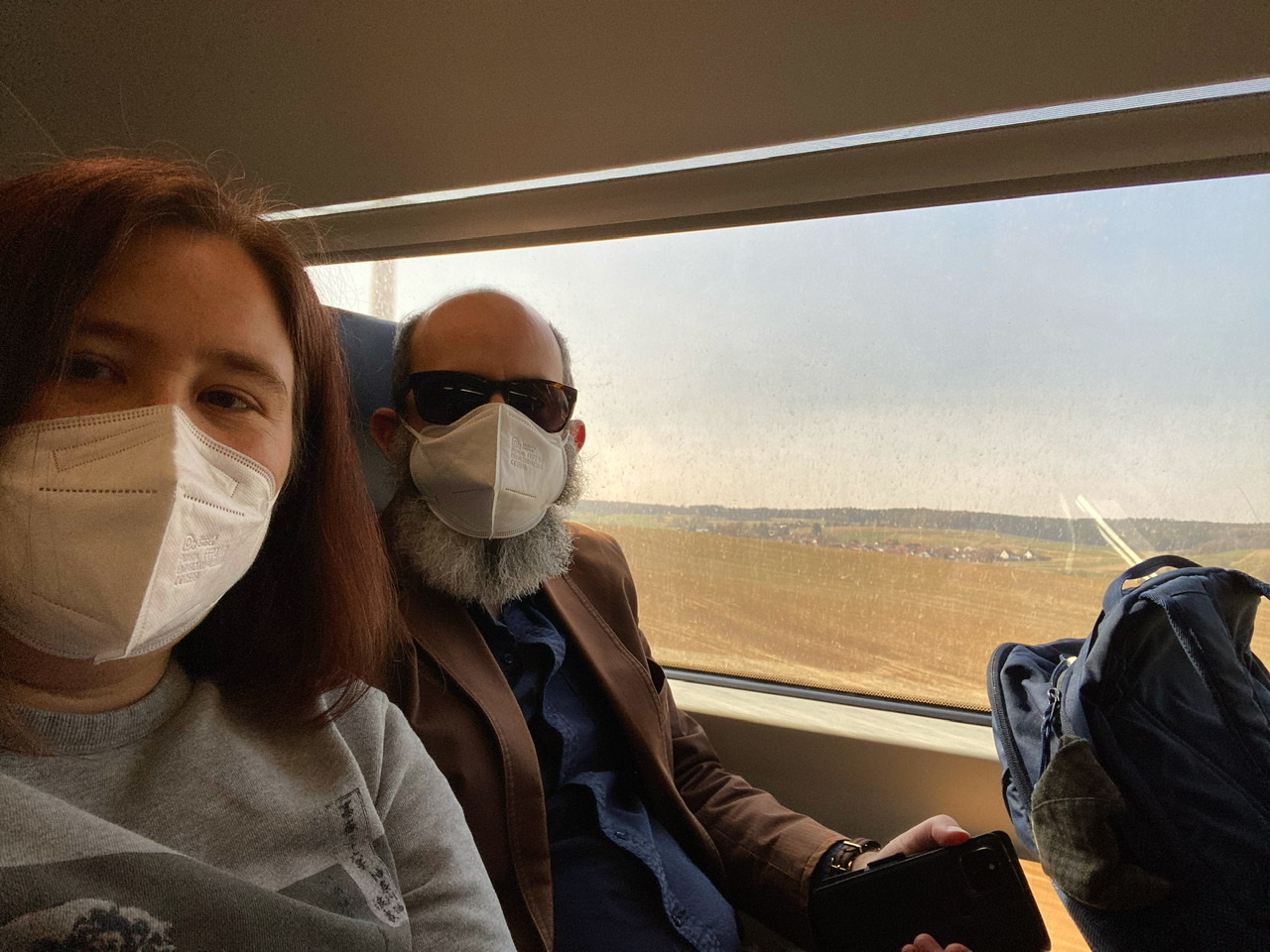
At any rate, two weeks after we got home from Vienna we boarded a Friday evening train to Nürnberg. It’s a very fast trip from Munich (less than 90min) so we were there well before the sun set.
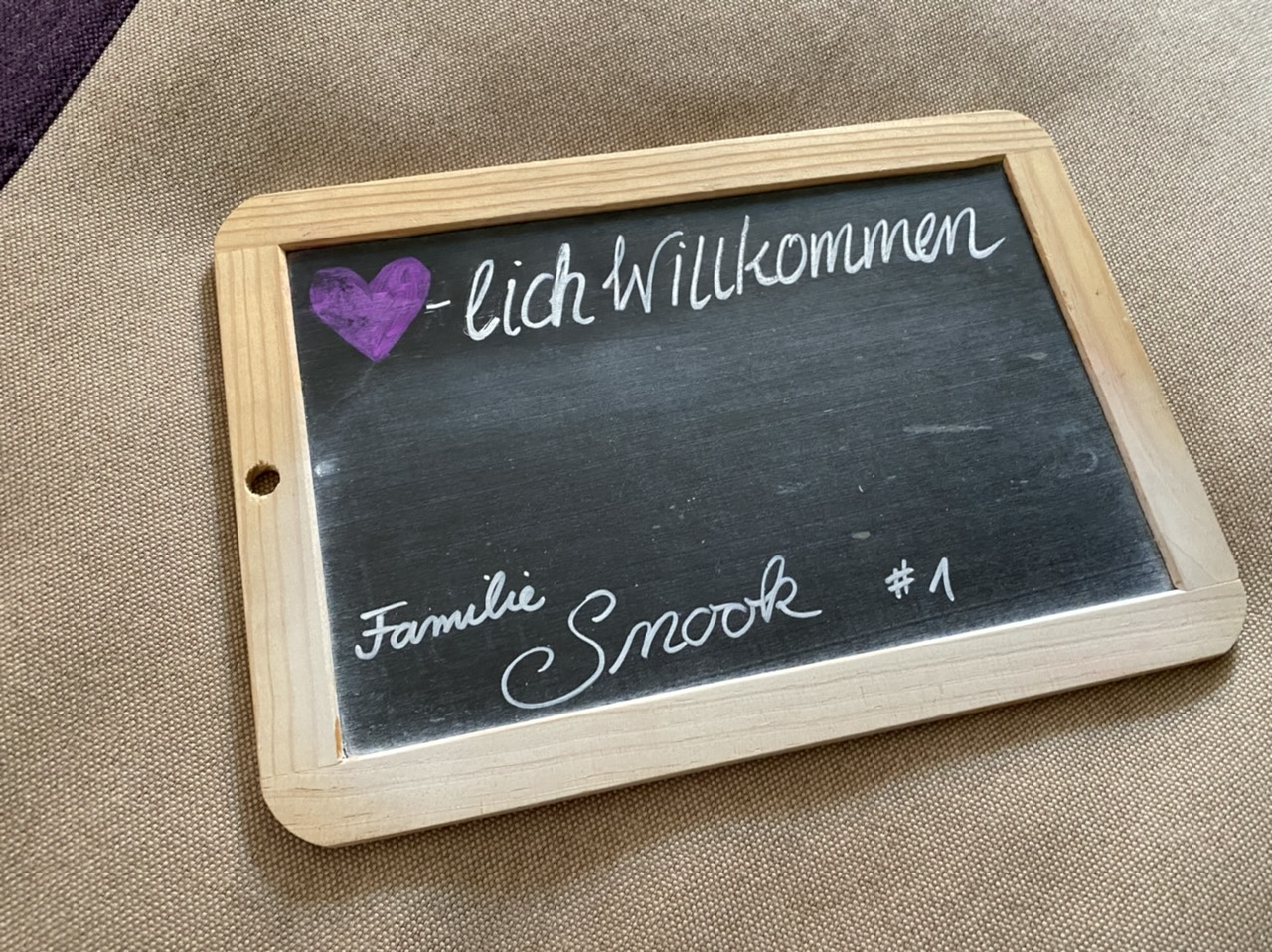
Um, how cute is that? We had booked a room at Hotel Elch (Elk), which looked to be pretty centrally located to everything we wanted to see. Our room was on the very top floor, right underneath the roof, and without an elevator it was a decent hike up maybe 4 flights of stairs. That’s what you get when you stay in a heritage building.
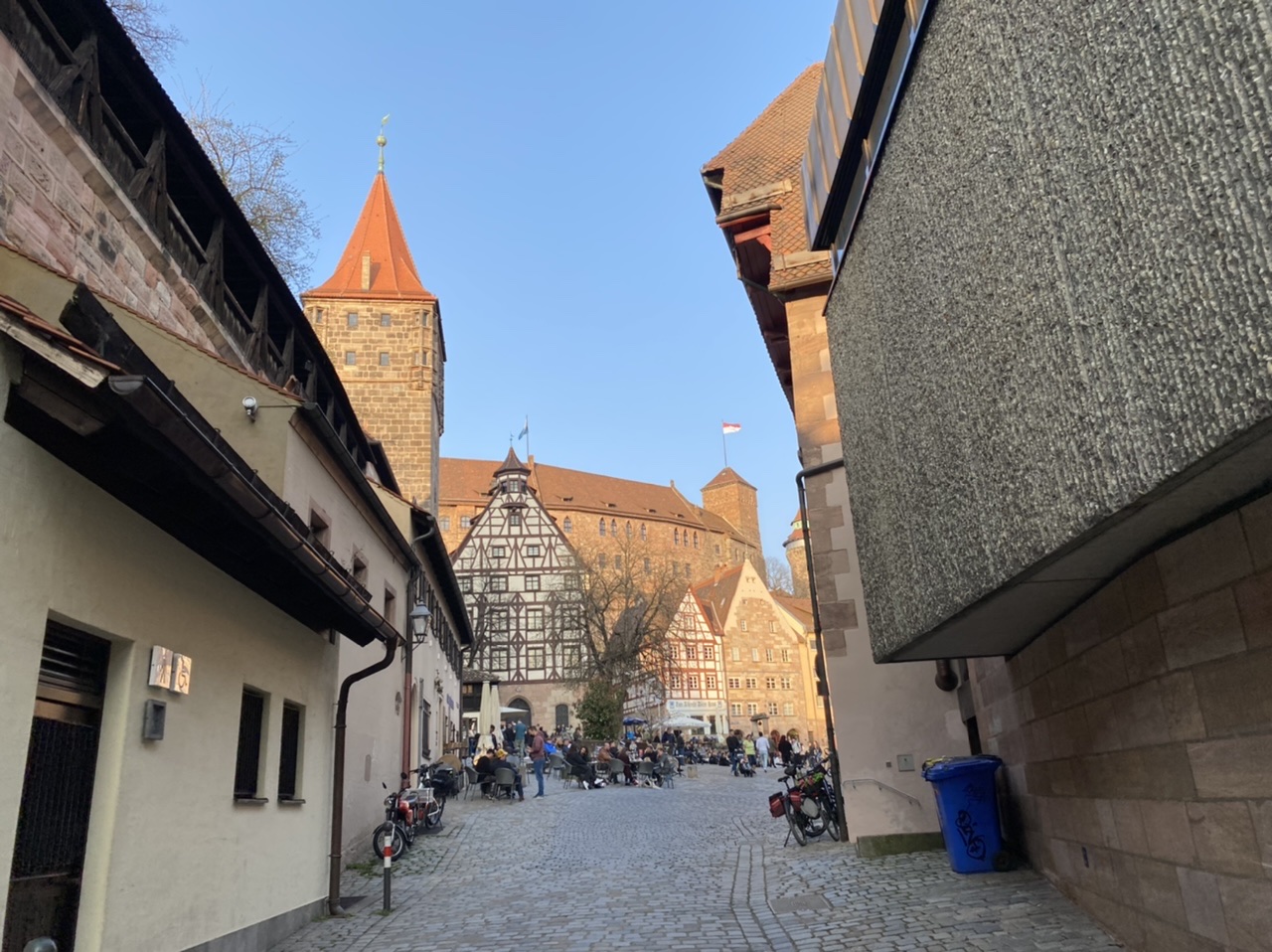
Frank had given us a tip to make sure to come on a weekend with nice weather. We’d timed it well and the forecast was nothing but blue skies. We dropped our stuff and went for a wander. The center of Nürnberg feels very medieval with its cobbled streets, city walls, and castle looming up on the ridge. Our first destination was the Hausbrauerei Altstadthof, which is the starting point of the Historische Felsengänge tour.
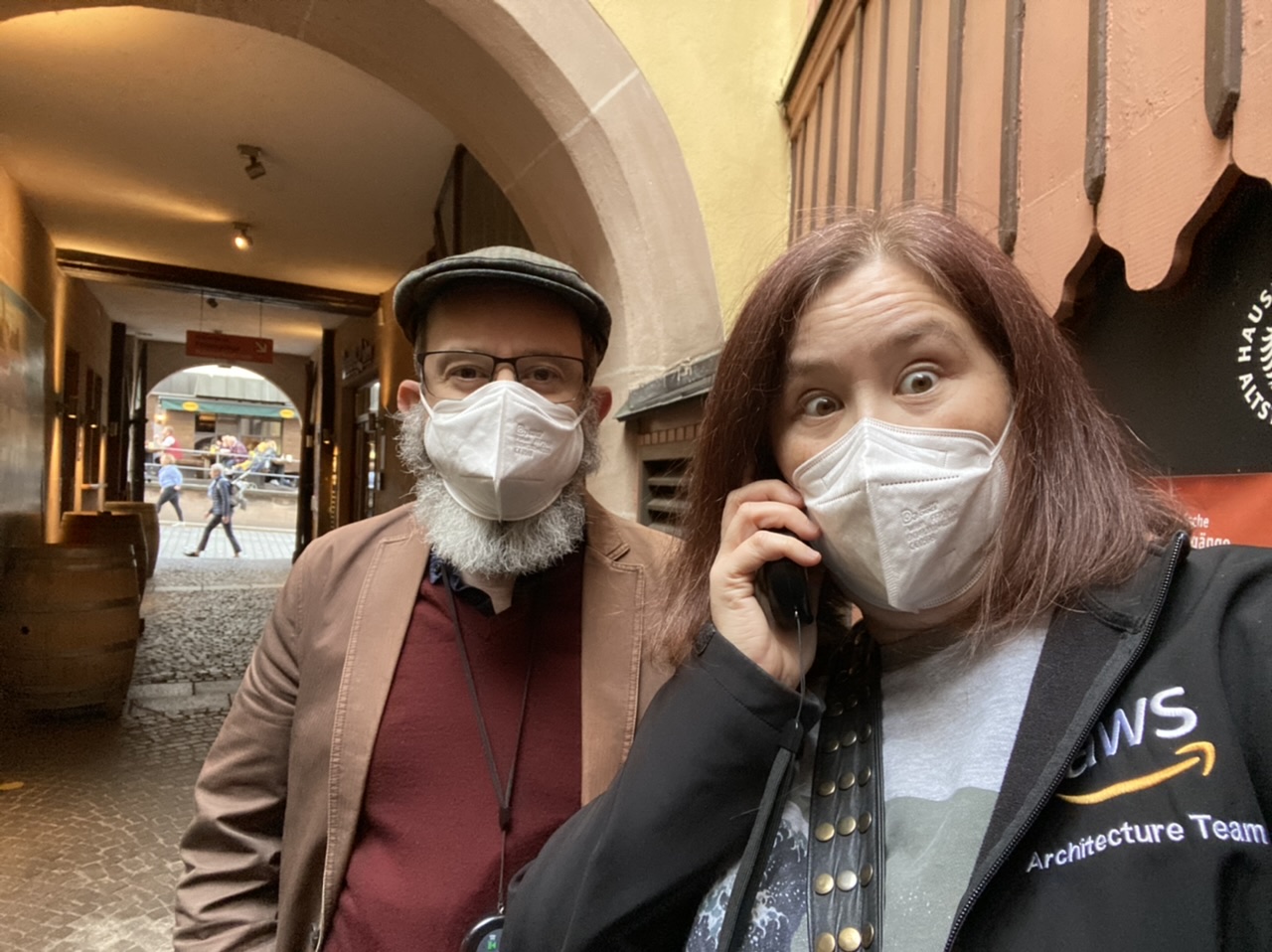
There were only a few of us on the tour. The guide was a friendly older local guy who spoke only German, so the Snook and I were offered electronic devices where we could punch in numbers at each stop and hear an explanation in English.
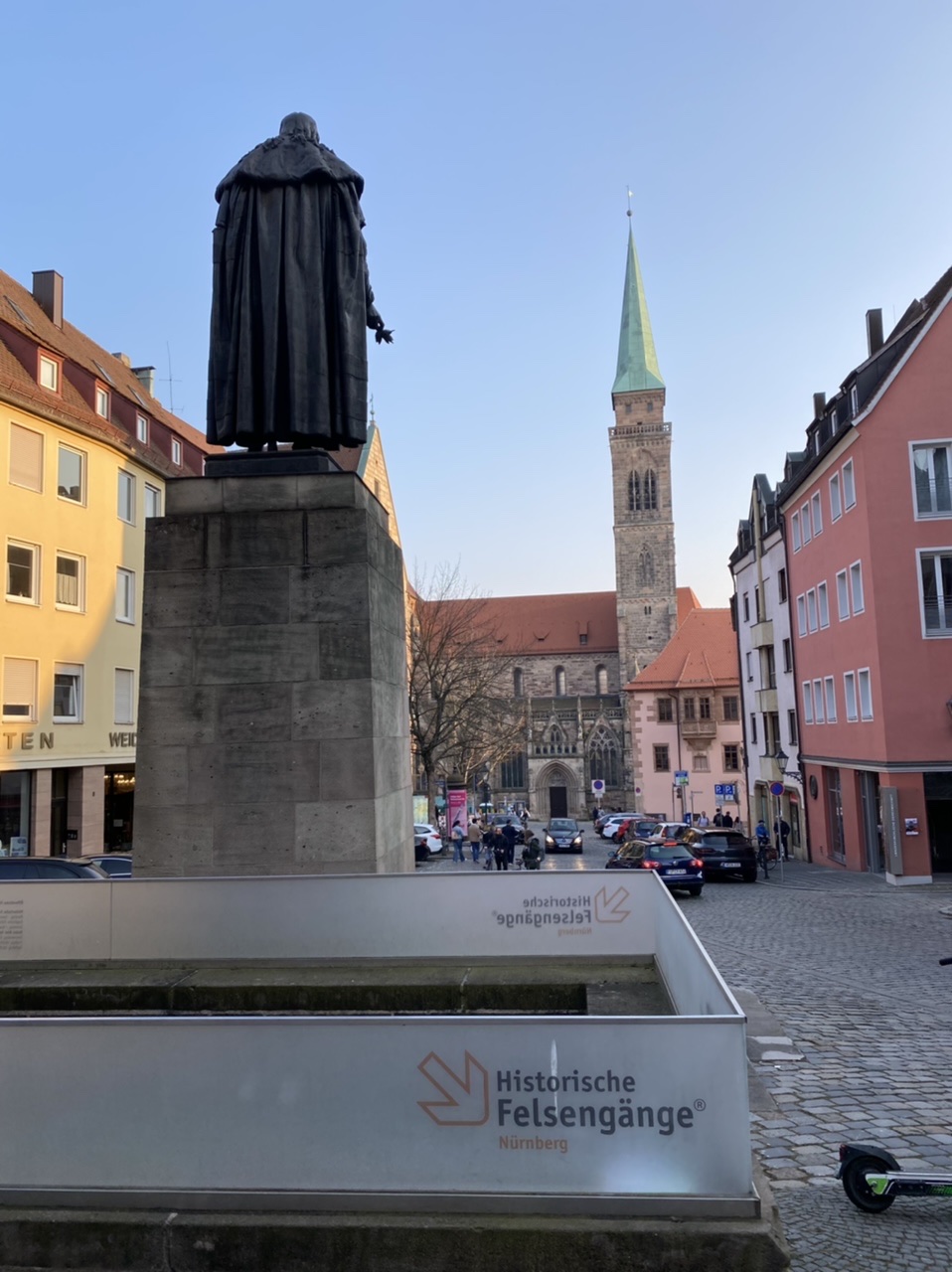
Felsengänge means “rock passages” and refers to the extensive system of tunnels and cellars carved into the rock beneath Nürnberg. While there are many access points around the city, the main tourist entrance is in Albrecht-Dürer-Platz, right next to the statue of the famous local artist and facing St. Sebaldus Church. We went down the stairs and our guide unlocked the heavy door and ushered us inside.
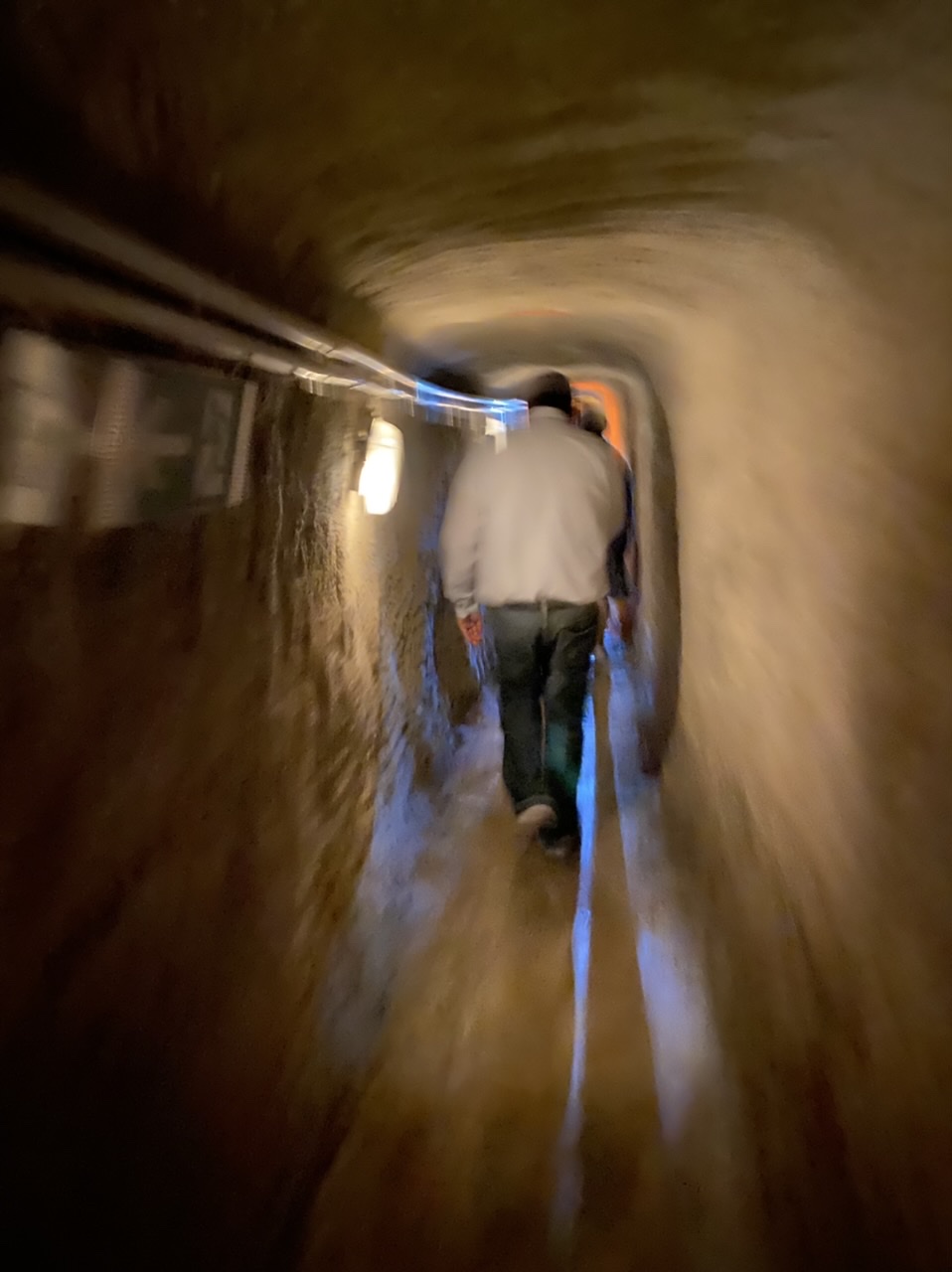
The tunnels were built from the 14th century onwards and were mainly used in the brewing of beer. At one point, Nürnberg had more than 40 breweries based in the city, and each had a rock cellar for fermenting and storing their beer. The tunnels were eventually joined up and they were used during World War 2 as bomb shelters for the locals and to store precious art as well. Some of the connecting tunnels are pretty small (I had to hunch not to hit my head) so definitely this isn’t a tour for someone with claustrophobia.
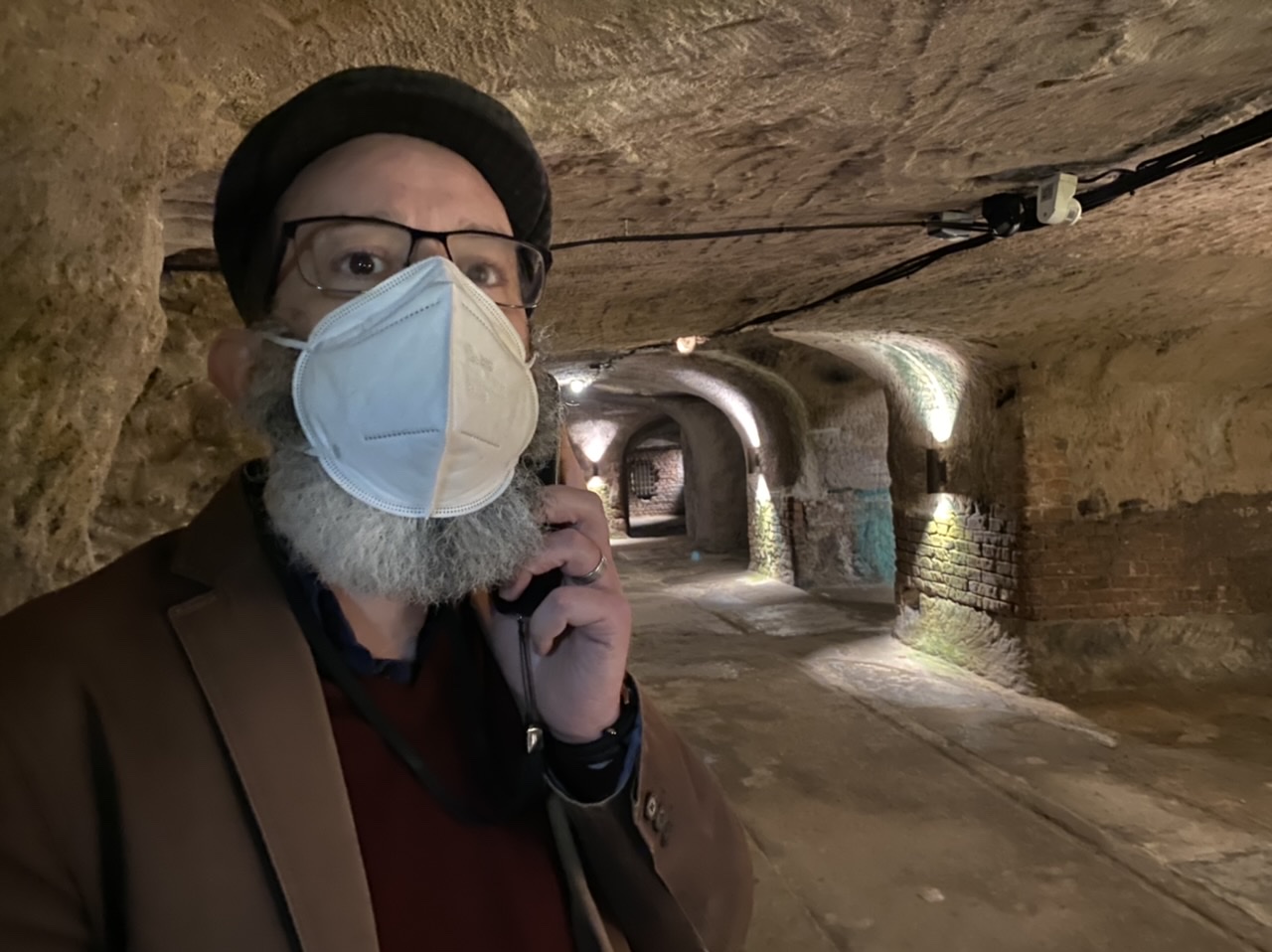
There were various stops along the way as we learned about the city, its history of beer making, and how the tunnels were used. We also learned about the Reinheitsgebot, the famous German beer purity law that was adopted across Bavaria in 1516.
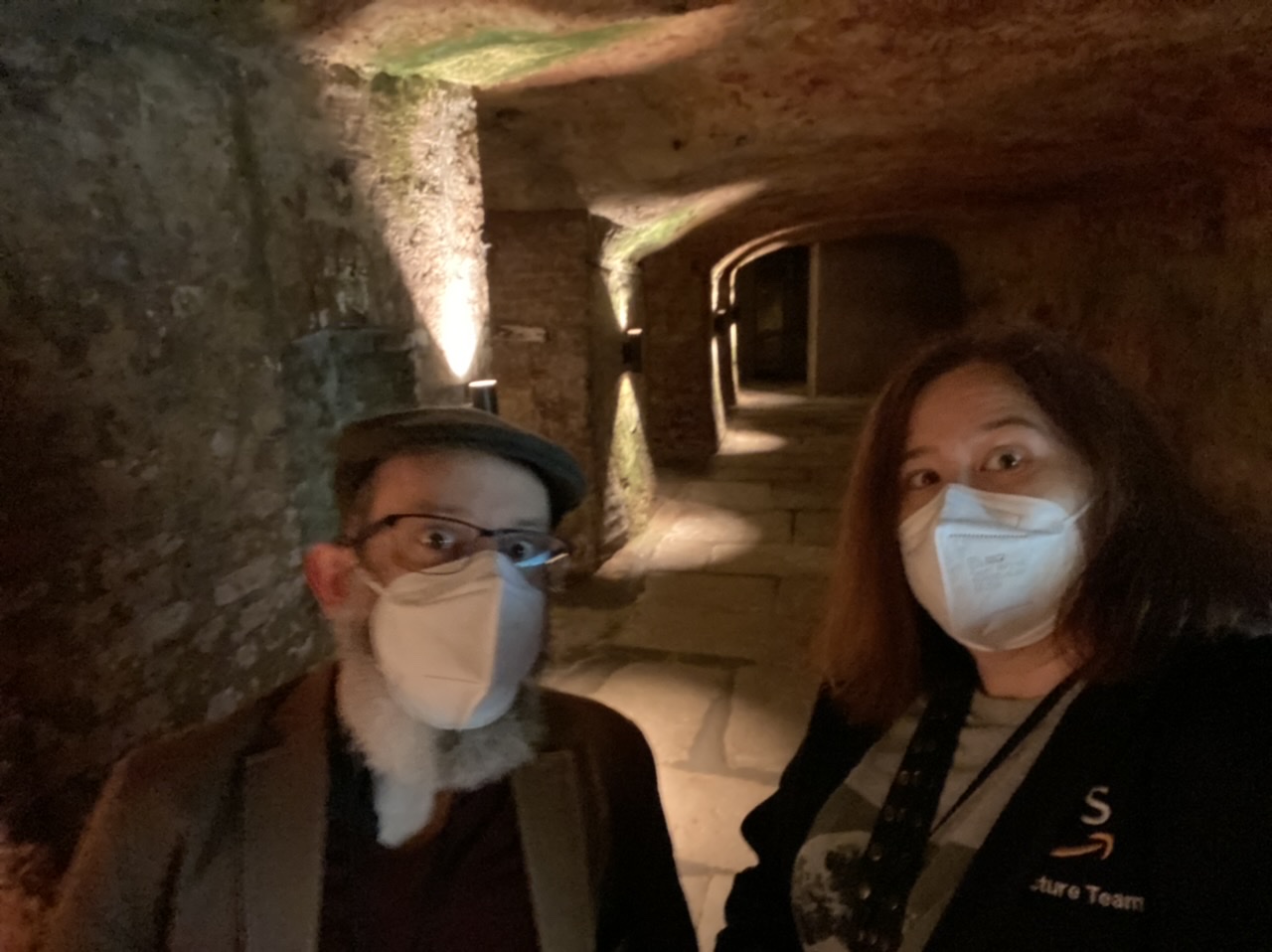
There were also some informational exhibits along the way. Many showed medieval manuscripts with illustrations of monks brewing beer, often with a six-pointed star dangling above the pot. Our guide explained that it had nothing to do with Judaism, but instead was known as the Brewer’s Star meant to ward off fires and bad spirits.
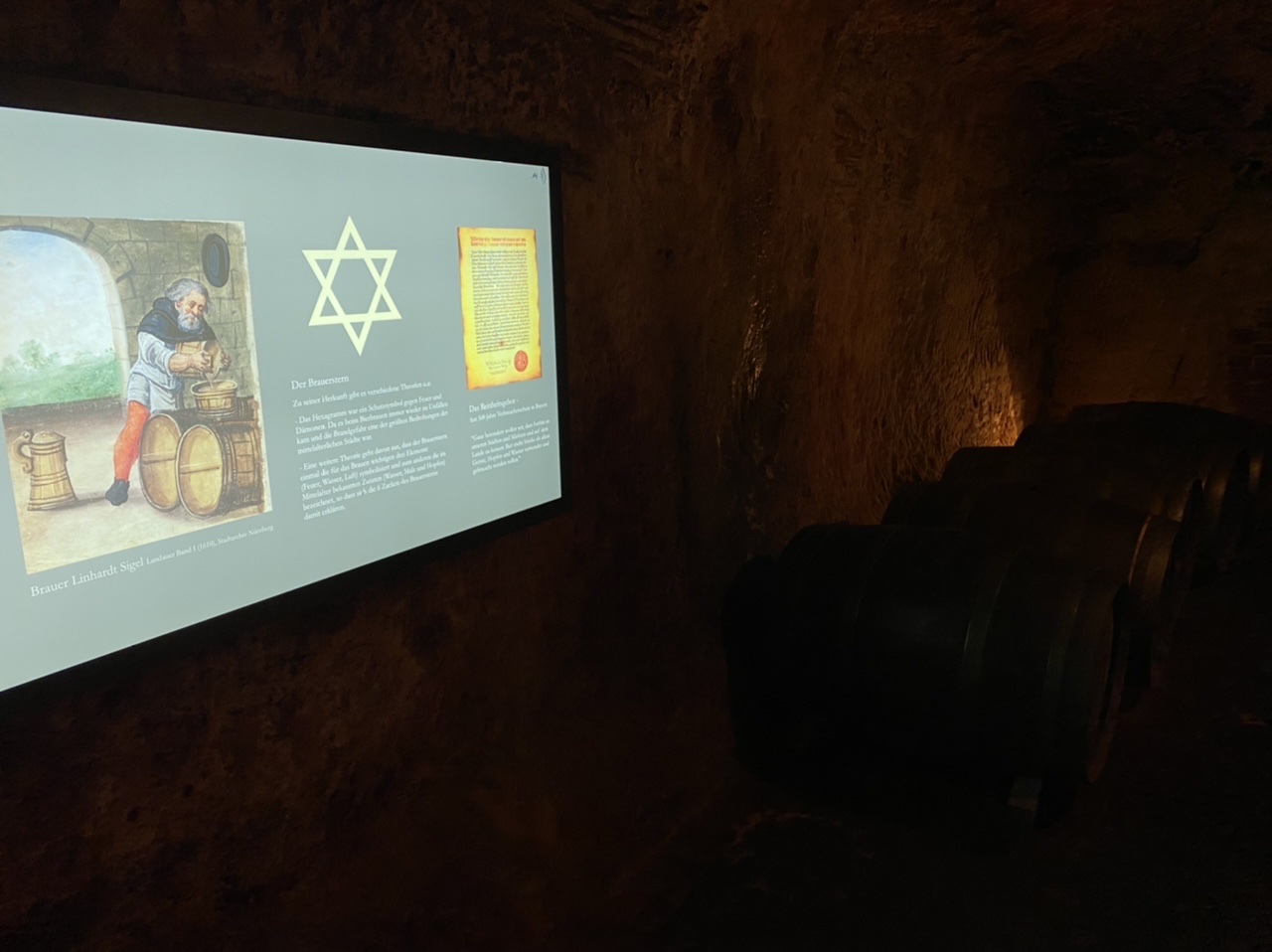
The cellars were dug very deep, up to 4 stories in places. However over the years some of them were altered or destroyed, and so changes have been made to conserve them. Our guide told us how in this vault, there are columns, beams, and support rods holding the walls and ceiling to ensure they don’t collapse.
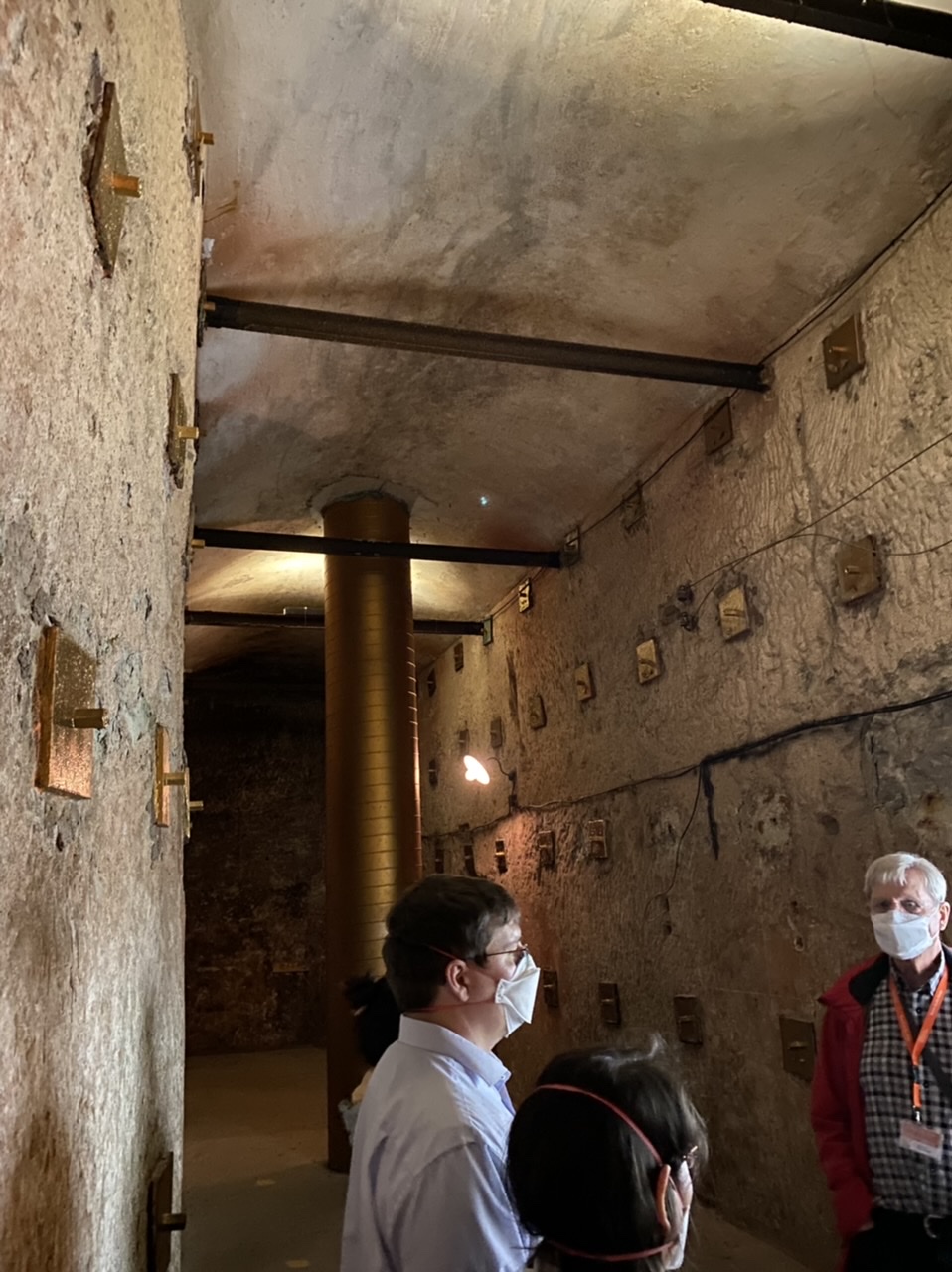
We also learned how ice was cut from lakes and transported to the cellars in the winter, where it would slowly melt over the summer and keep the tunnels cool enough for the beer fermentation. The sandstone also filtered groundwater, and we saw examples of primitive “pipes” made from bored-out logs that were used to transport the water.
Towards the end of the tour I jokingly asked the guide if there were any “Geister” (ghosts) down there. “Oh yes!” he answered. 😳
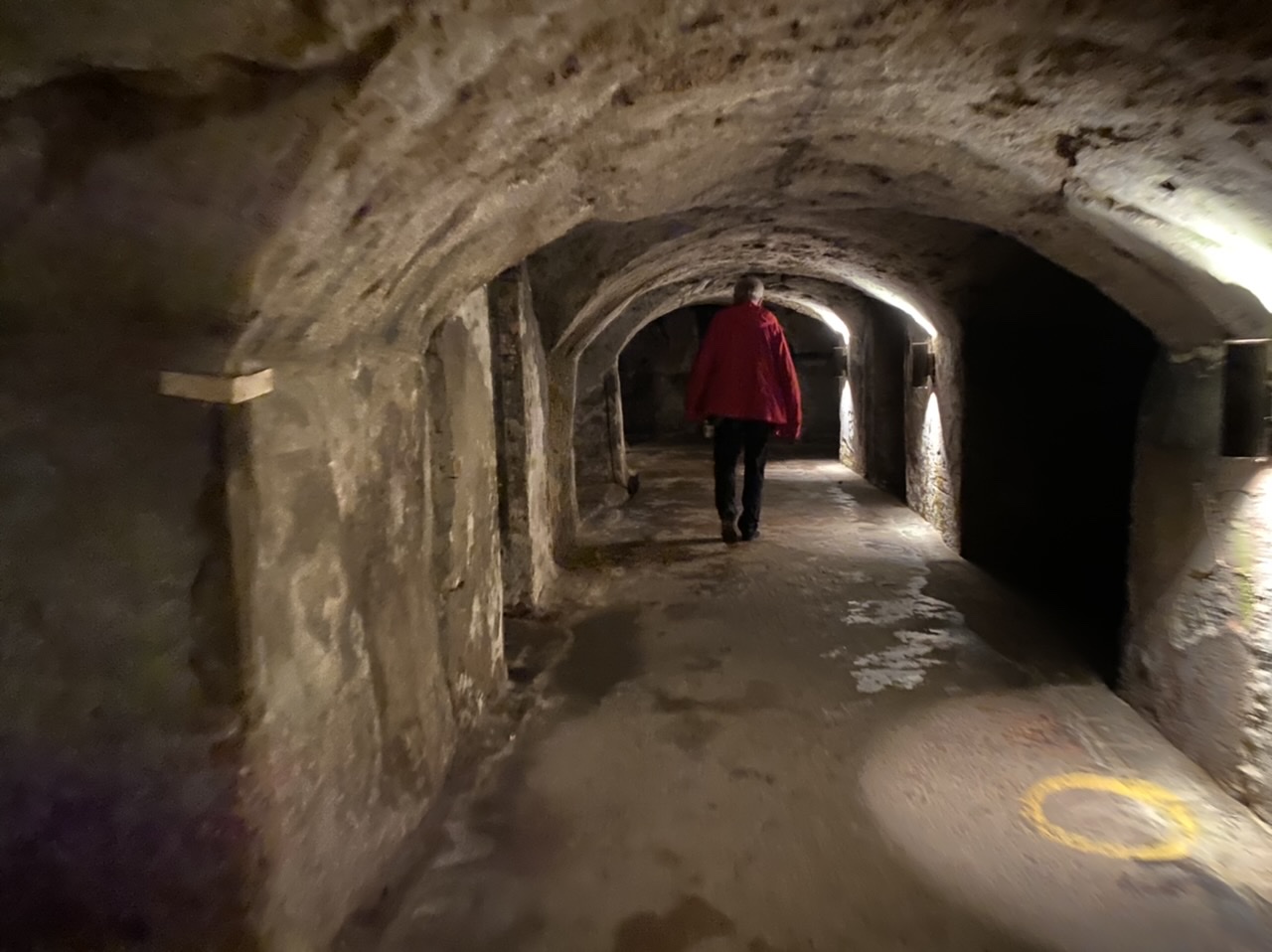
The tour ends back up at ground level where you are offered a sample of the famous local Rotbier (red beer) from the Altstadthof brewery.
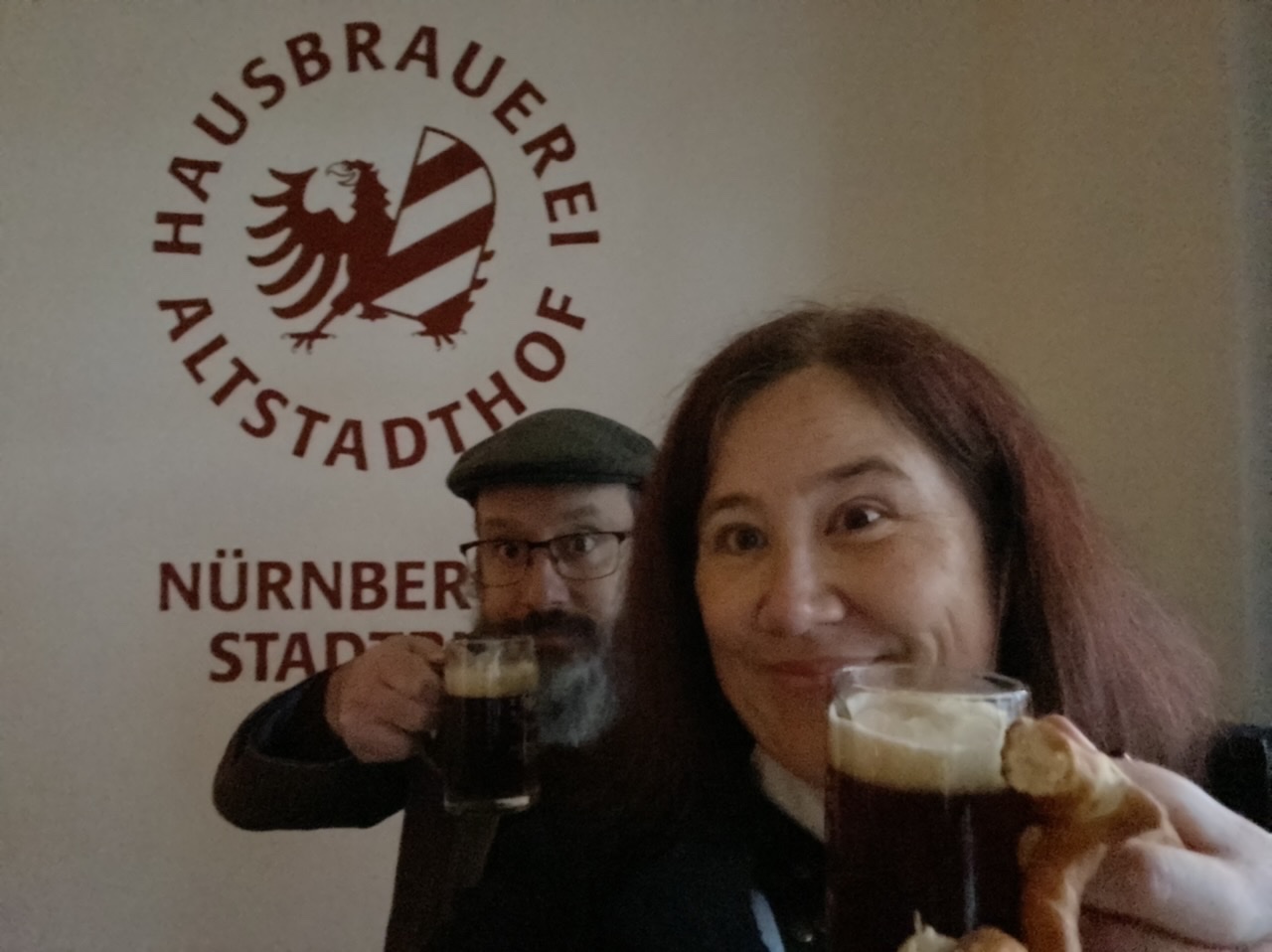
There’s also a distillery associated with the brewery, so we heard a bit about the process of making whisky and got to step inside one of the storerooms full of barrels. It smelled amazing. Needless to say, the Snook was in heaven.
After the tour, I had taken Frank’s advice and booked us in for dinner at the Brewery. We enjoyed some fine Franconian fare and sampled more of the beer…
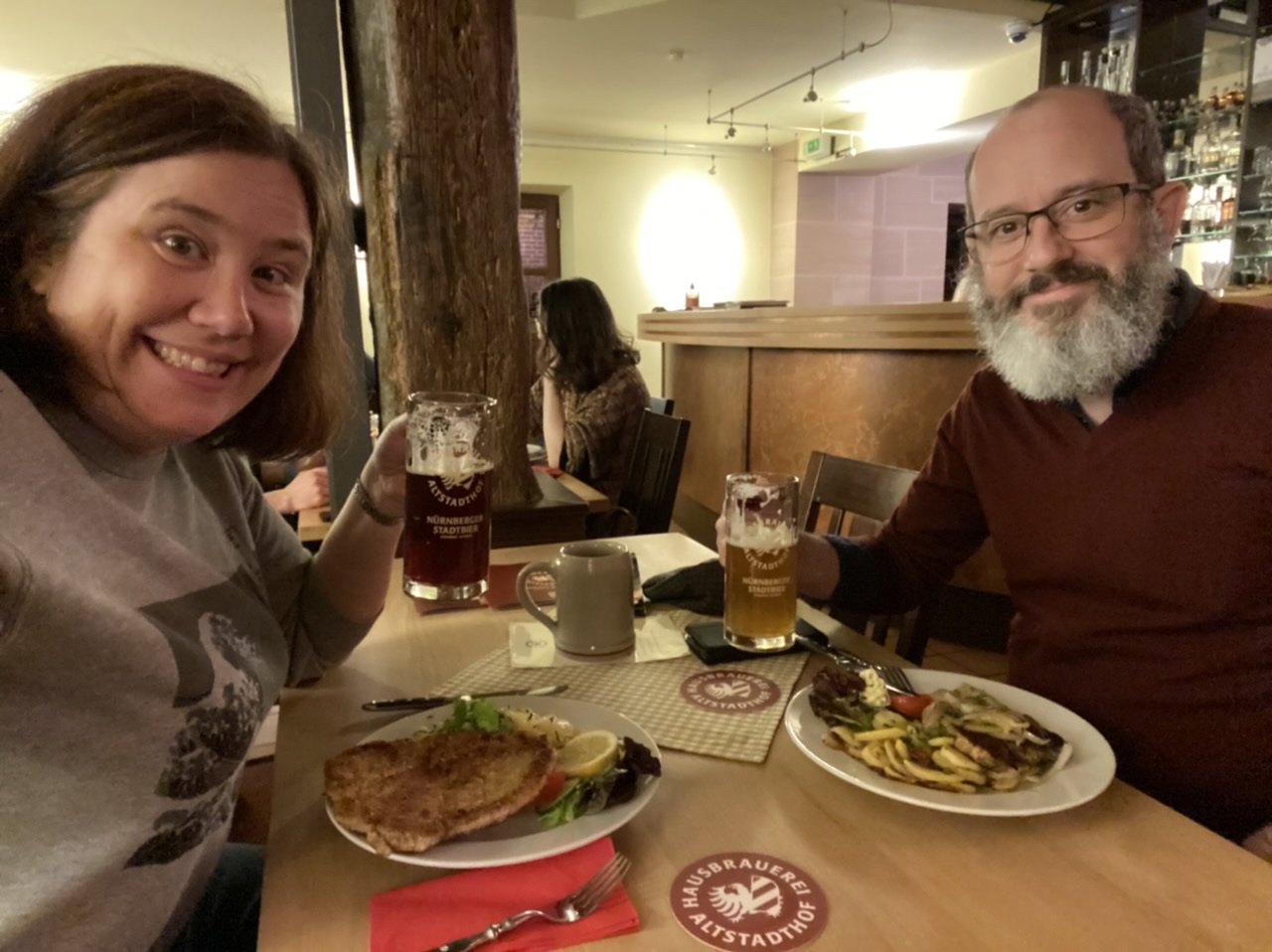
…and even a bit of their Bierbrand, which is distilled from beer itself. It’s similar to whisky but not exactly the same.
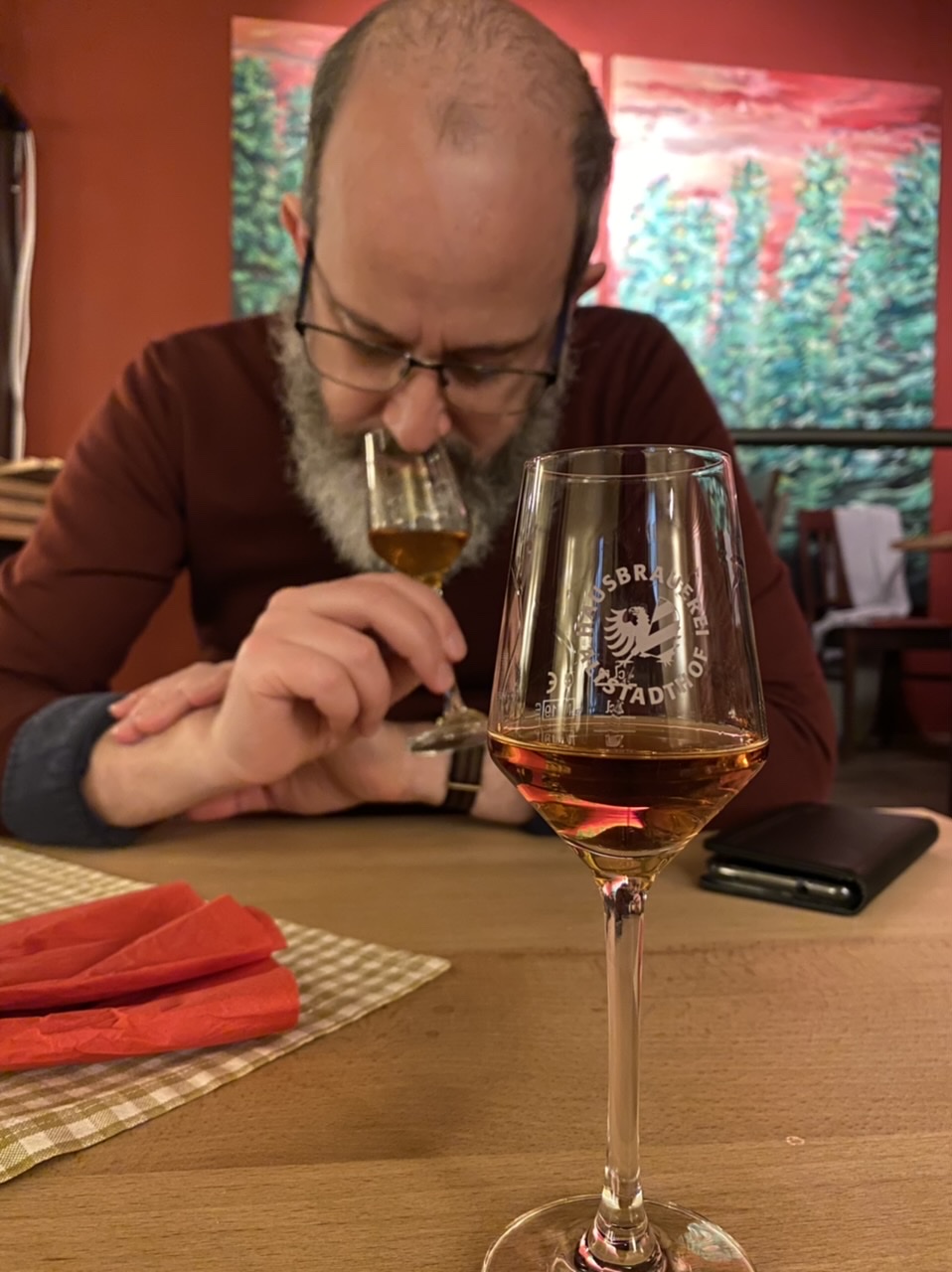
We decided to burn off some of those calories with a nighttime stroll around the city. We headed first to the castle with its dramatically lit walls and battlements.
From the castle we walked south down Burgstraße towards the Altes Rathaus (old city hall).
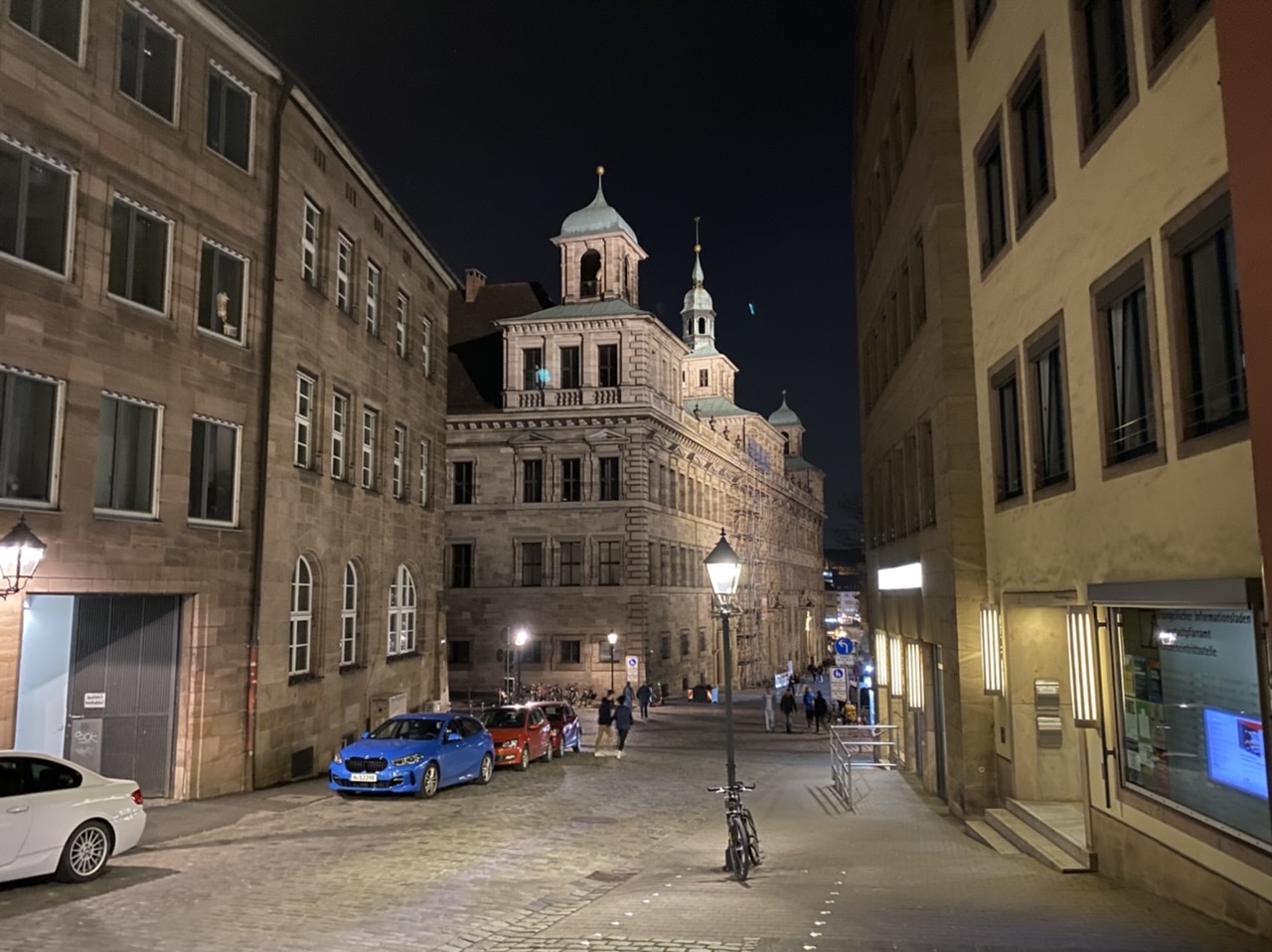
It stands directly behind St. Sebaldus Church.
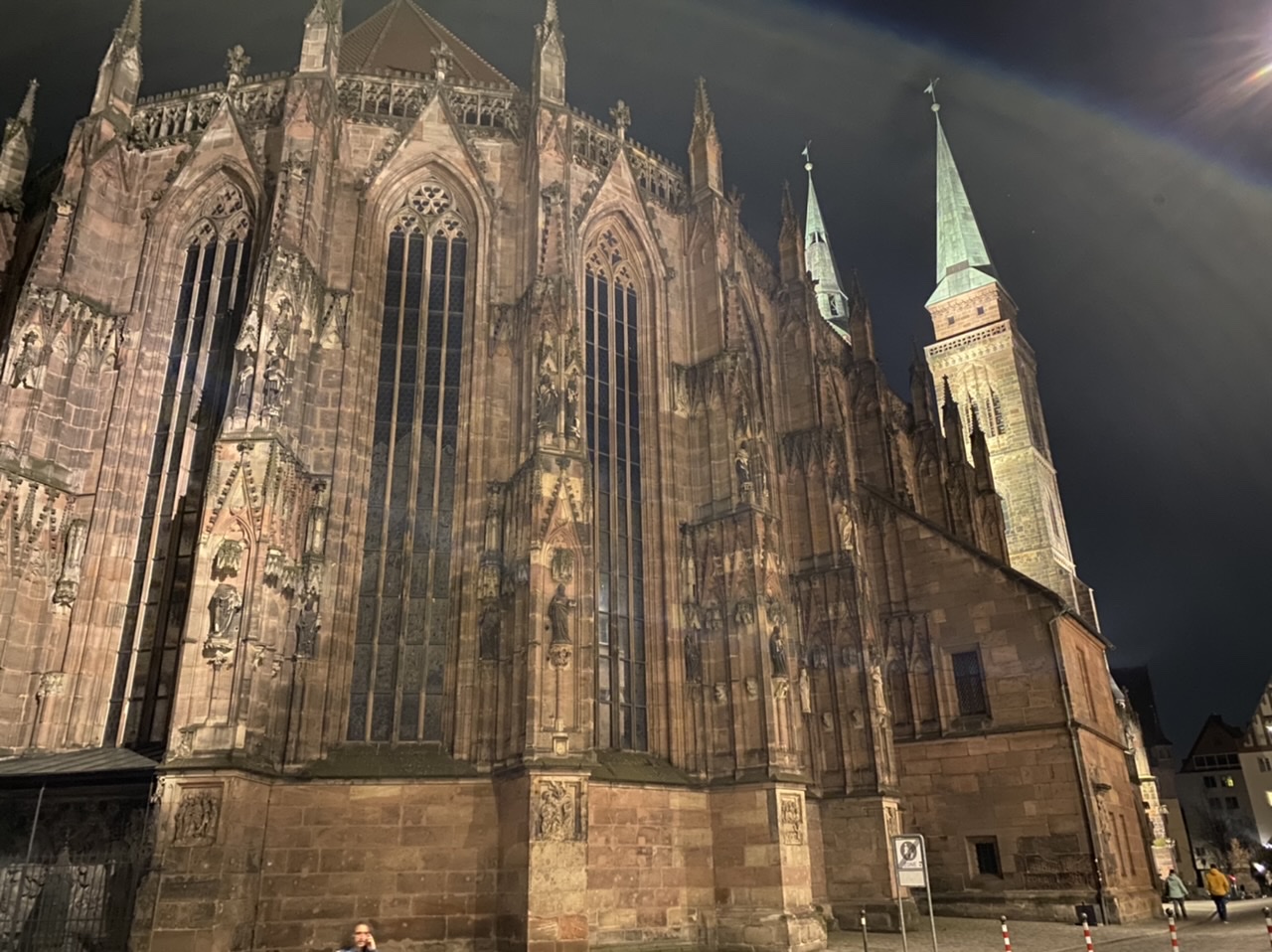
We continued on to the Hauptmarkt, the big public square where the world famous Christkindlesmarkt (Christmas market) is held each year. One of the attractions in the square is the Schöner Brunnen (beautiful fountain).
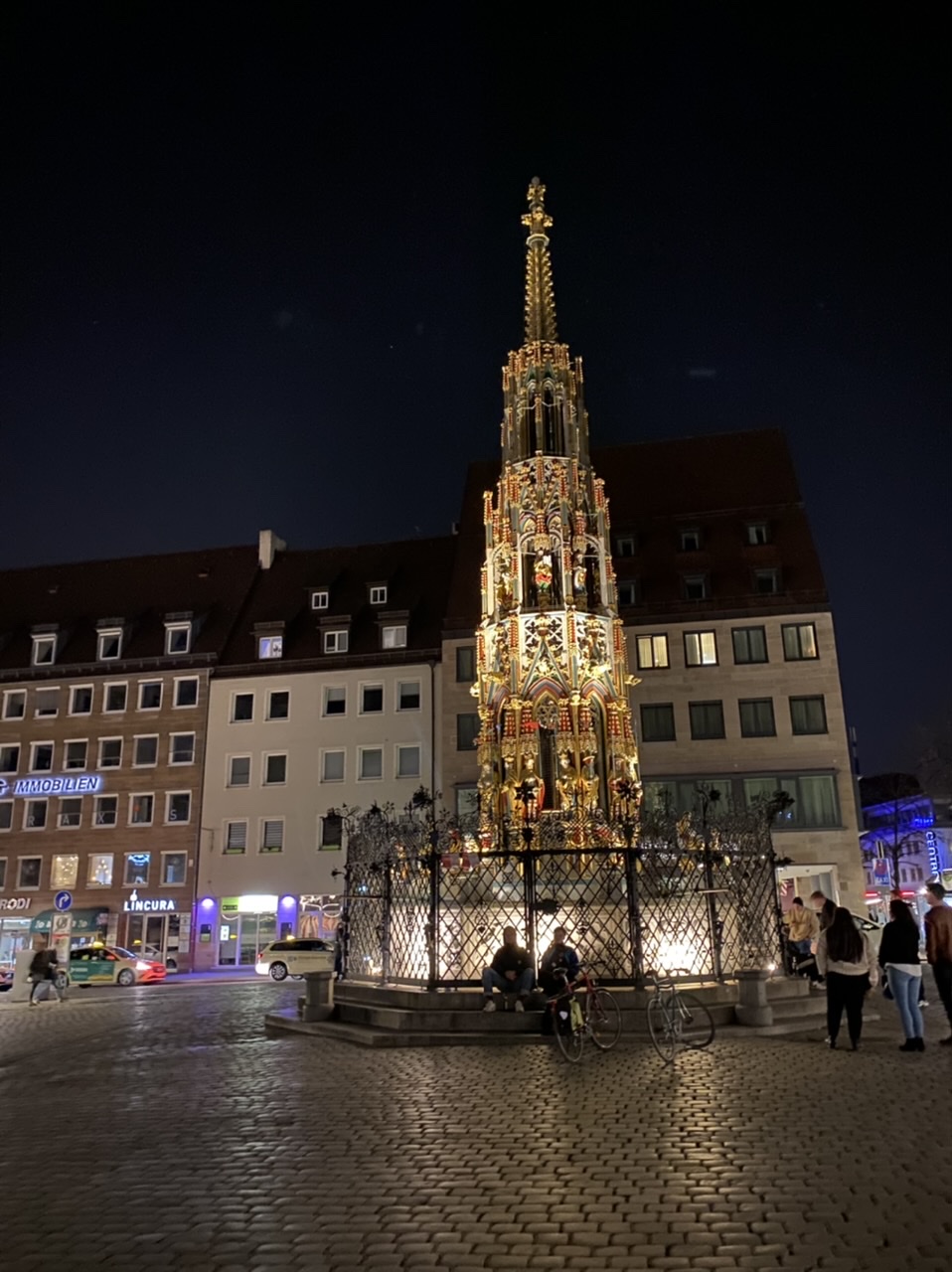
Nearby is the Frauenkirche (Church of Our Lady), which we would discover the next day has a very famous clock.
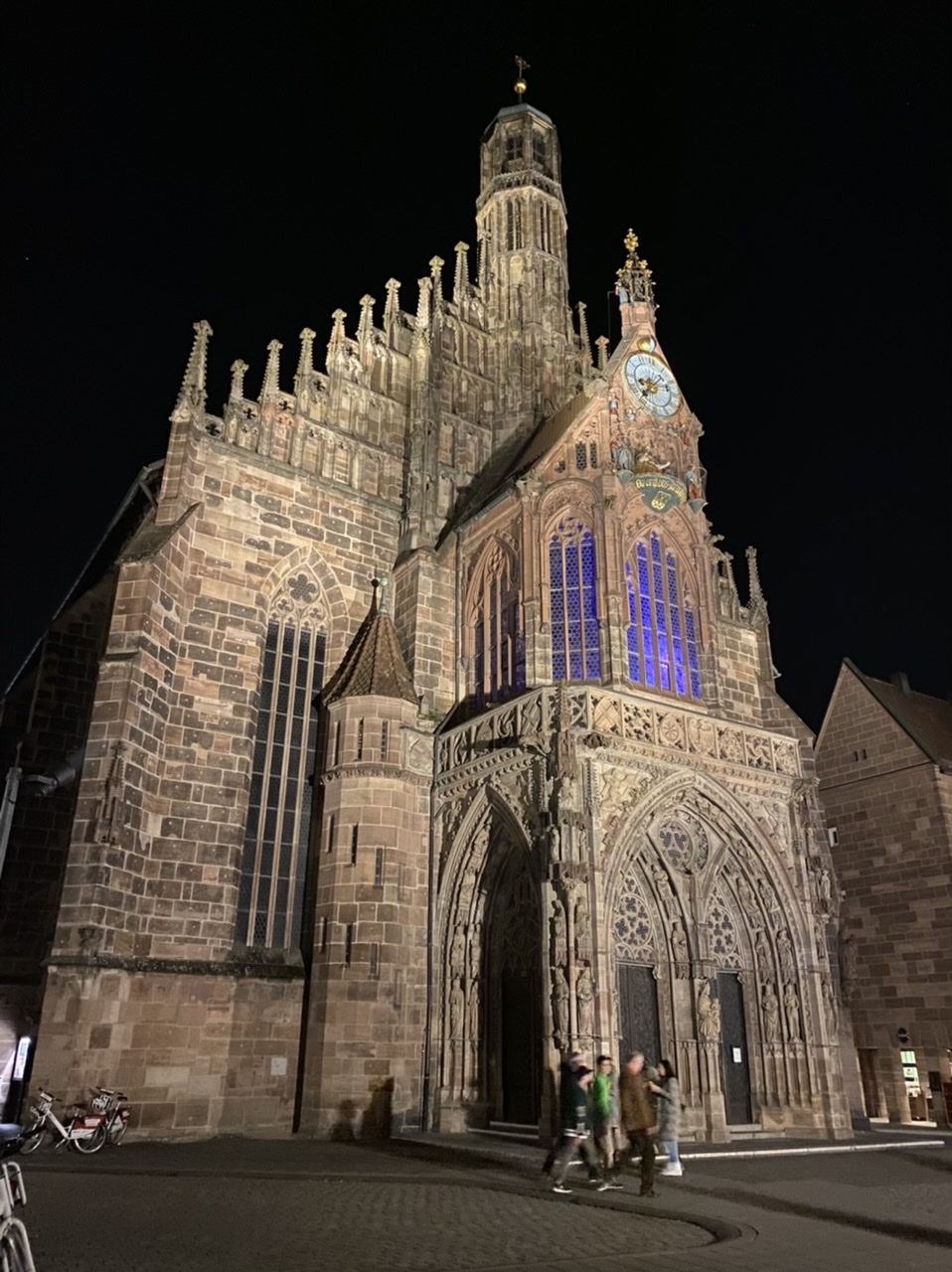
The river that flows through Nürnberg is the Pegnitz, and we crossed over the Museumsbrücke on our walk. From one side we could see the Fleischbrücke, a late Renaissance bridge that has stood for more than 400 years. On the other side we had a view of the Heilig-Geist-Spital built over the river. It was originally a hospital and now it’s an old folks’ home.
We headed back towards our hotel. Along the way we passed by St. Sebaldus Church again, this time from the front. St. Sebaldus is the patron saint of Nürnberg.
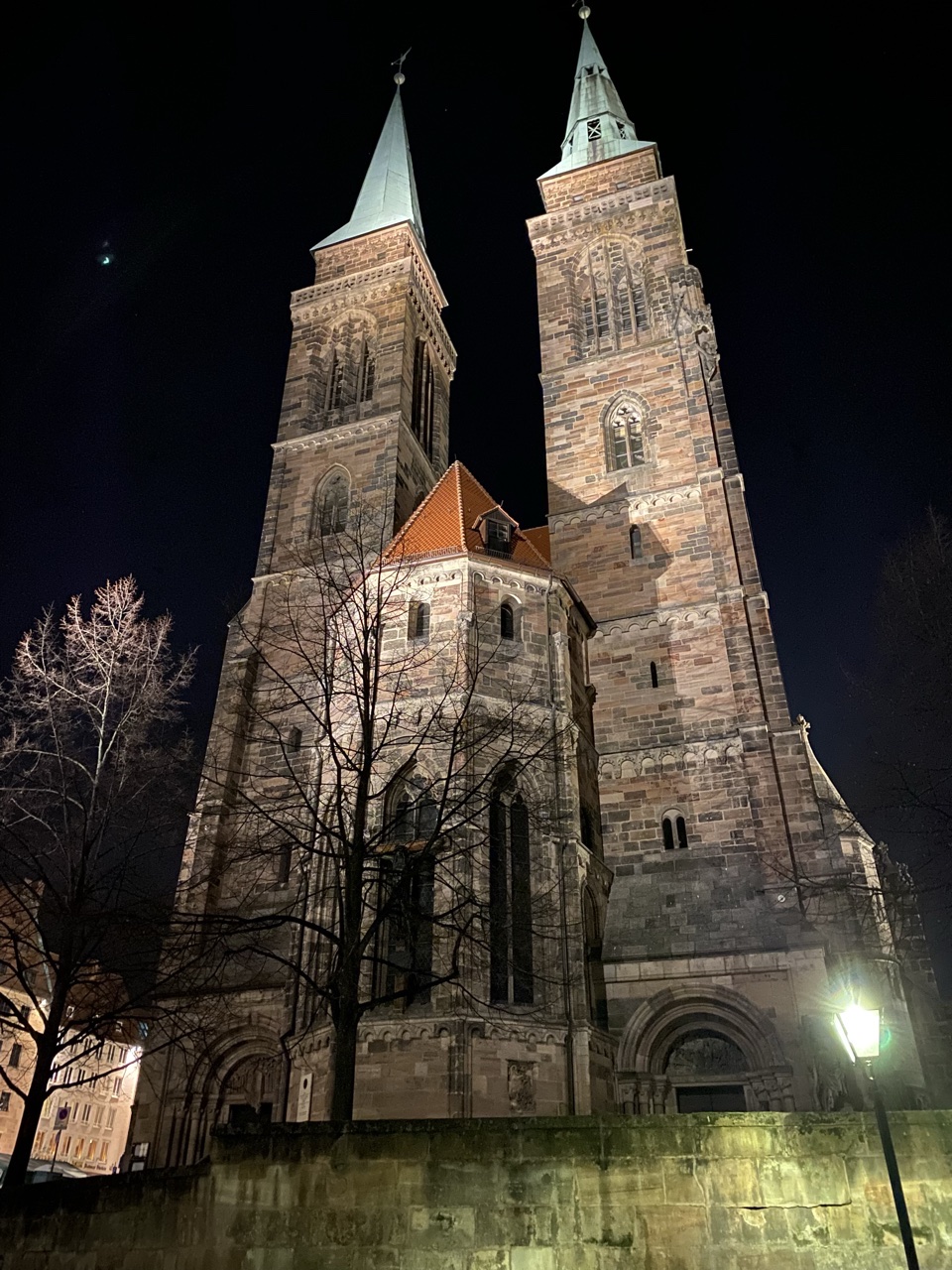
Frank had told us he would pick us up at our hotel bright and early the next morning. To my surprise and delight, he had an entire day planned out for us! We started off by heading back to the Hauptmarkt to see the Schöner Brunnen in the daylight.
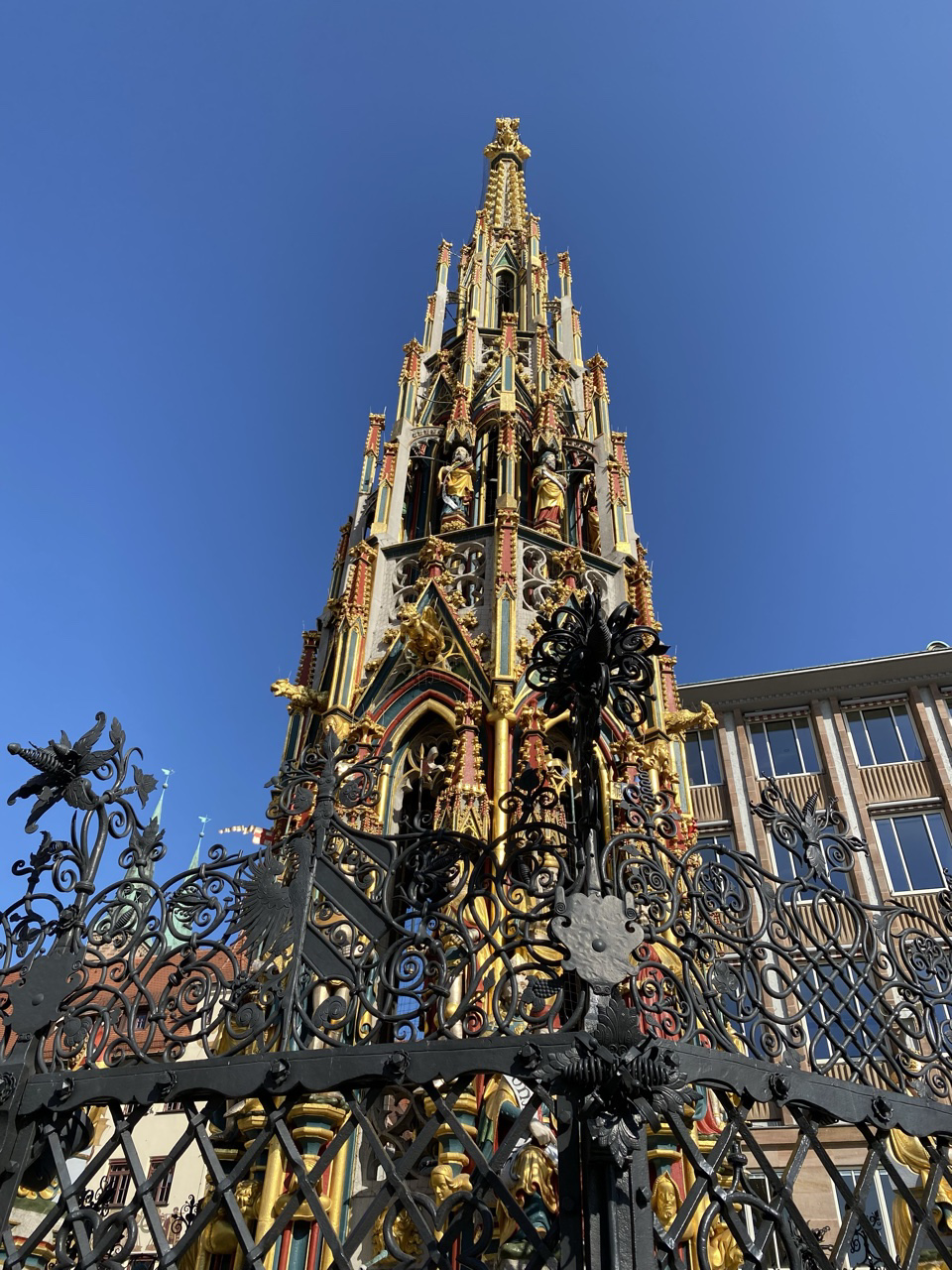
There are two rotatable(!) brass rings embedded into fence around the fountain. Frank told us the story of the rings, which are said to bring good luck if you touch them. I couldn’t resist…
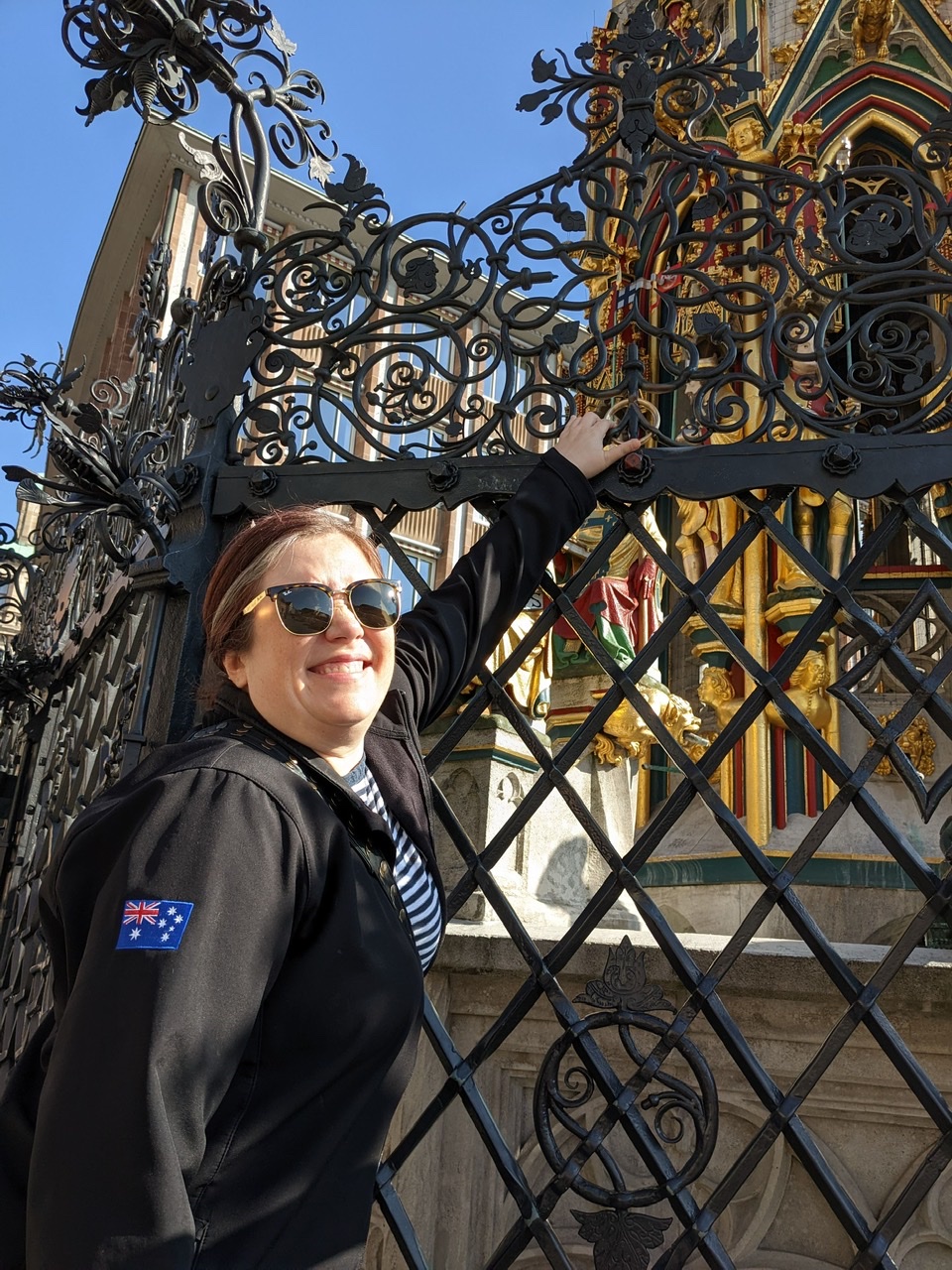
Fountain selfie!
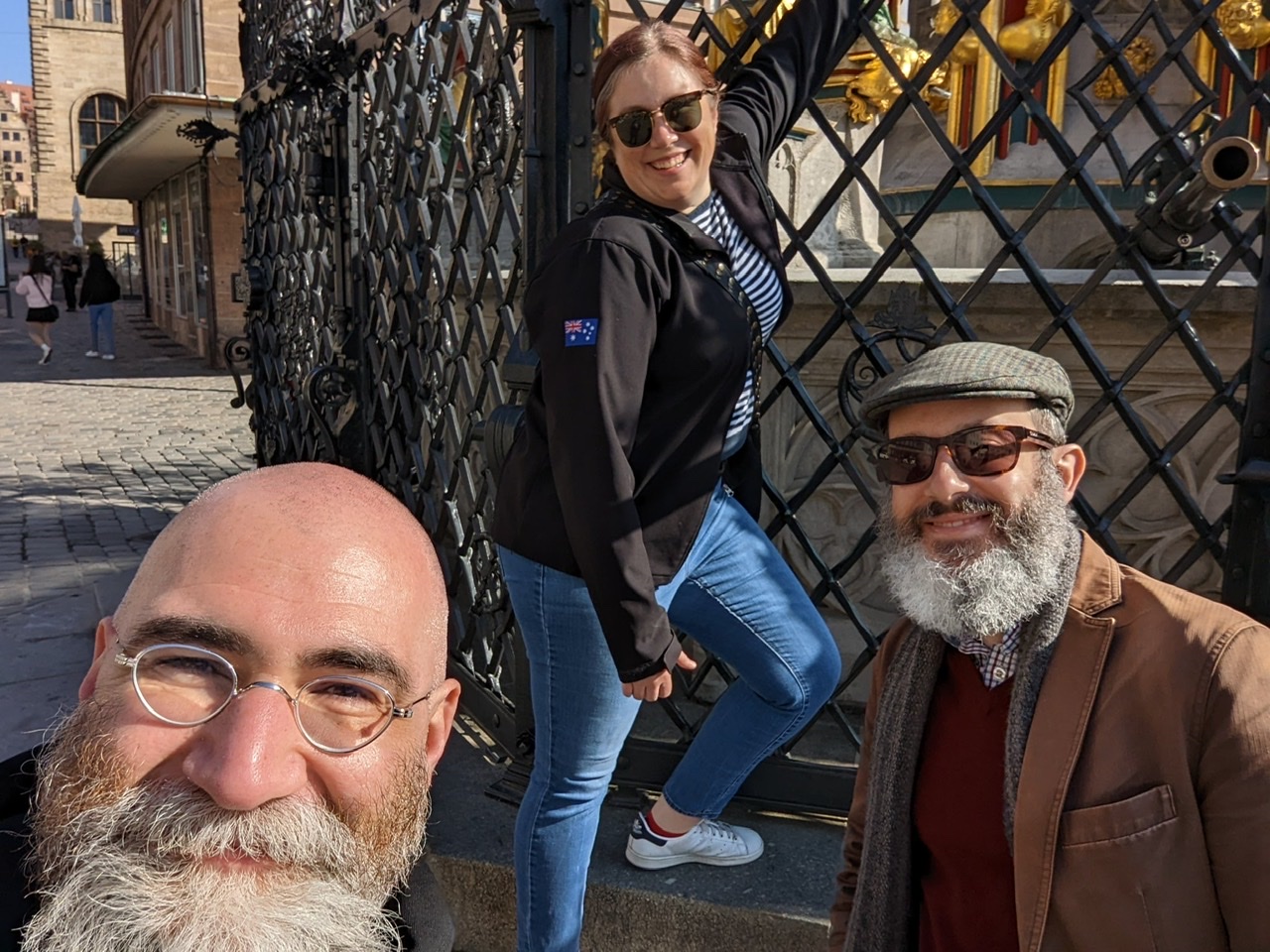
We also finally went inside St. Sebaldus Church after walking all around it the night before. The church suffered serious damage from WW2 bombs but was subsequently restored.
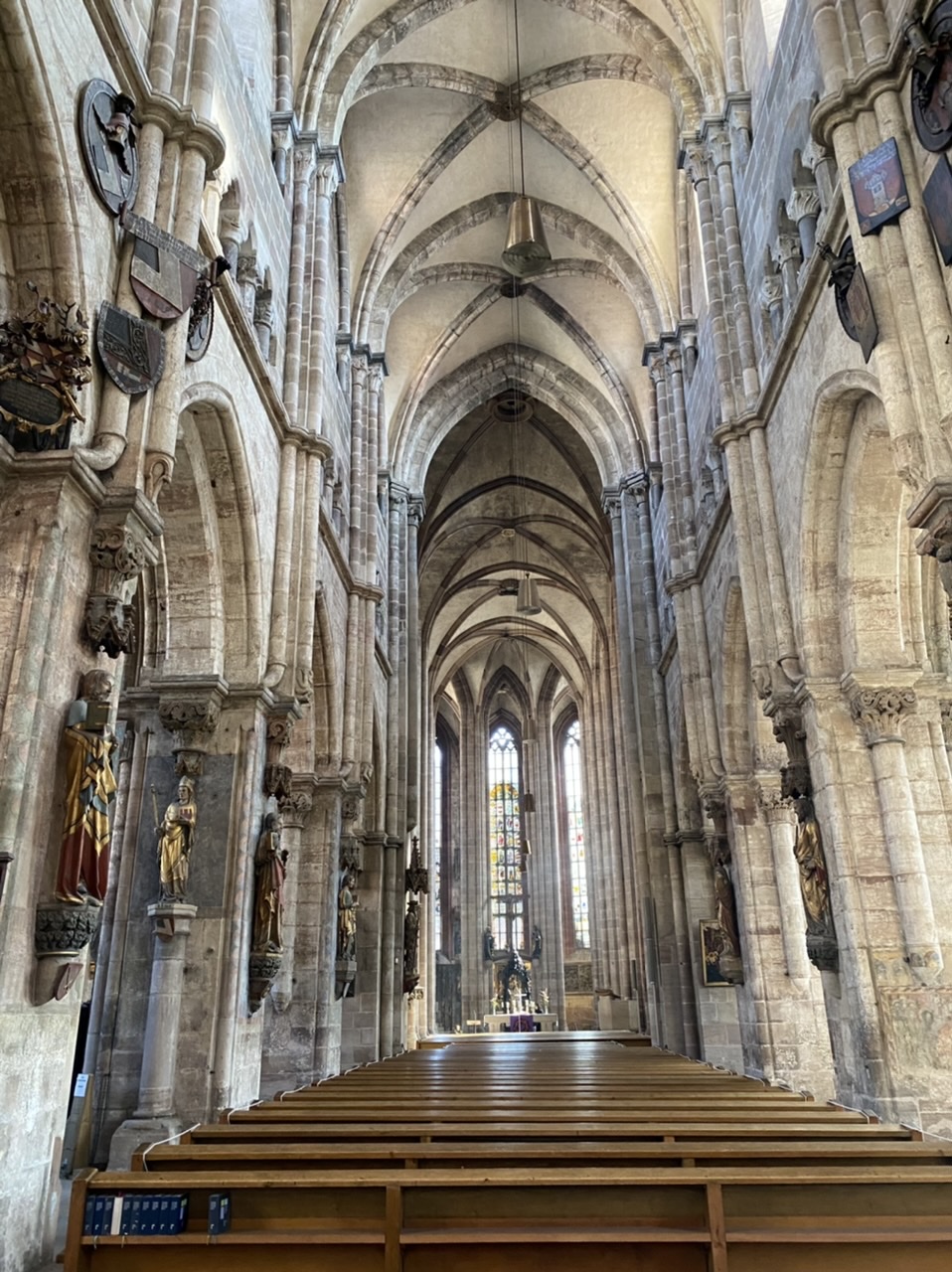
Frank then led us up the ridge to the castle to check out the views over the city. I was very grateful for his advice to visit on a weekend with good weather!
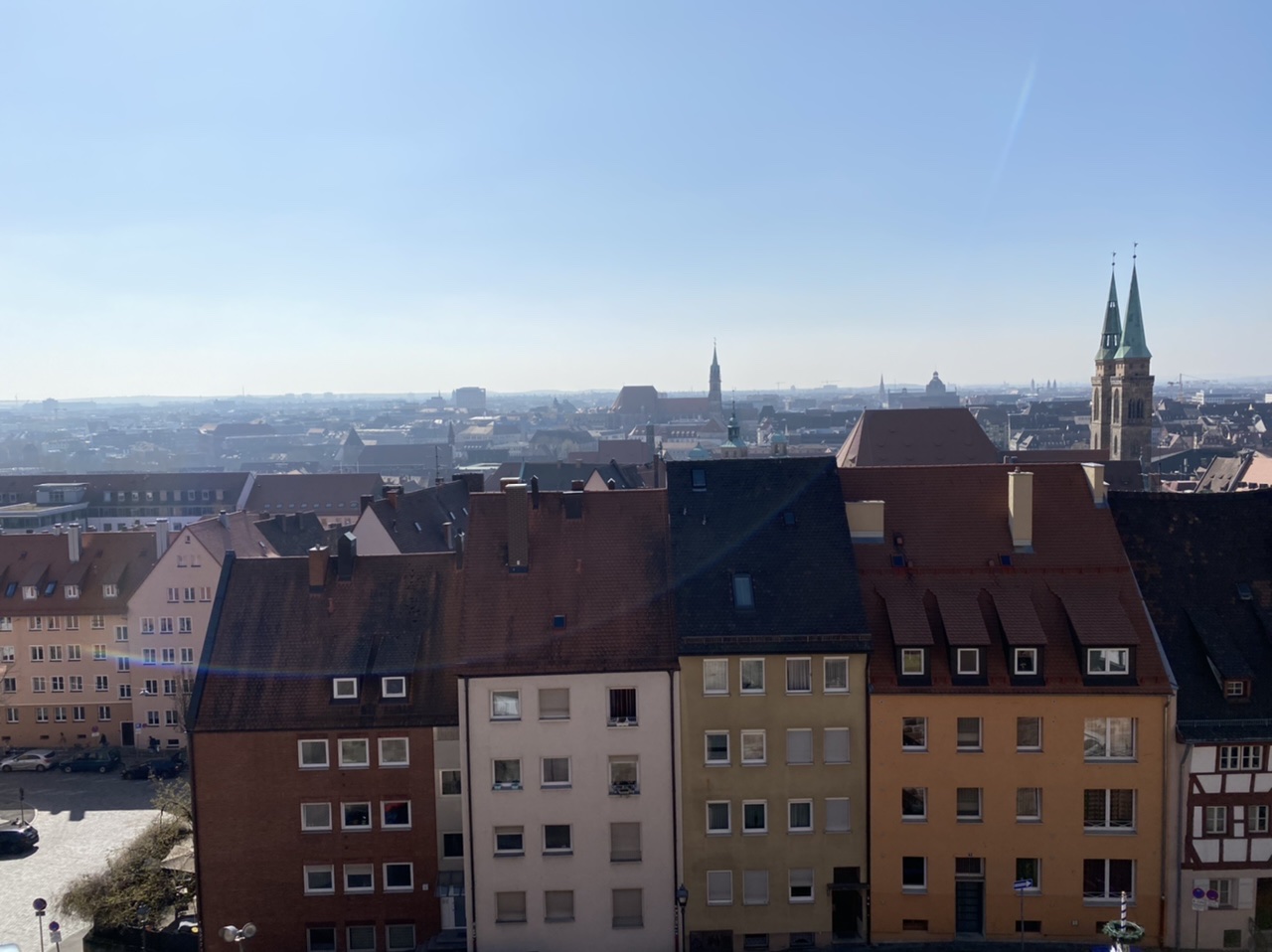
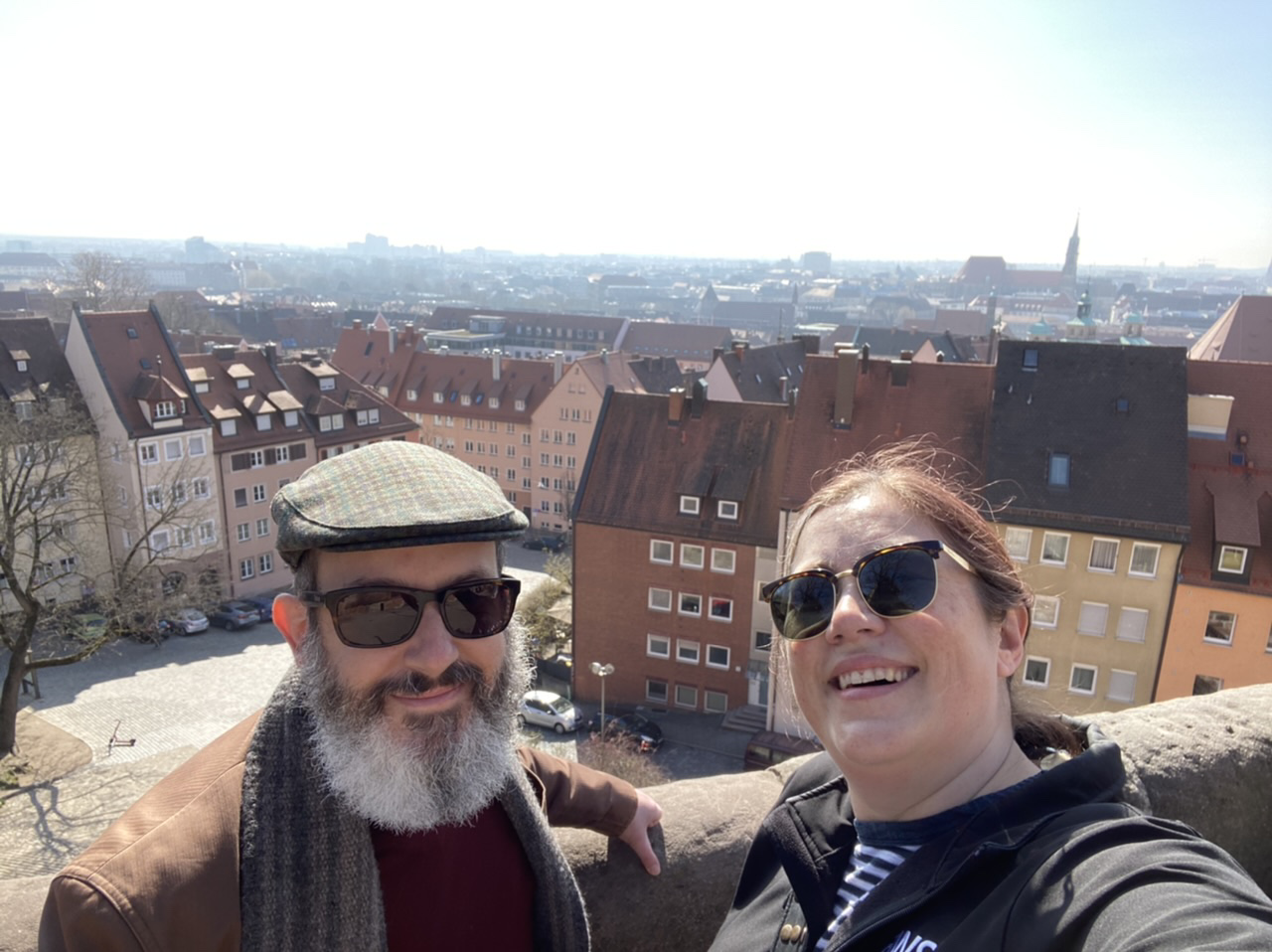
The castle is considered to be one of Europe’s most formidable medieval fortifications. This is Sinwell Tower, the major keep of the castle.
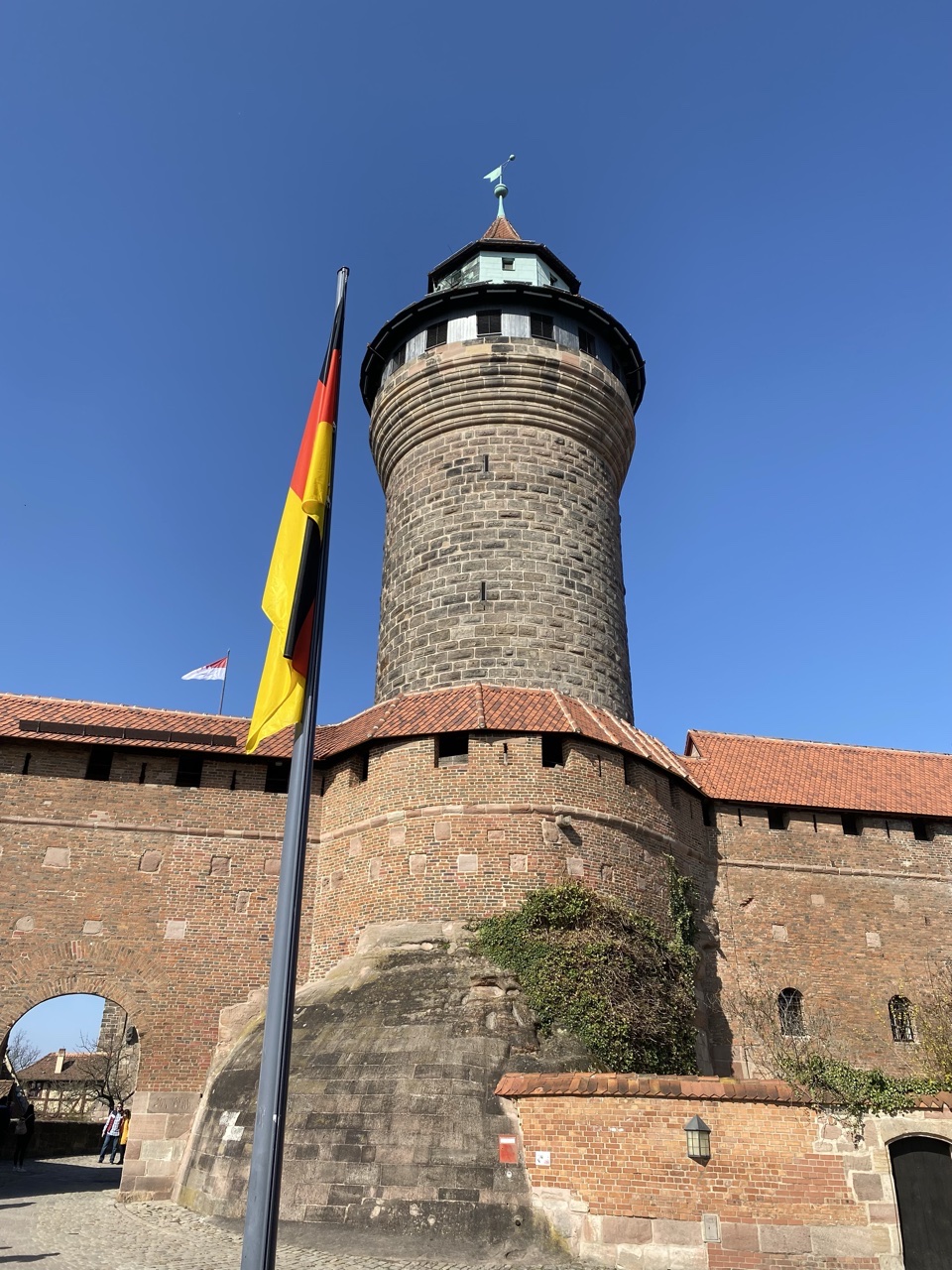
It was fun to get to hang out with Frank in person after only talking on Zoom or Twitter before.
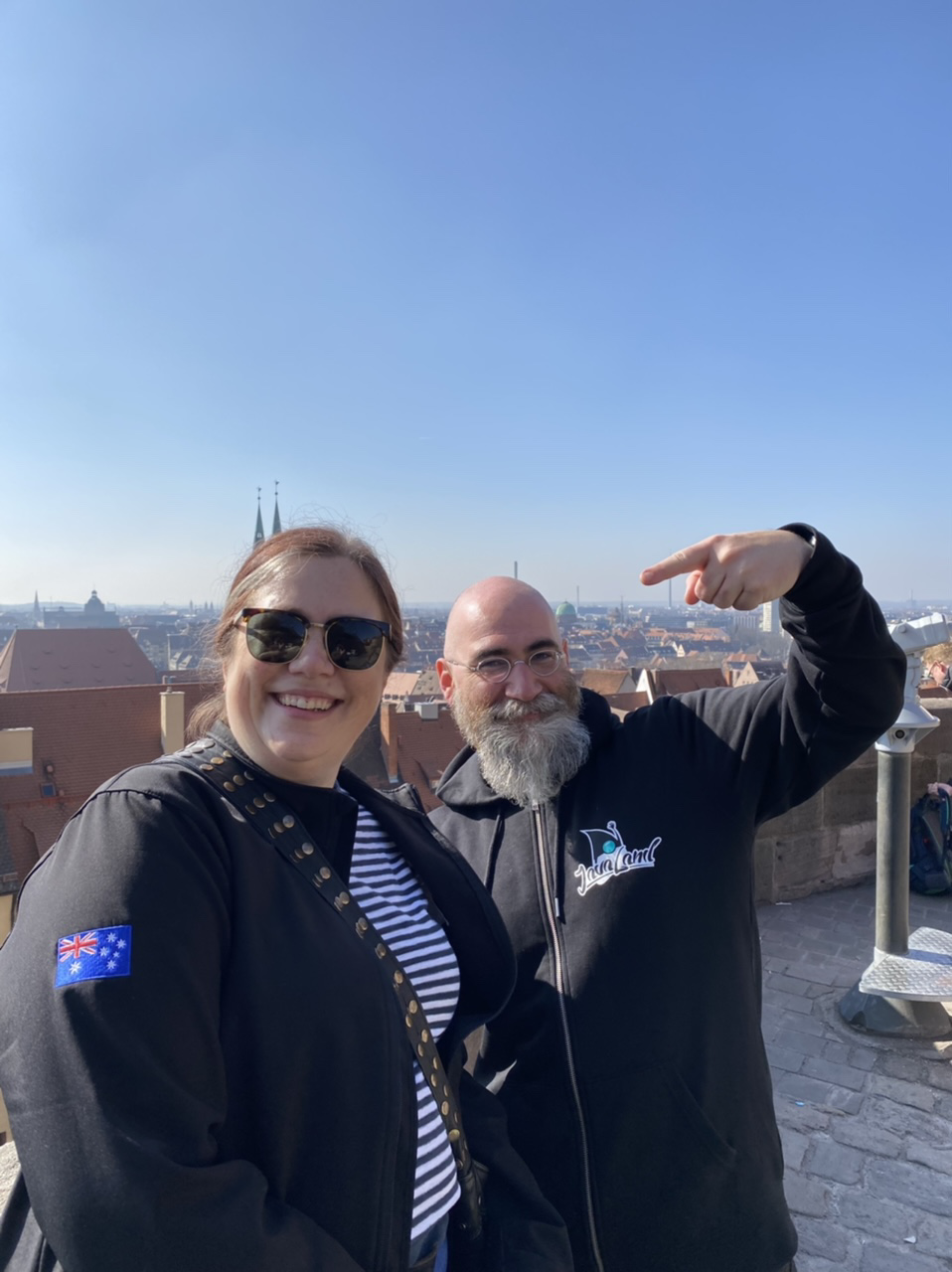
We didn’t go inside the castle, but we walked all around the different buildings.
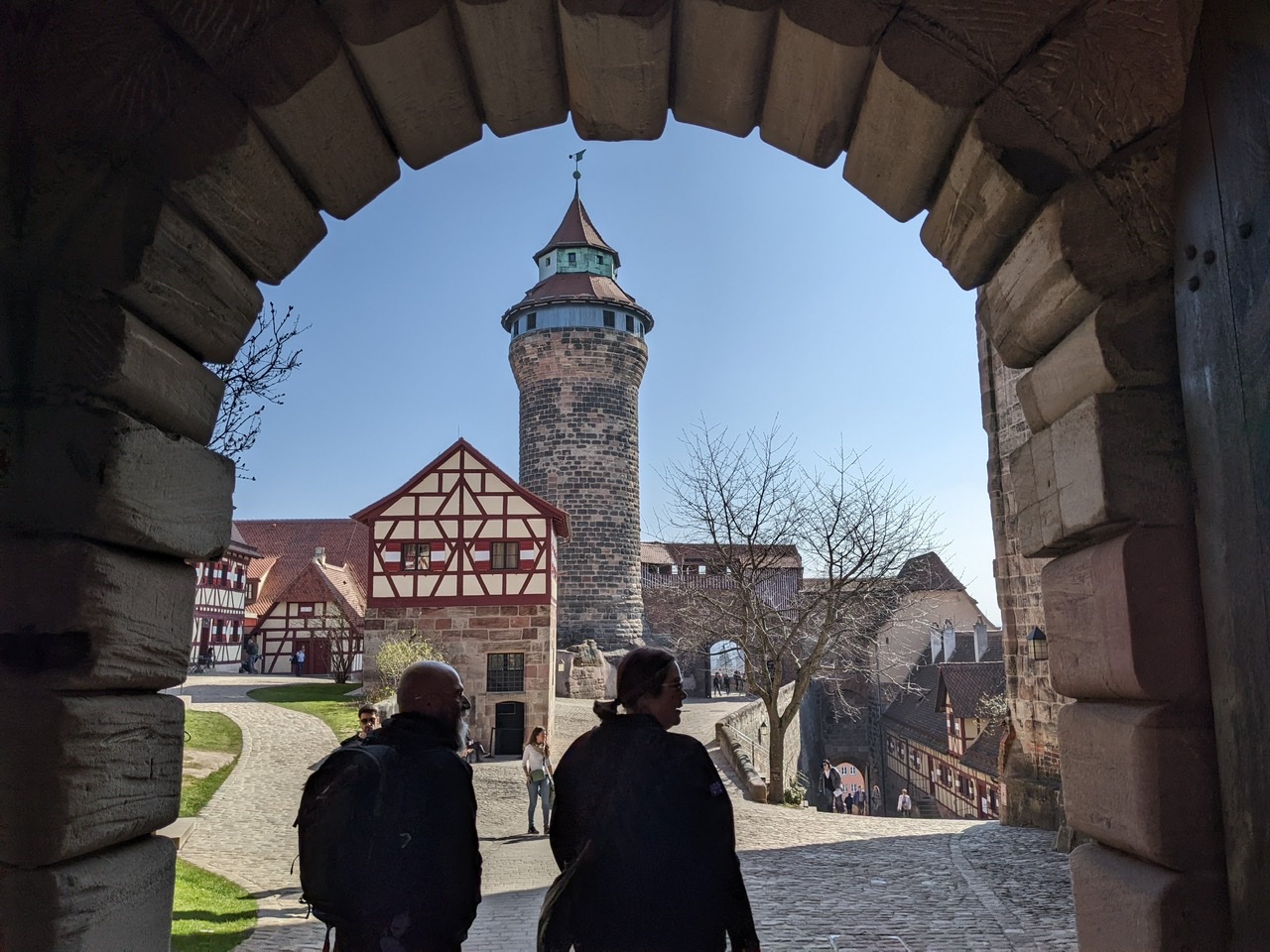
Check out this badass medieval eagle insignia painted on a door!
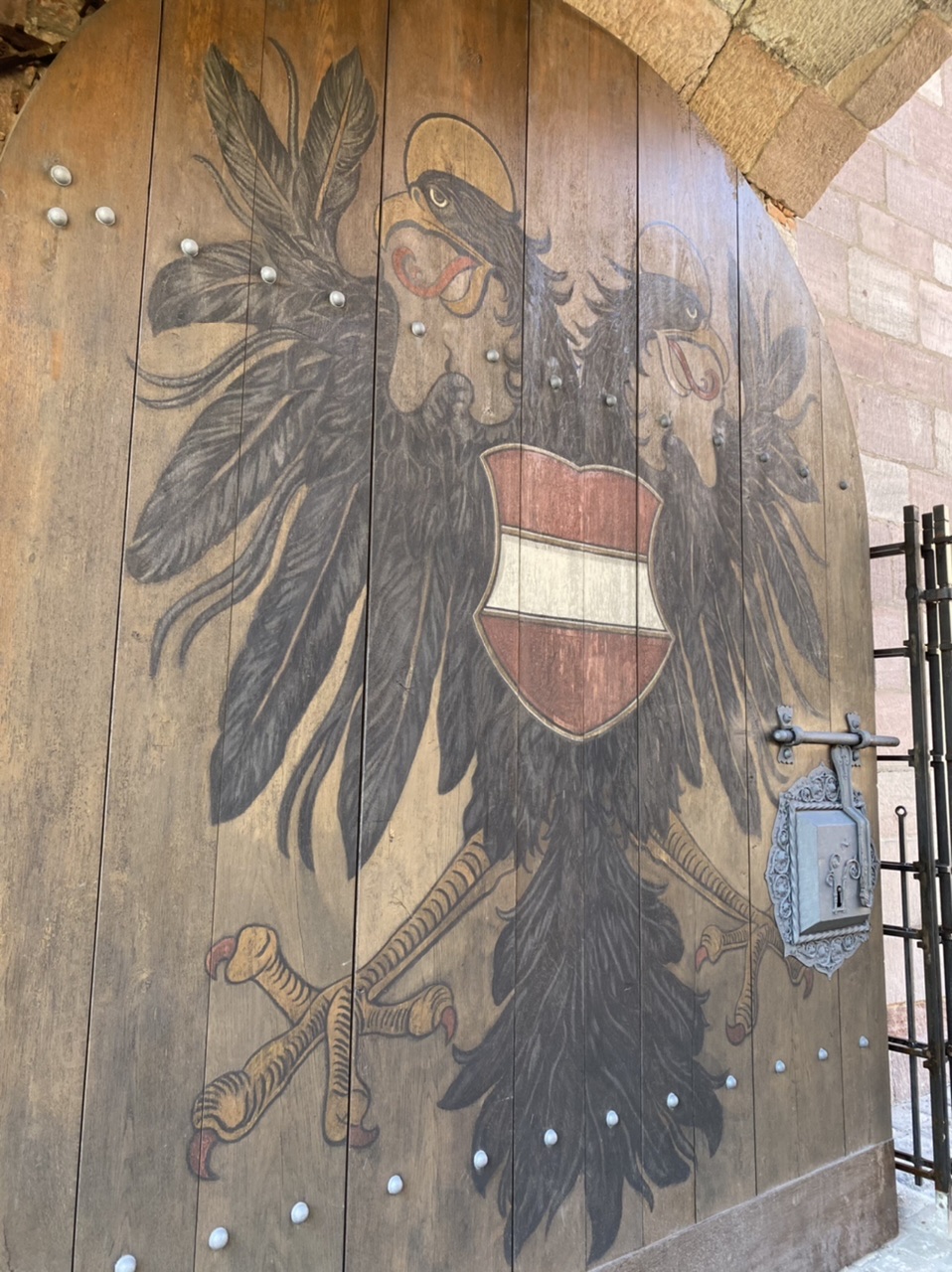
The castle abuts onto the city walls, so we walked out behind and across the old castle moat. Frank told us that every year they hold a Franconian beer festival there!
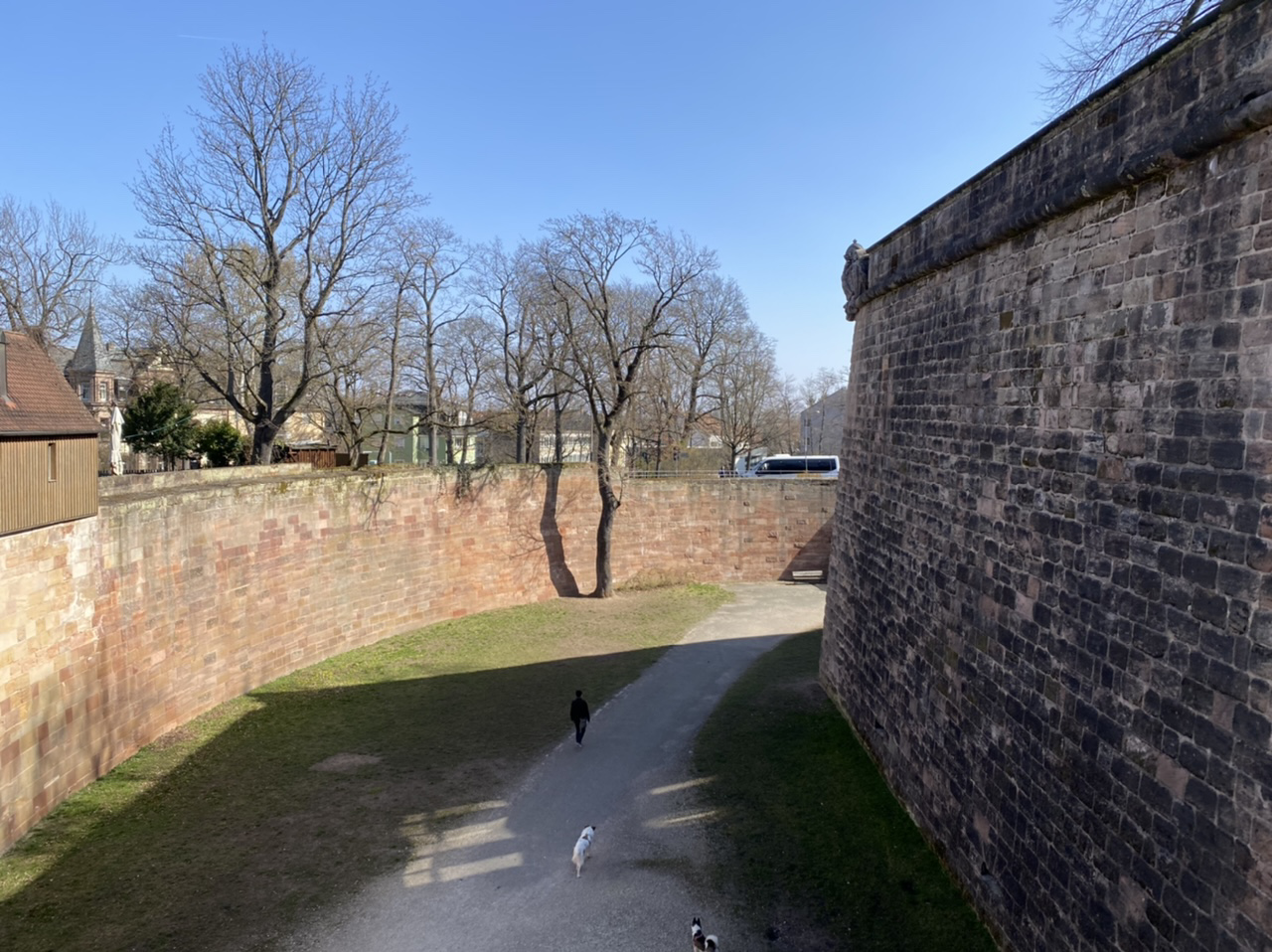
Some more views of the castle from the city walls.
We passed through a tunnel that brought us back into the city at the Tiergärtnertor gate.
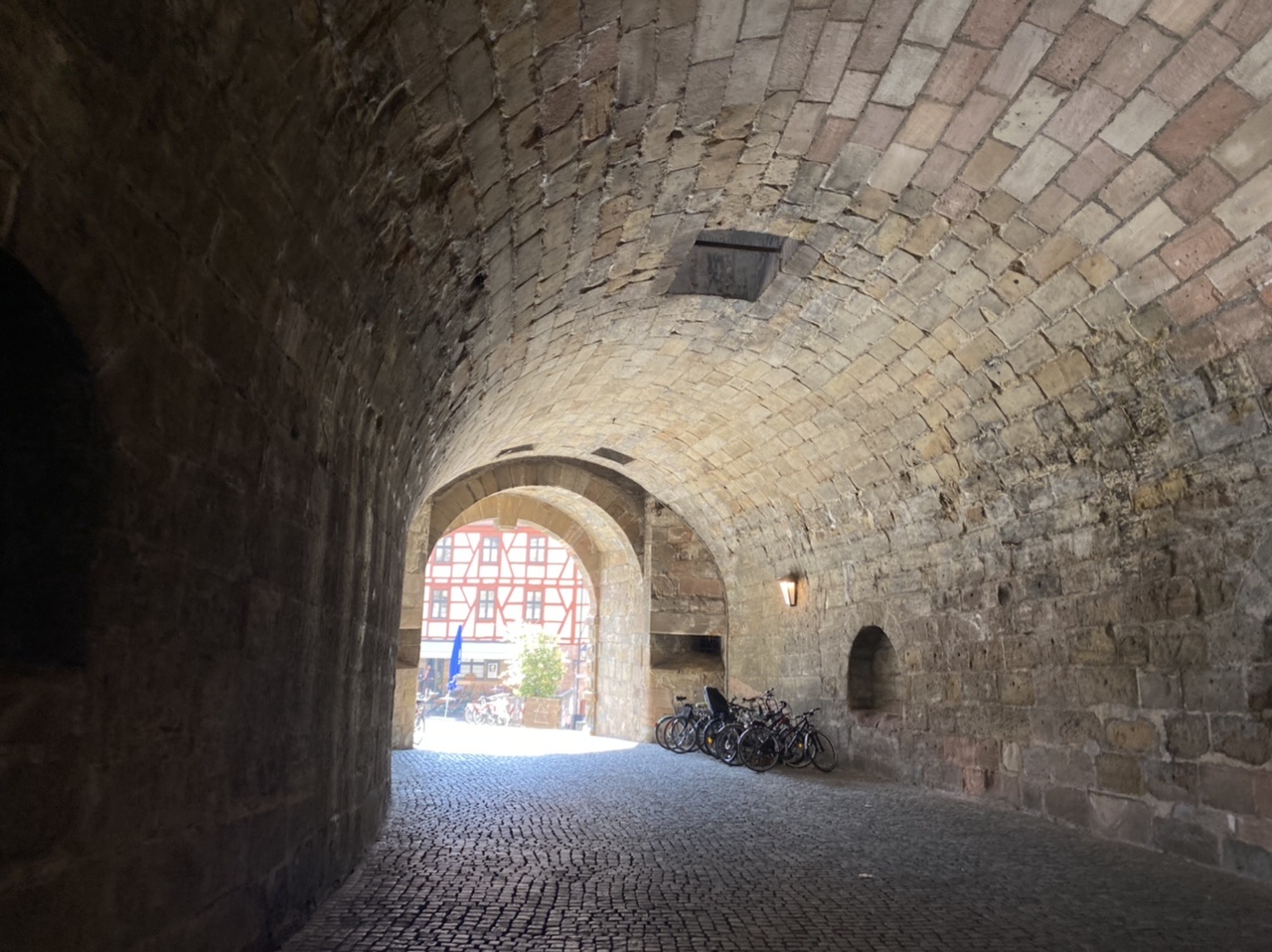
The square in front of Tiergärtnertor is popular for relaxation and people watching. Albrecht Dürer’s House stands nearby, and there are cafes all around.
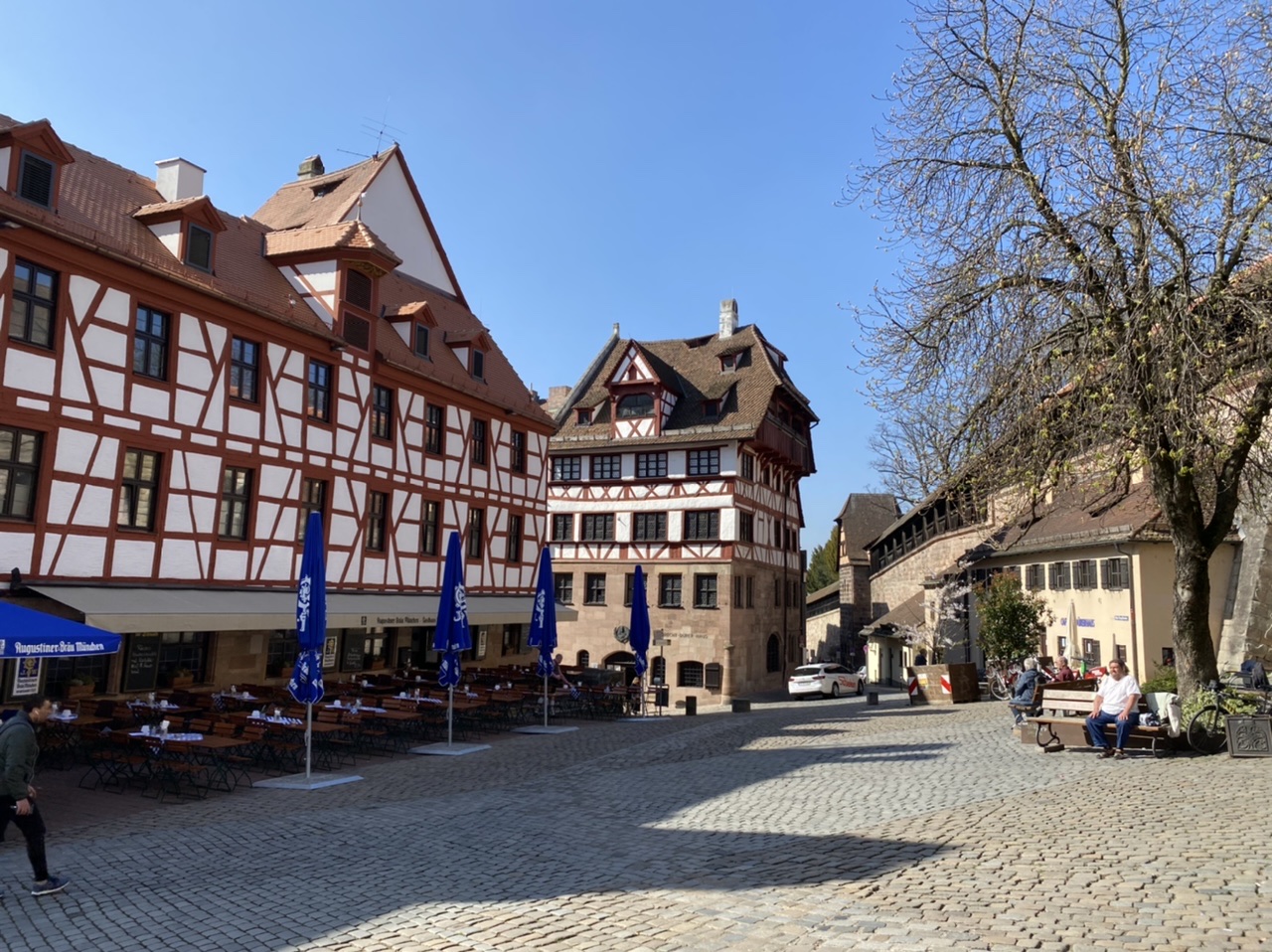
The Snook standing in front of the Tiergärtnertorturm.
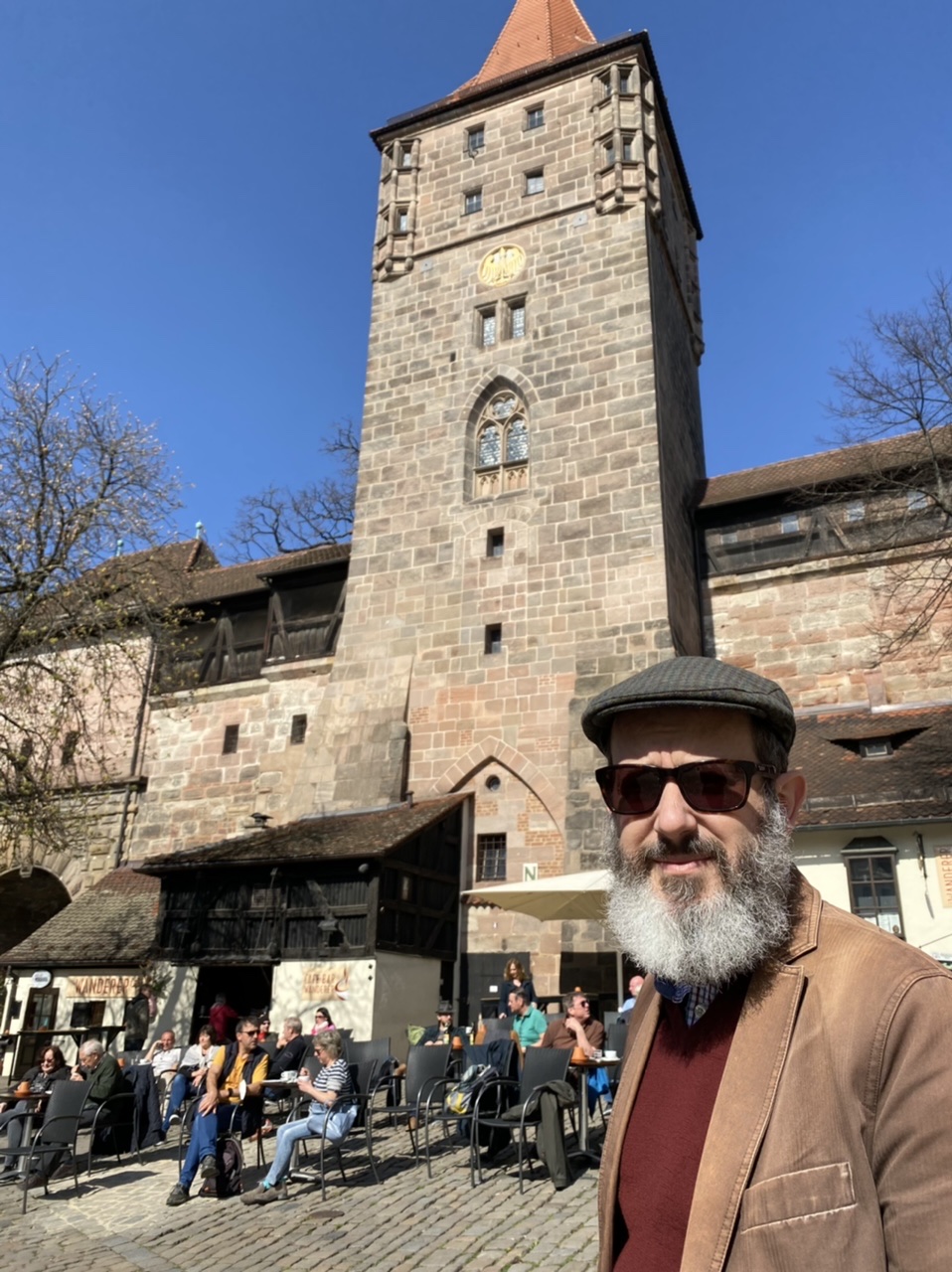
“What… in the hell… is that?” We spotted a grotesque sculpture of a giant hare nearby. It’s called “Der Hase” (the hare) by Jürgen Goertz, and it’s done as a satirical monument to Dürer (who painted a famous watercolour called “Feldhase”). A lot of folks find it very, very ugly. I found an interesting contrast to the picture-perfect reconstructed medieval architecture of the city.
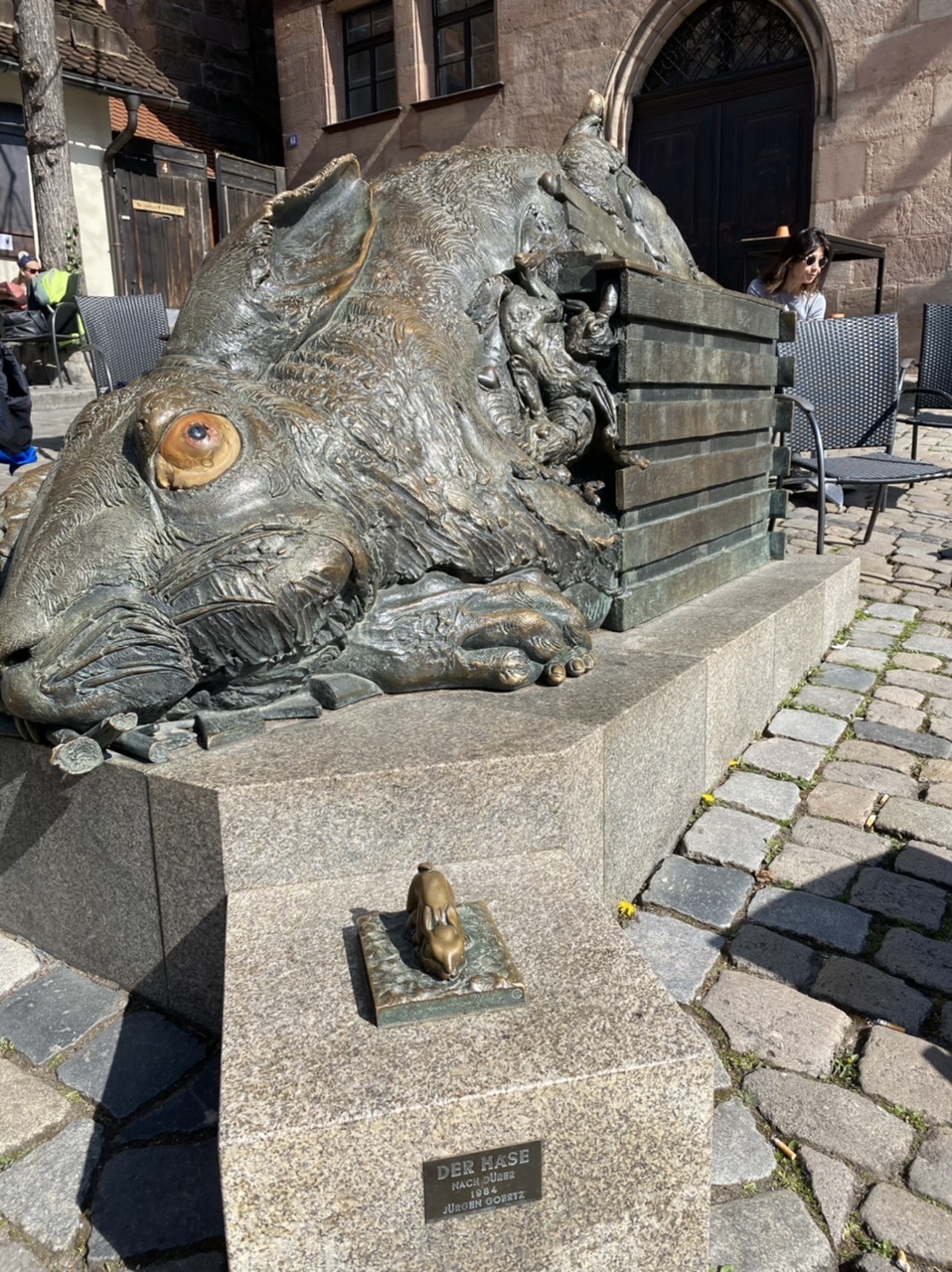
Nearby stands the Pilatushaus (House of the Armored Man), with a statue of St. George slaying the dragon on the corner.
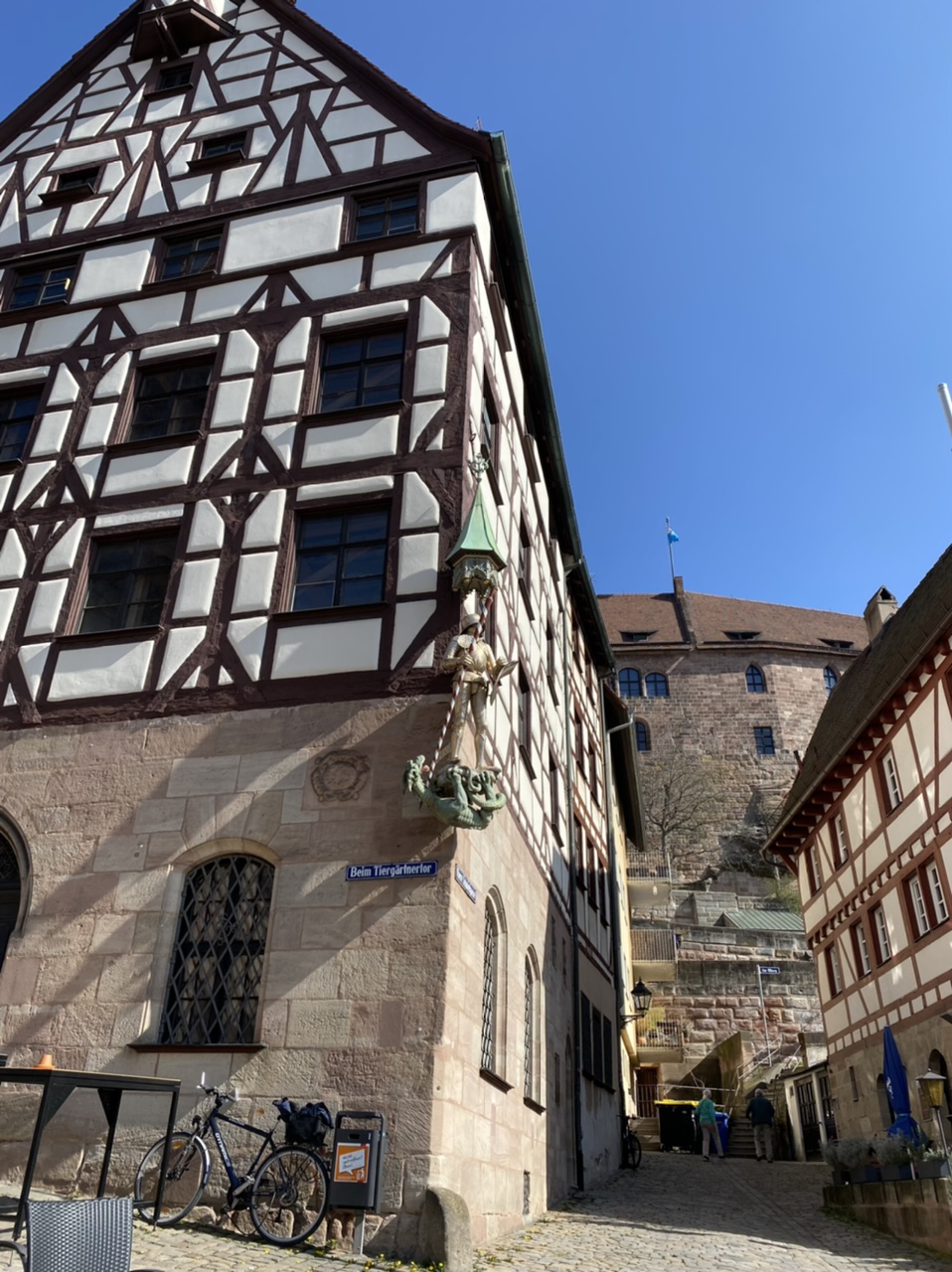
Frank next led us down the Weißgerbergasse, a street that features a lot of historical town houses.
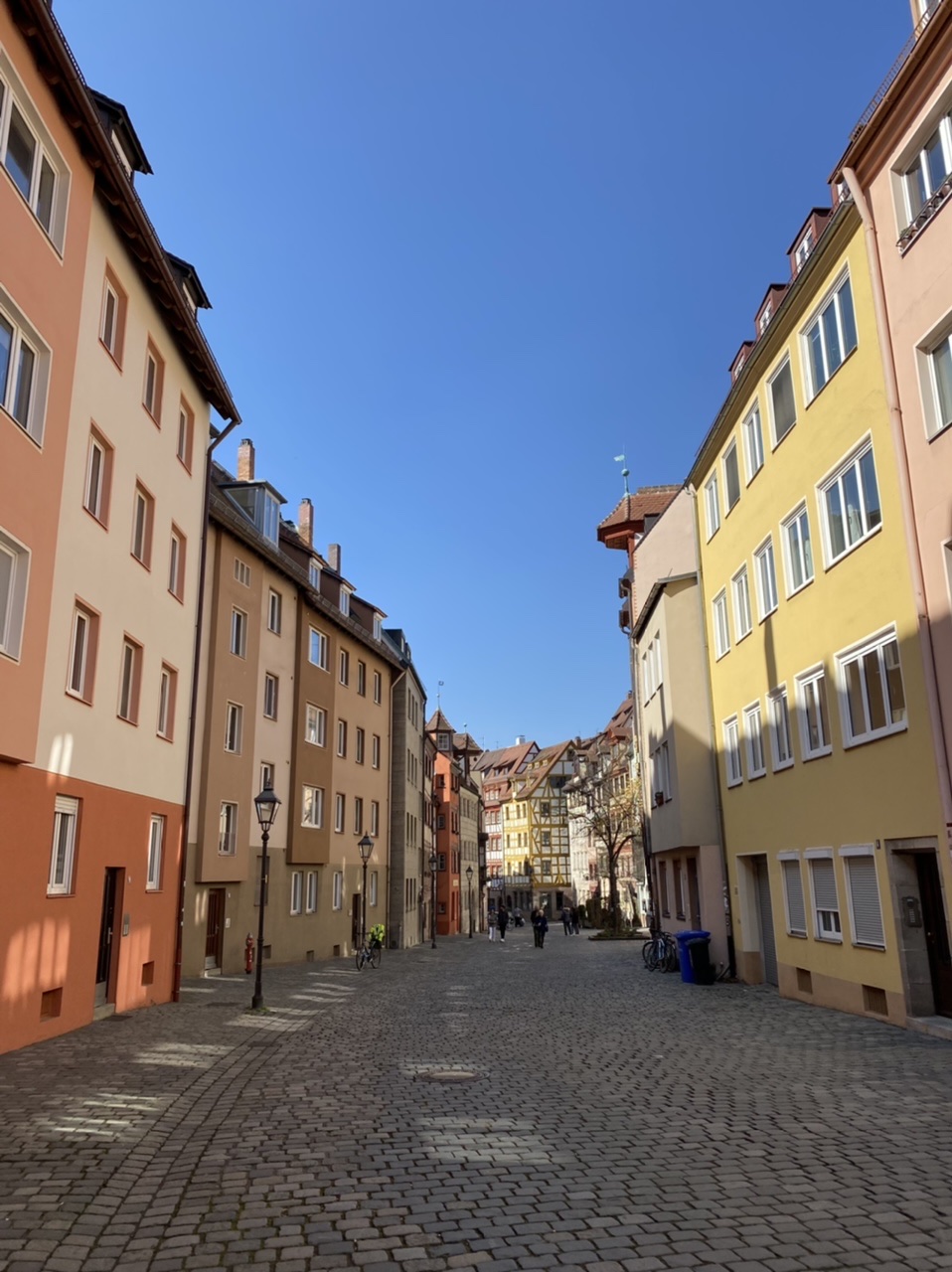
These houses were built using the Fachwerk (half-timbered) technique. This style is so famous in Germany that there’s a 3000km tourist road that takes you to the cities with all the best examples of it.
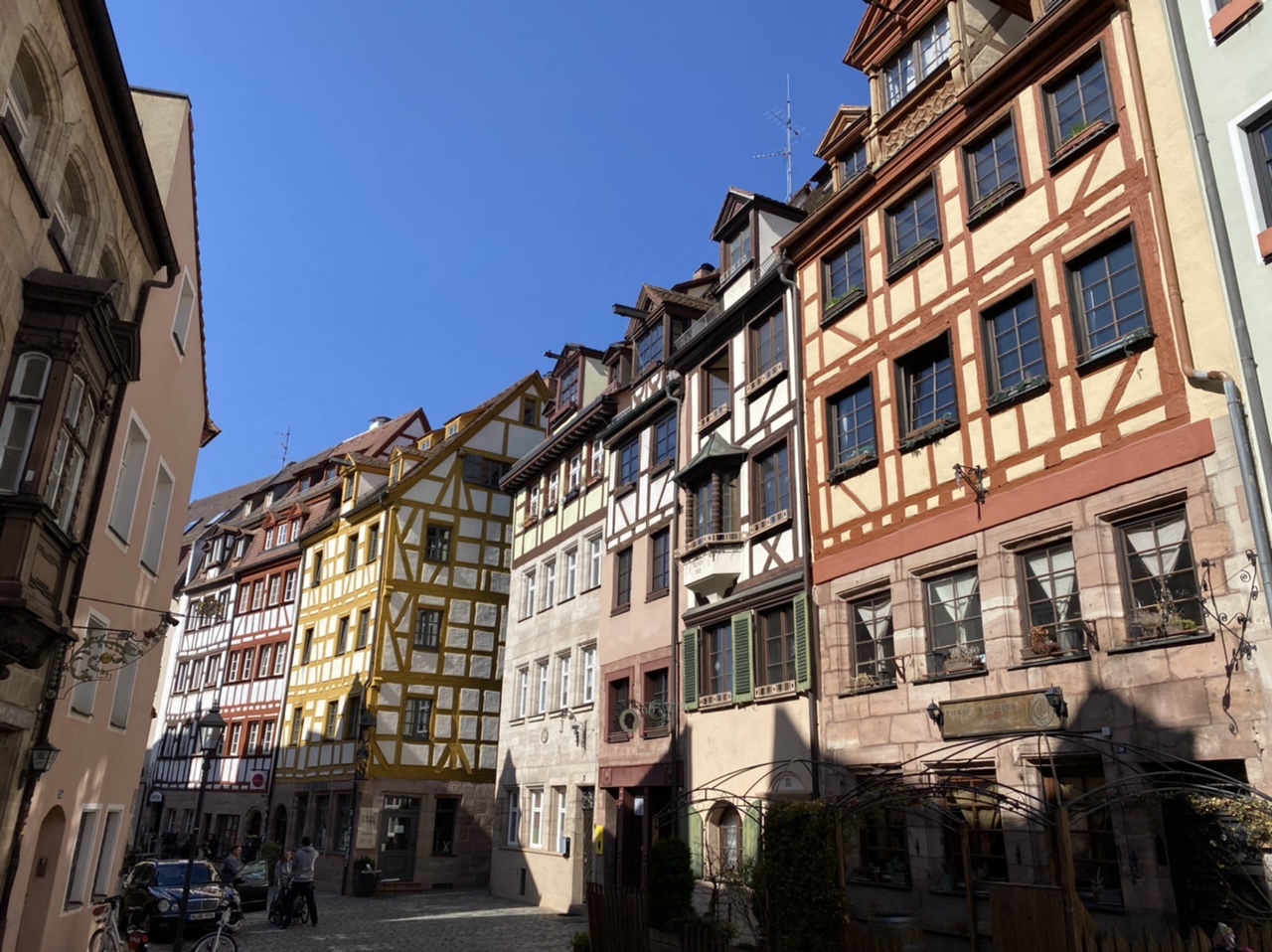
At the end of Weißgerbergasse, we found ourselves at the river and the famous Kettensteg (Chain Bridge).
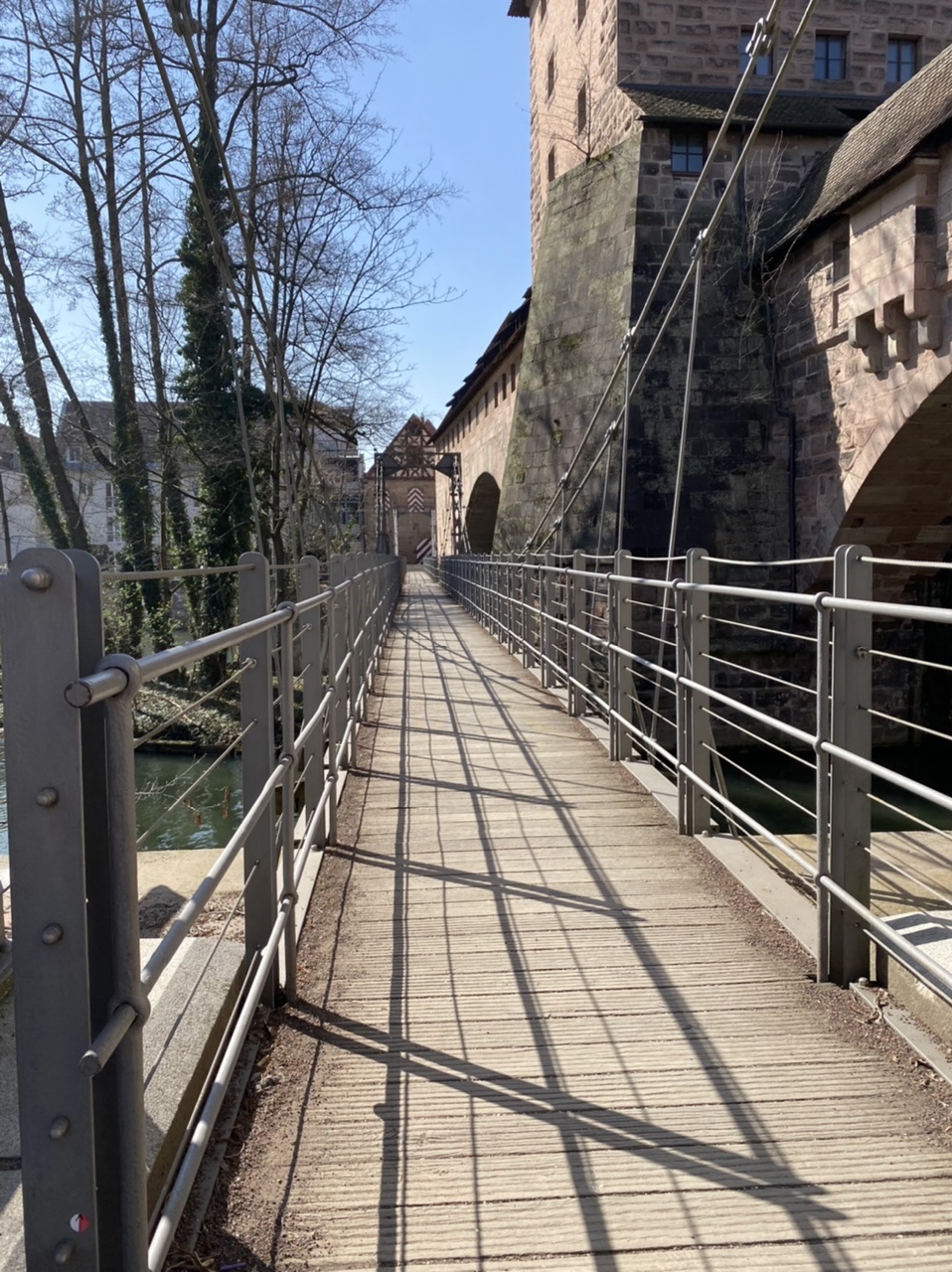
The Kettensteg is the oldest chain bridge on the European continent. It’s a narrow pedestrian bridge over the Pegnitz, supported by chains.
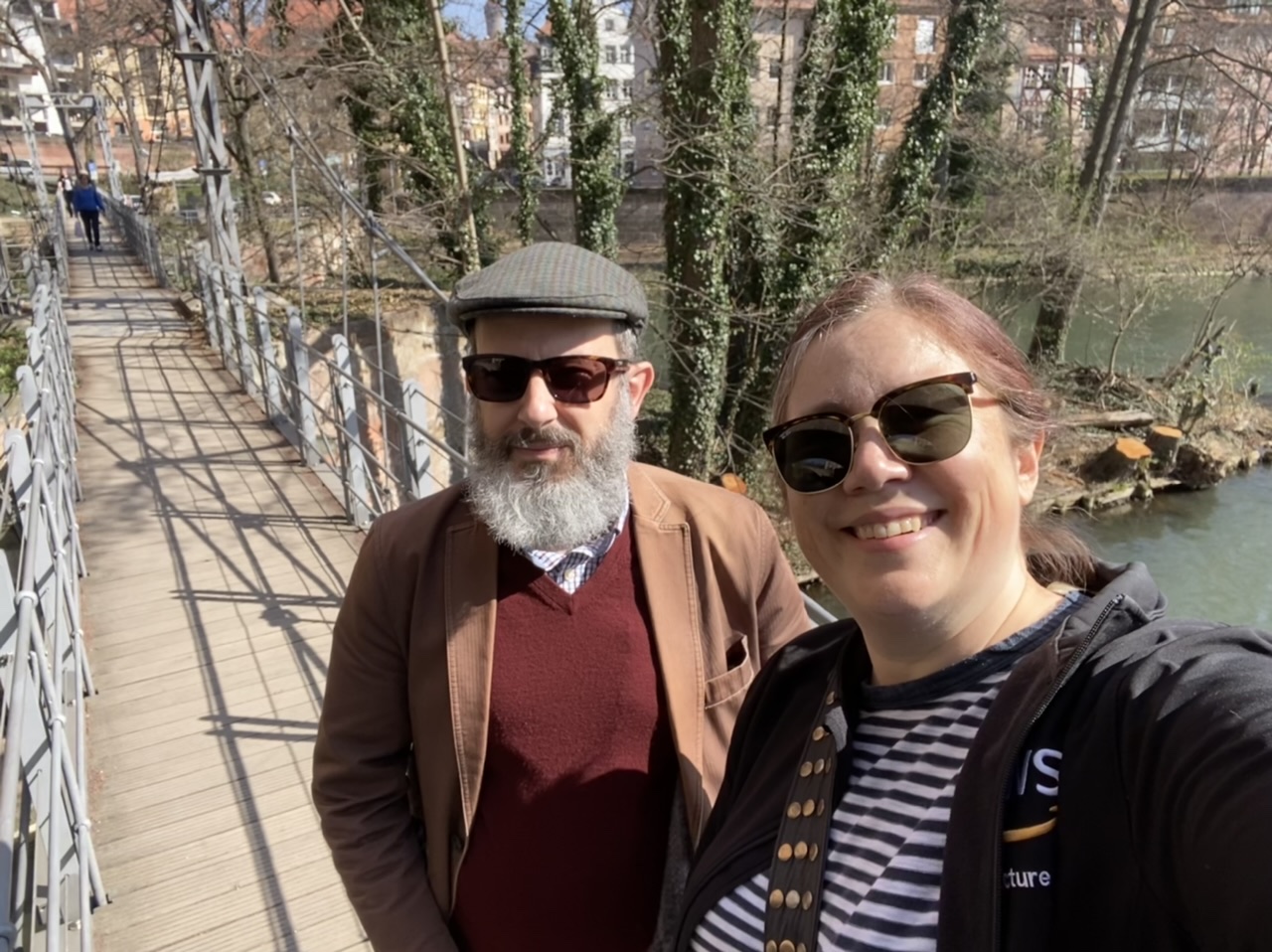
Views from the Kettensteg. Looking to the east up the river to the Maxbrücke, and to the west under the Schlayerturm that makes up part of the city wall.
You can see that it really is a suspension bridge!
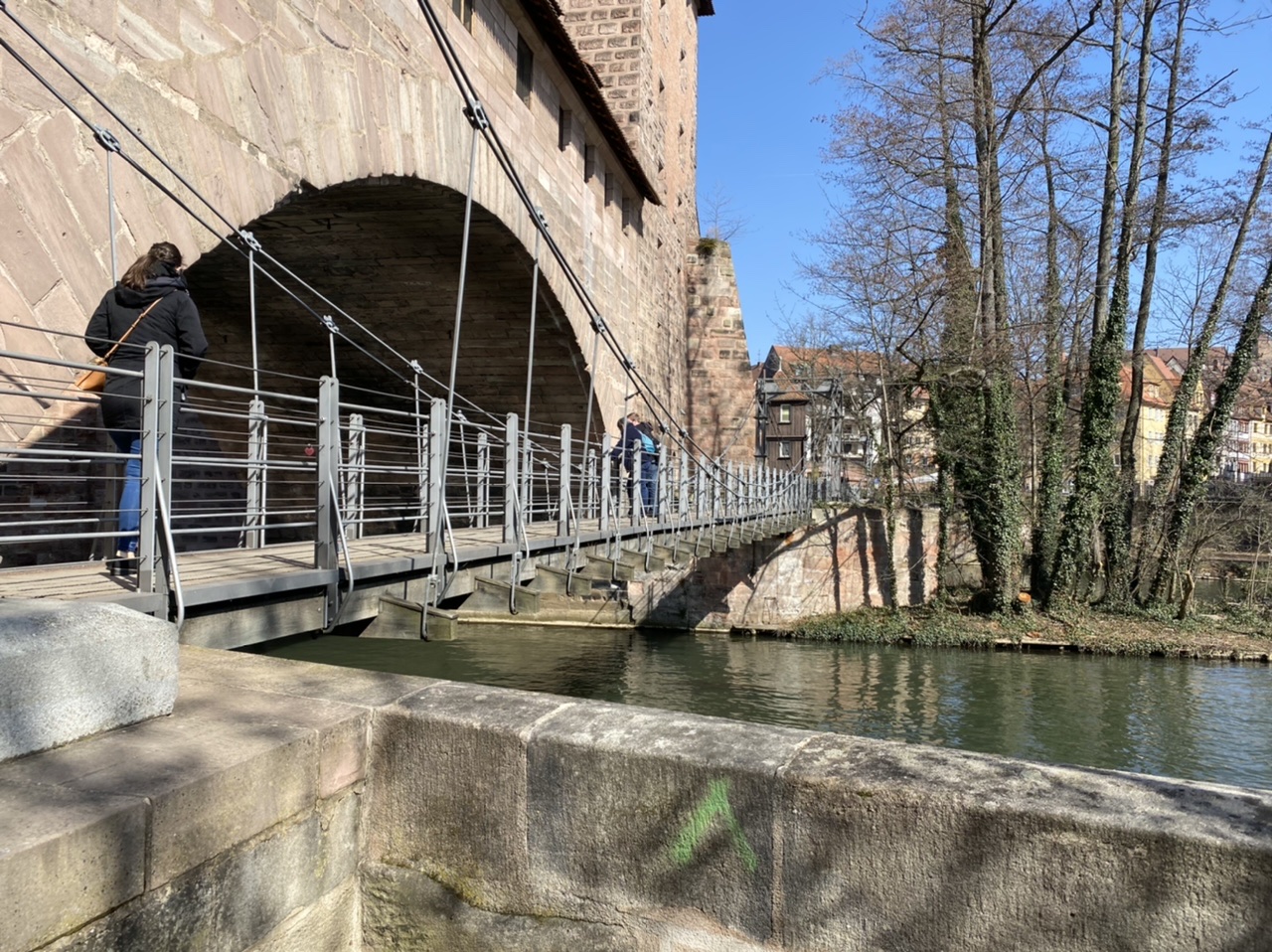
We walked up the river towards the Maxbrücke. Before it is a weir than spans the Pegnitz and helps control the river flow.
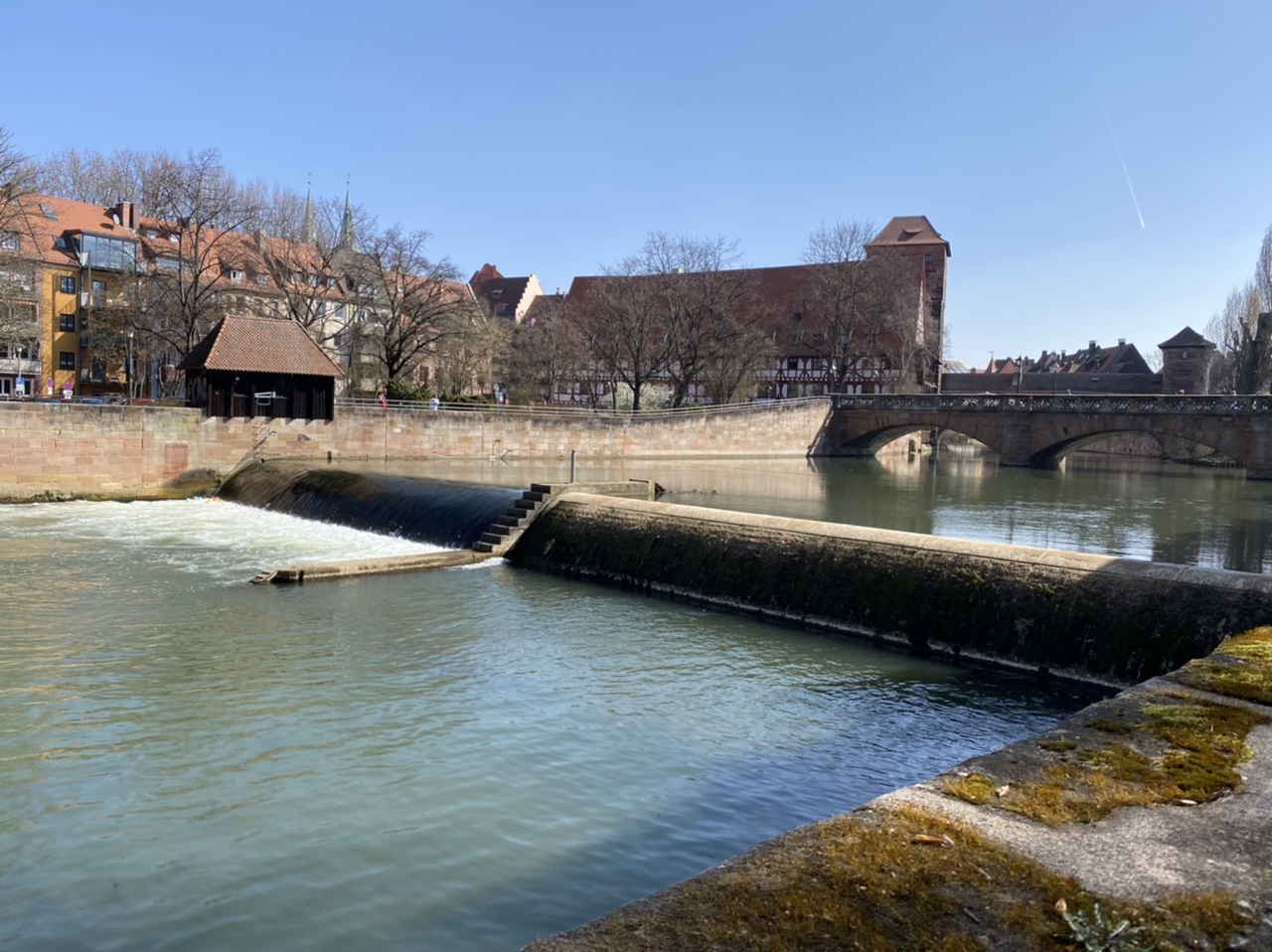
Just past the Maxbrücke is the Henkersteg (Executioner’s bridge). This pedestrian bridge takes you over to a little island in the Pegnitz that has the Henkerhaus (Executioner’s house). It was where the hangman lived, and now it’s a museum.
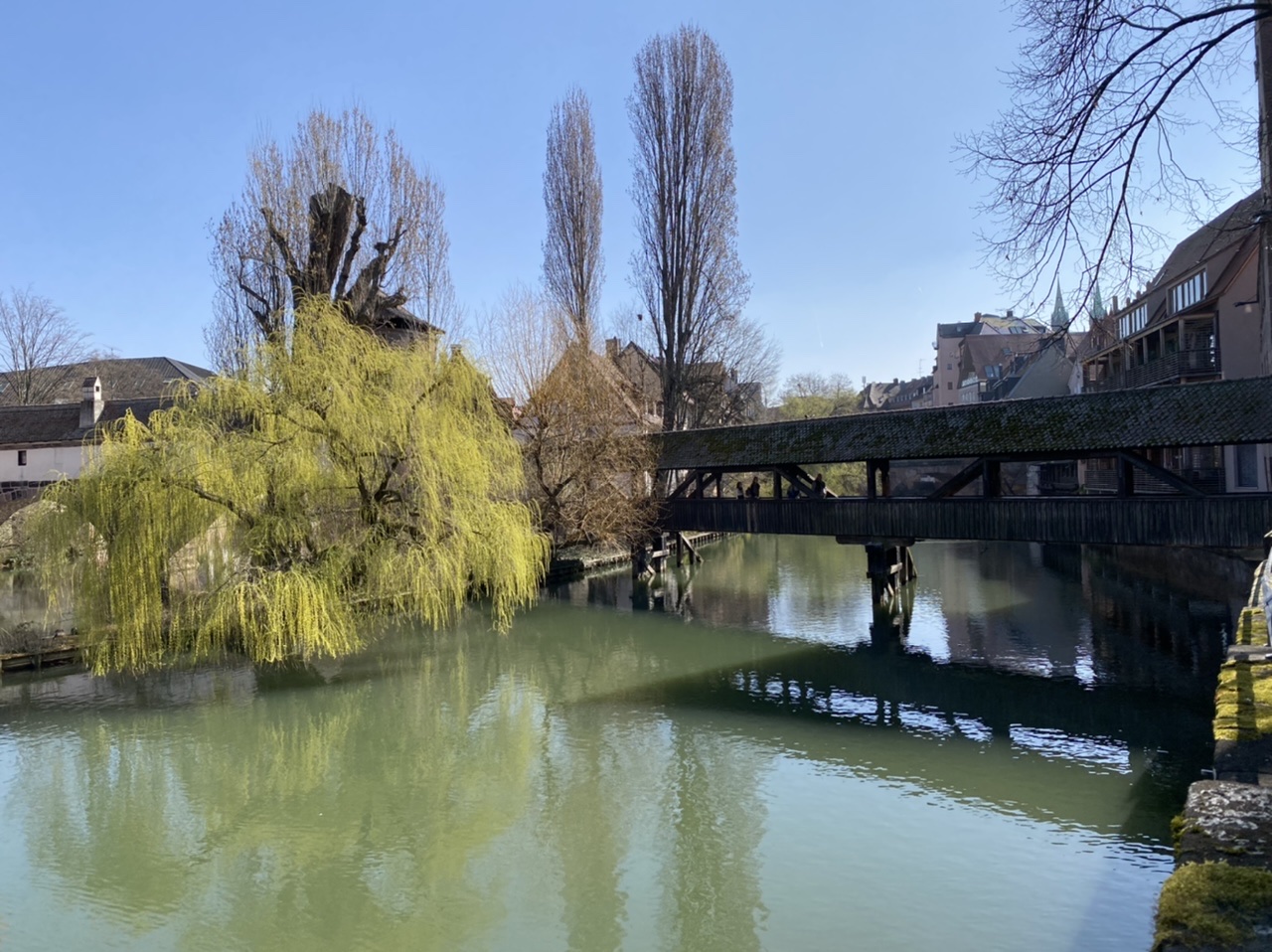
We criss-crossed the river several times on our walk. Here’s looking up Winklerstraße towards St. Sebaldus again.
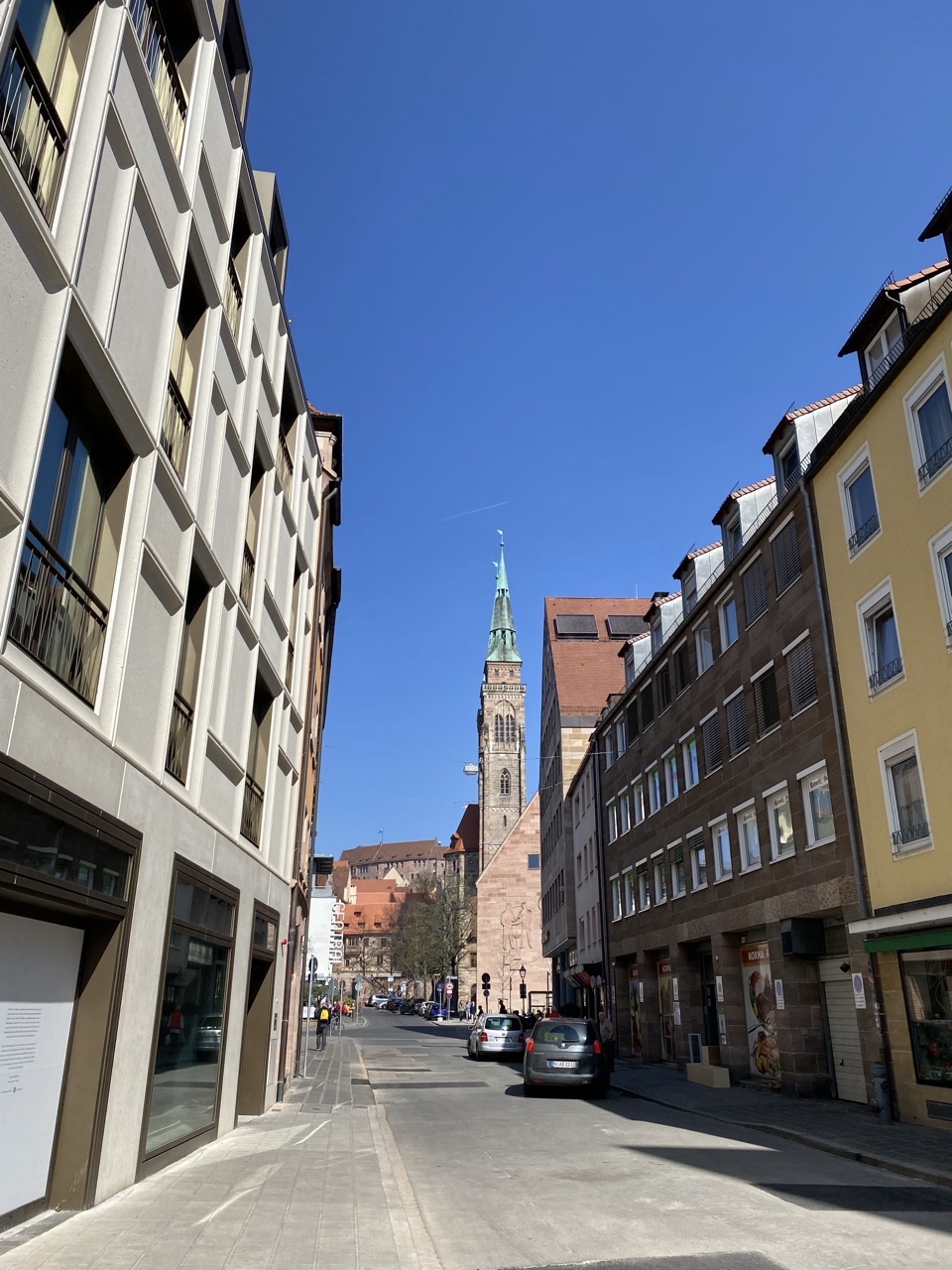
This one is looking south down Königstraße towards the Lorenzkirche (St. Lorenz Church).
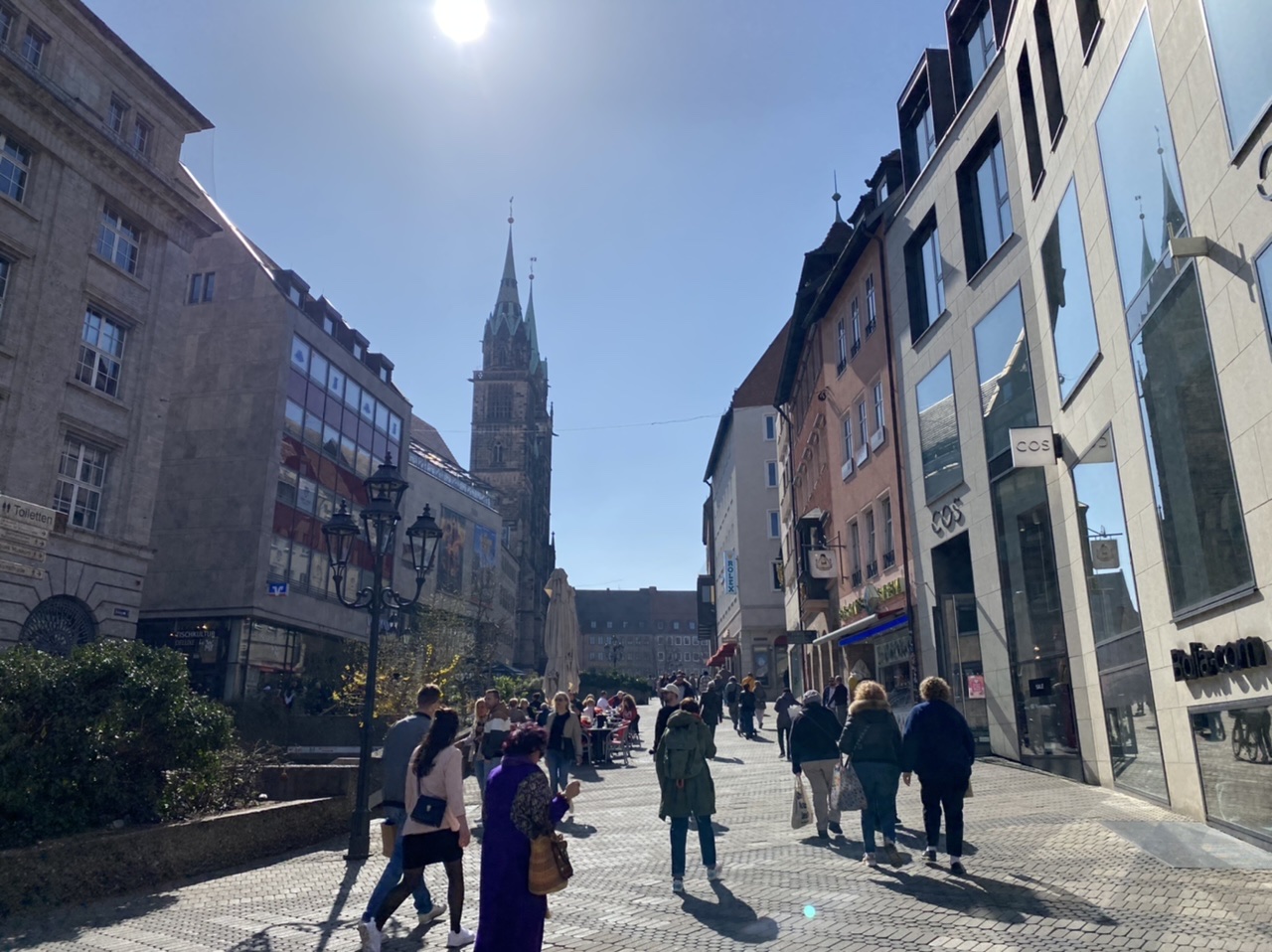
We crossed back over the Museumsbrücke and found Jürgen Weber’s sculpture Narrenschiffbrunnen (Ship of Fools). It was again inspired by some engravings of Albrecht Dürer, and features people, animals, and Death itself.
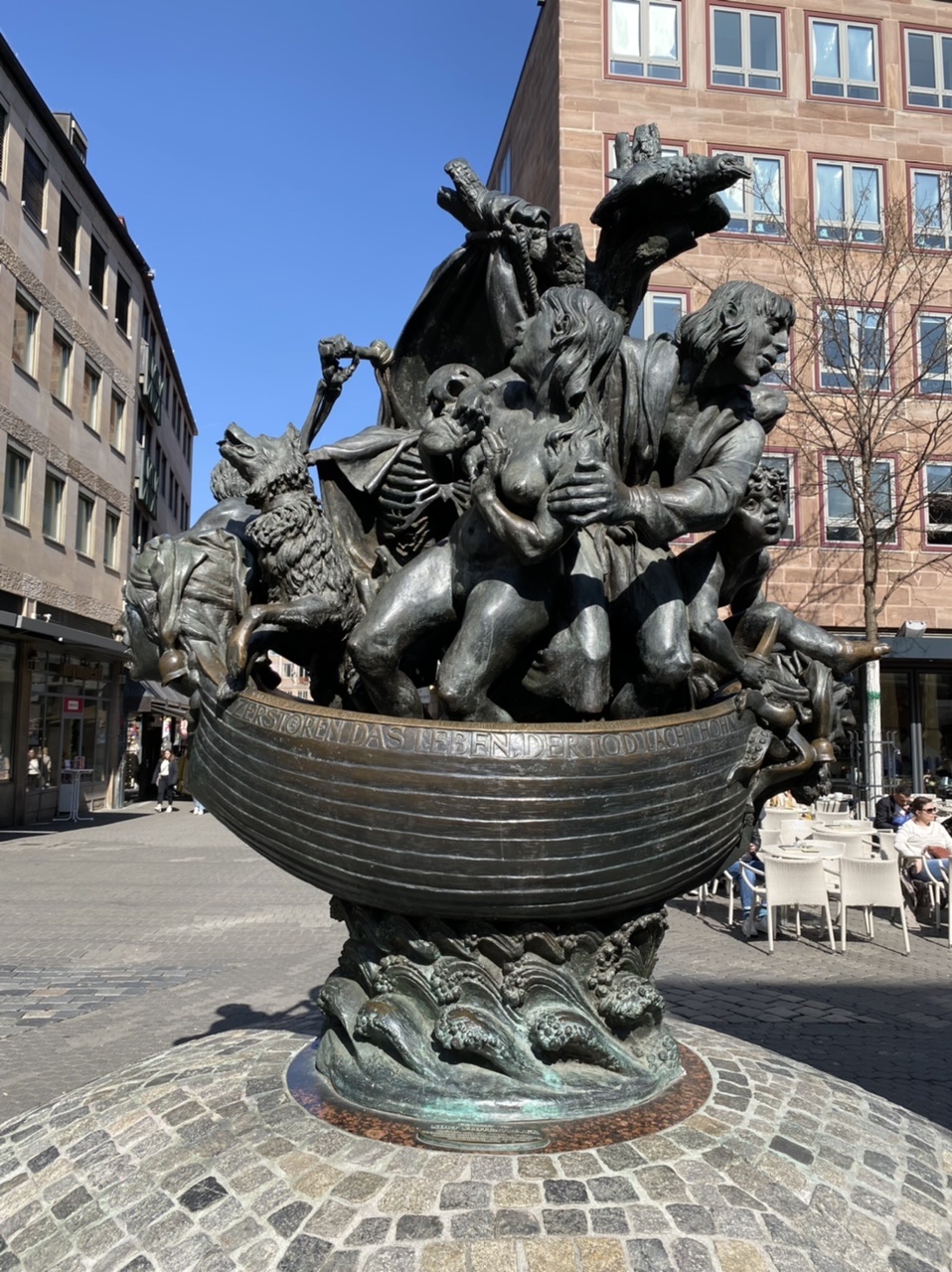
Another weir on the Pegnitz. Lots of people were out enjoying the early Spring sunshine.
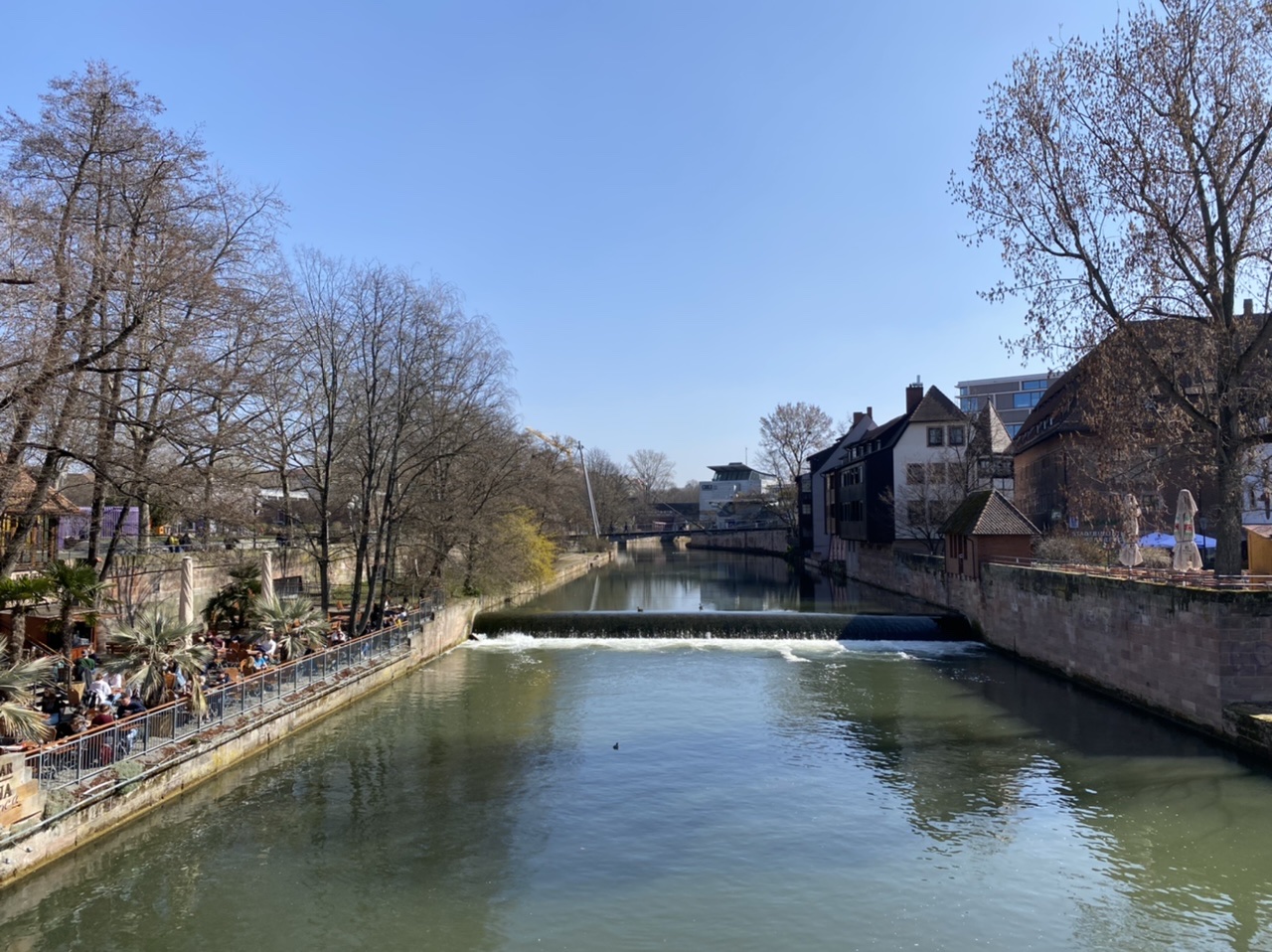
We learned that 90% of Nürnberg was destroyed during a single hour of Allied bombing in WW2. While most of the city was restored, the Katherinenkirche (St. Catherine’s Church) was left as a ruin. Sometimes they use it for open air concerts now.
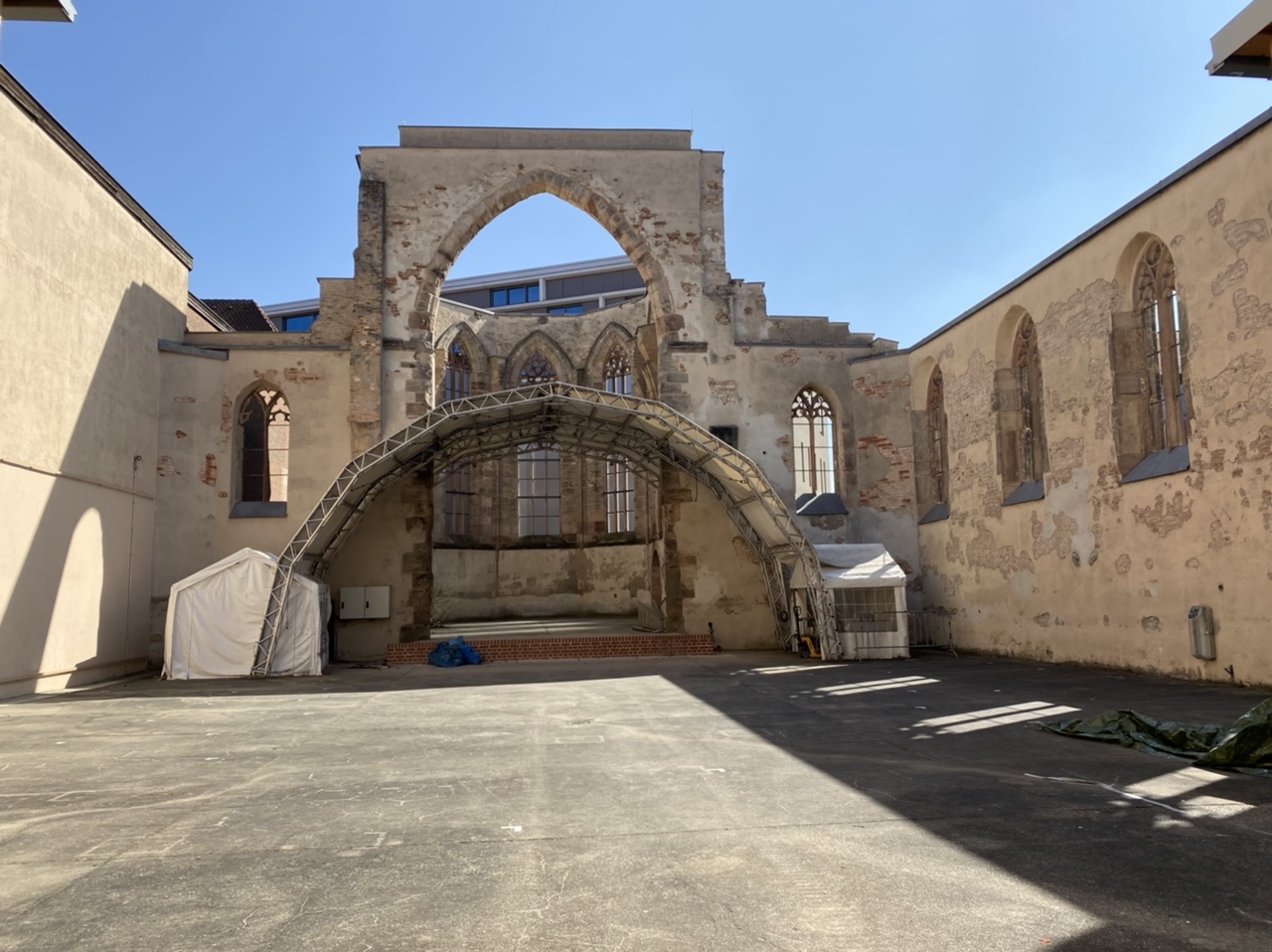
We hiked back to St. Lorenz, one of the churches that was restored. The original building was completed in 1477, so it’s nearly 550 years old.
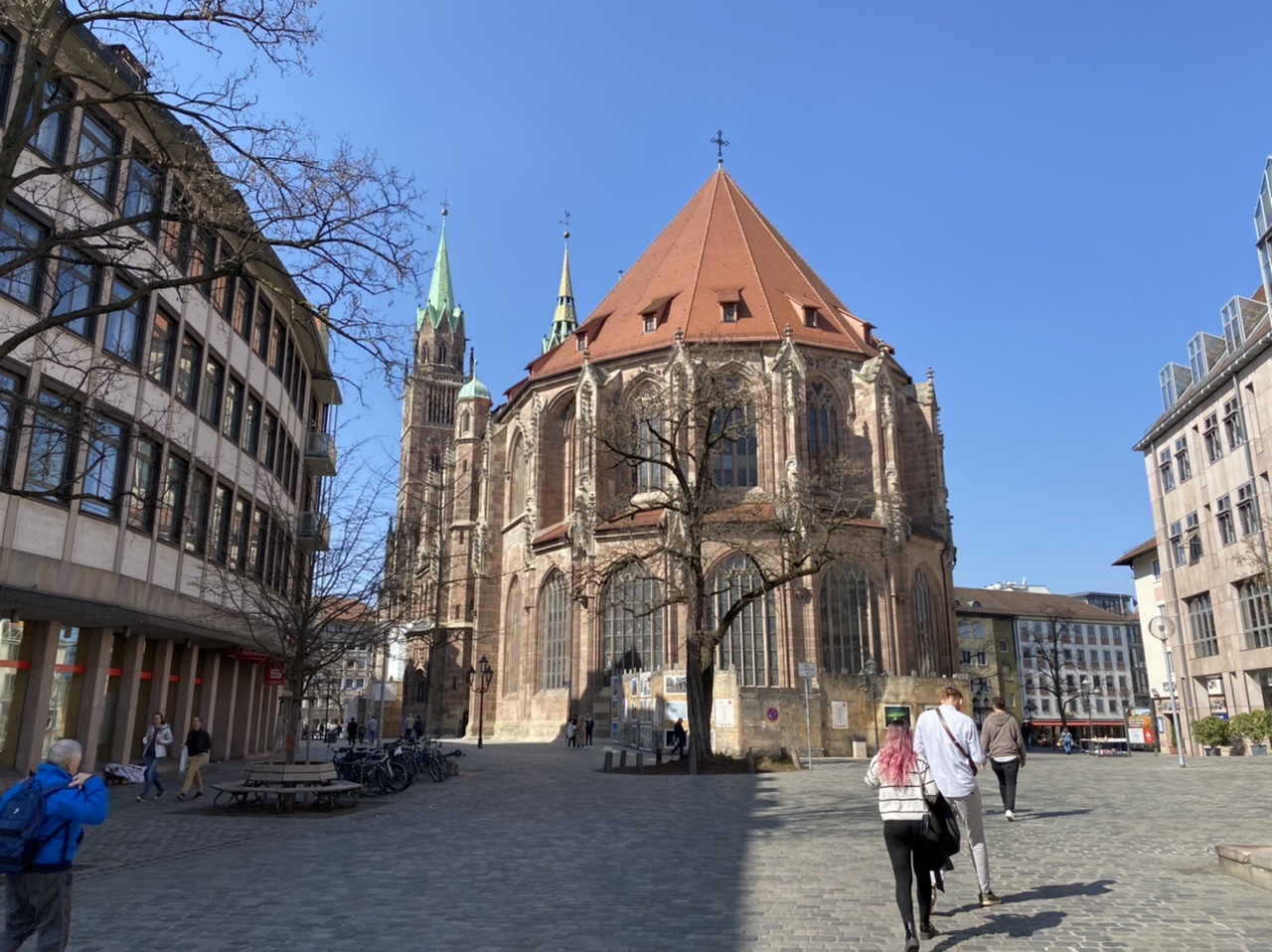
We had a look inside…
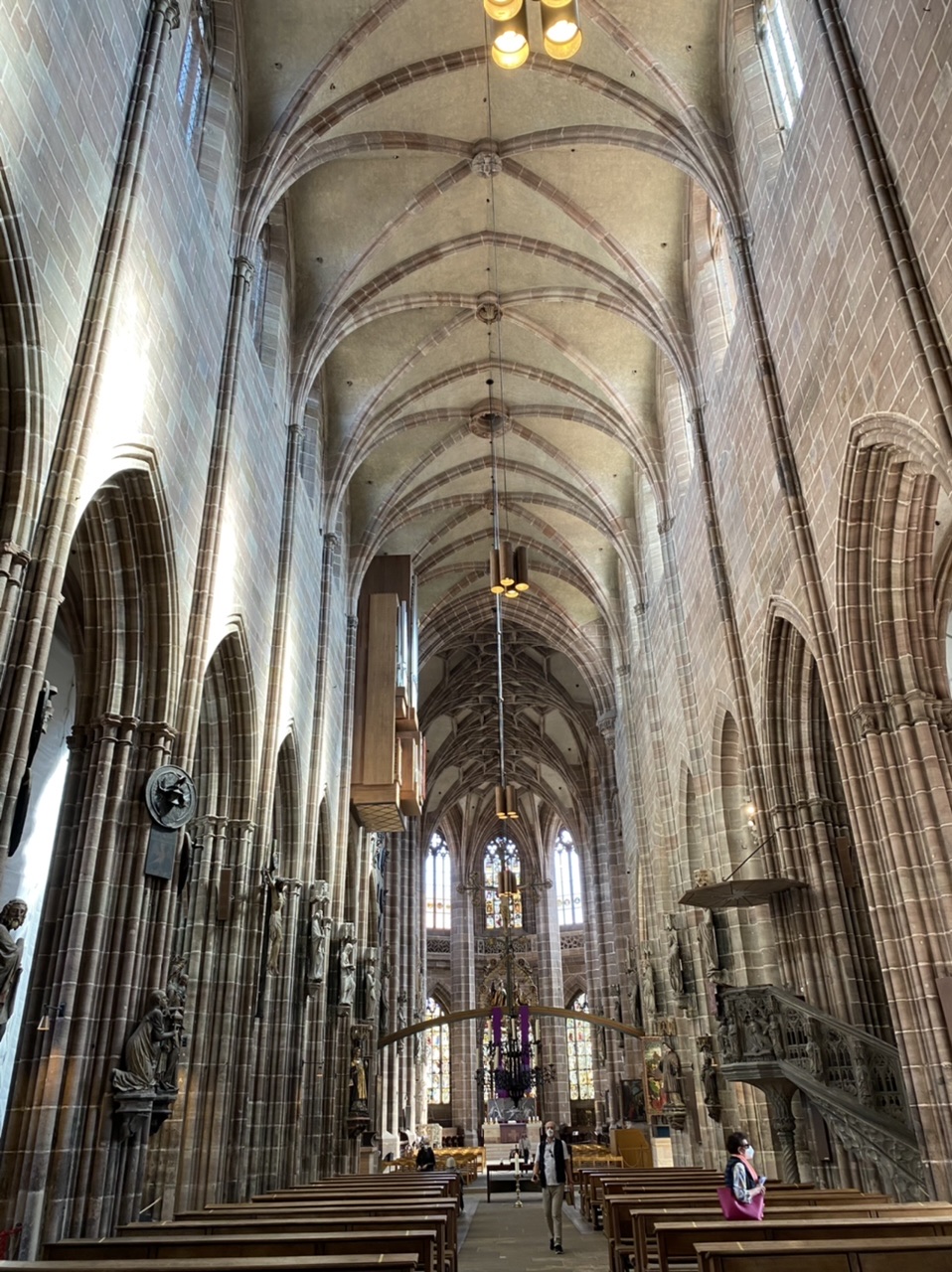
It had beautiful stained glass windows and artworks.
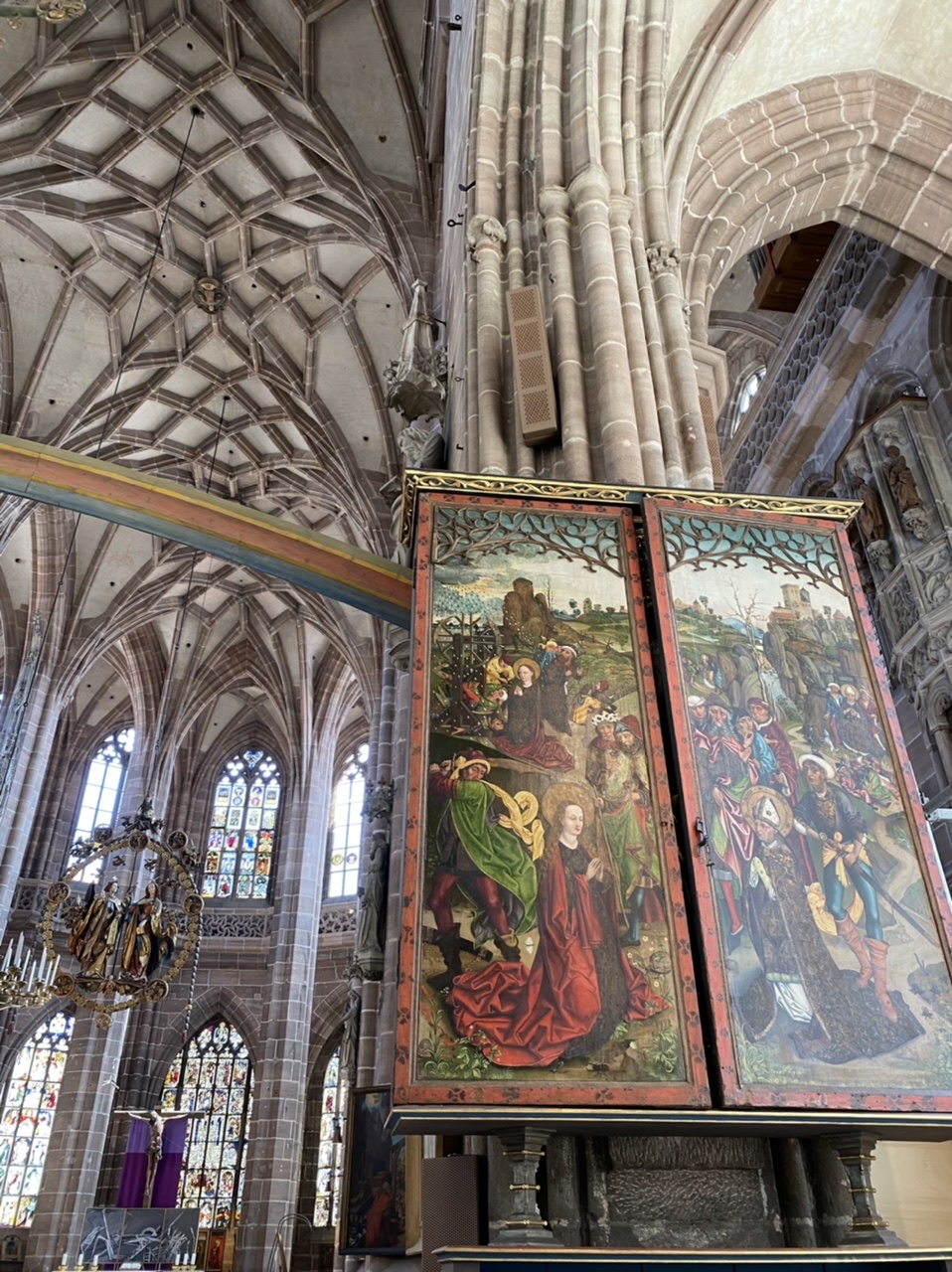
The Snook was entranced by how many buildings in Nürnberg featured sundials. This was a restaurant nearby that had one painted high on a wall.
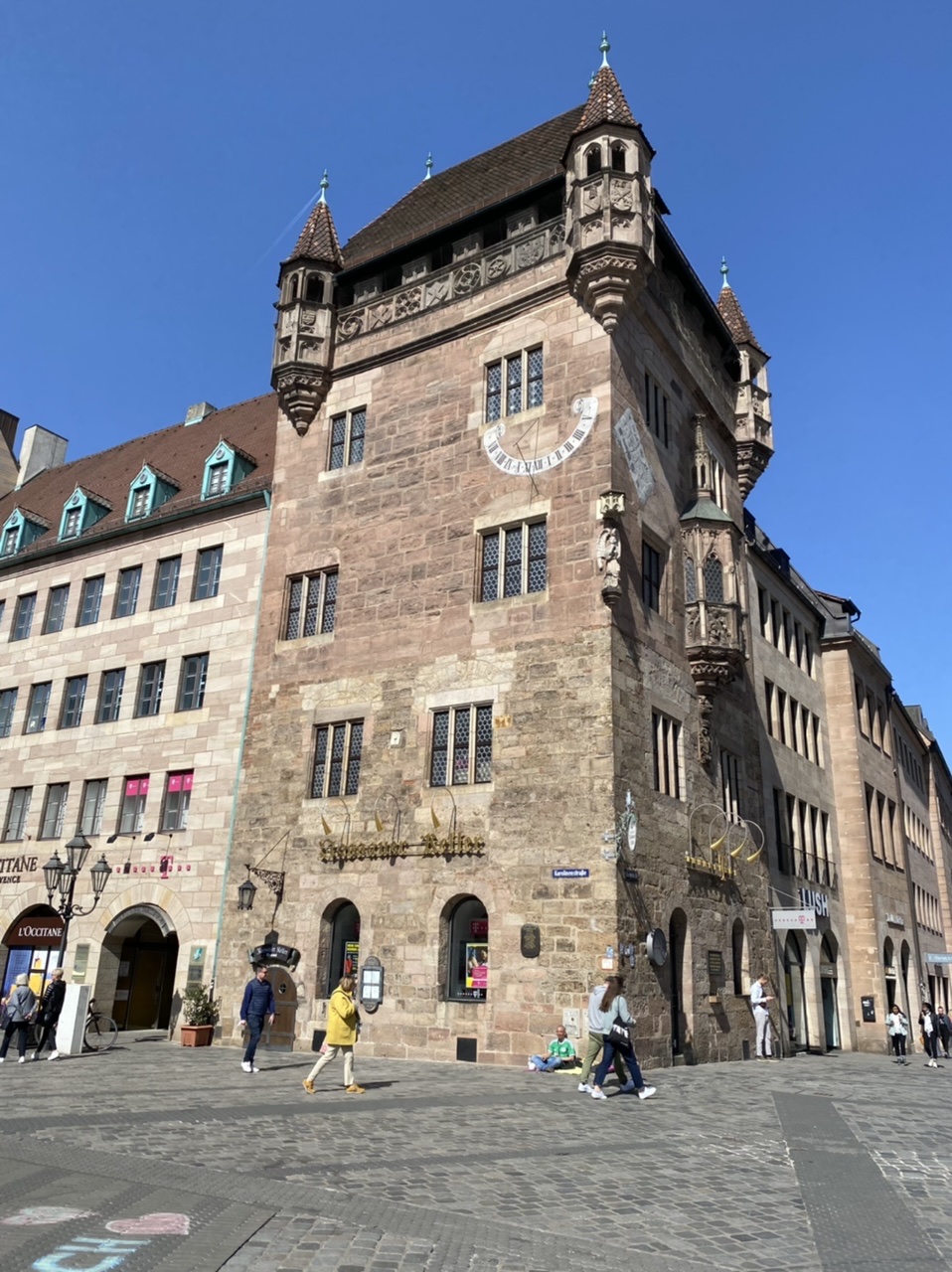
Speaking of restaurants, it was nearly time for our lunch booking! Frank had booked us in at a restaurant that he knew well. Before we headed there though, we ran back to the Hauptmarkt to see the “Männleinlaufen” at the Frauenkirche. That’s when the bells ring out and little clockwork figures spin around under the clock. It’s not the most exciting display, but it’s not like they were all watching Netflix in the 16th century, right?
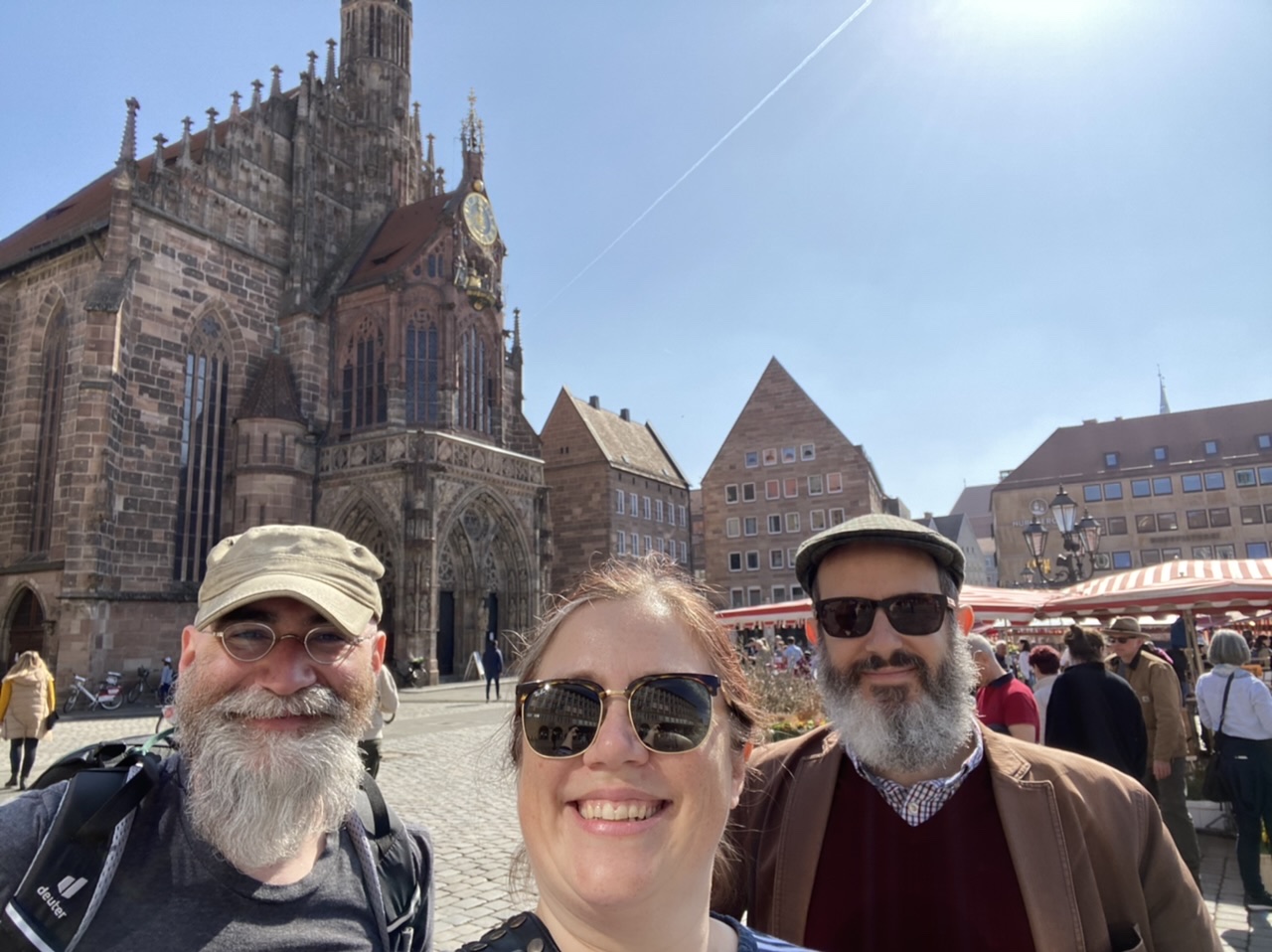
The market was in full swing, and we were getting hungry…
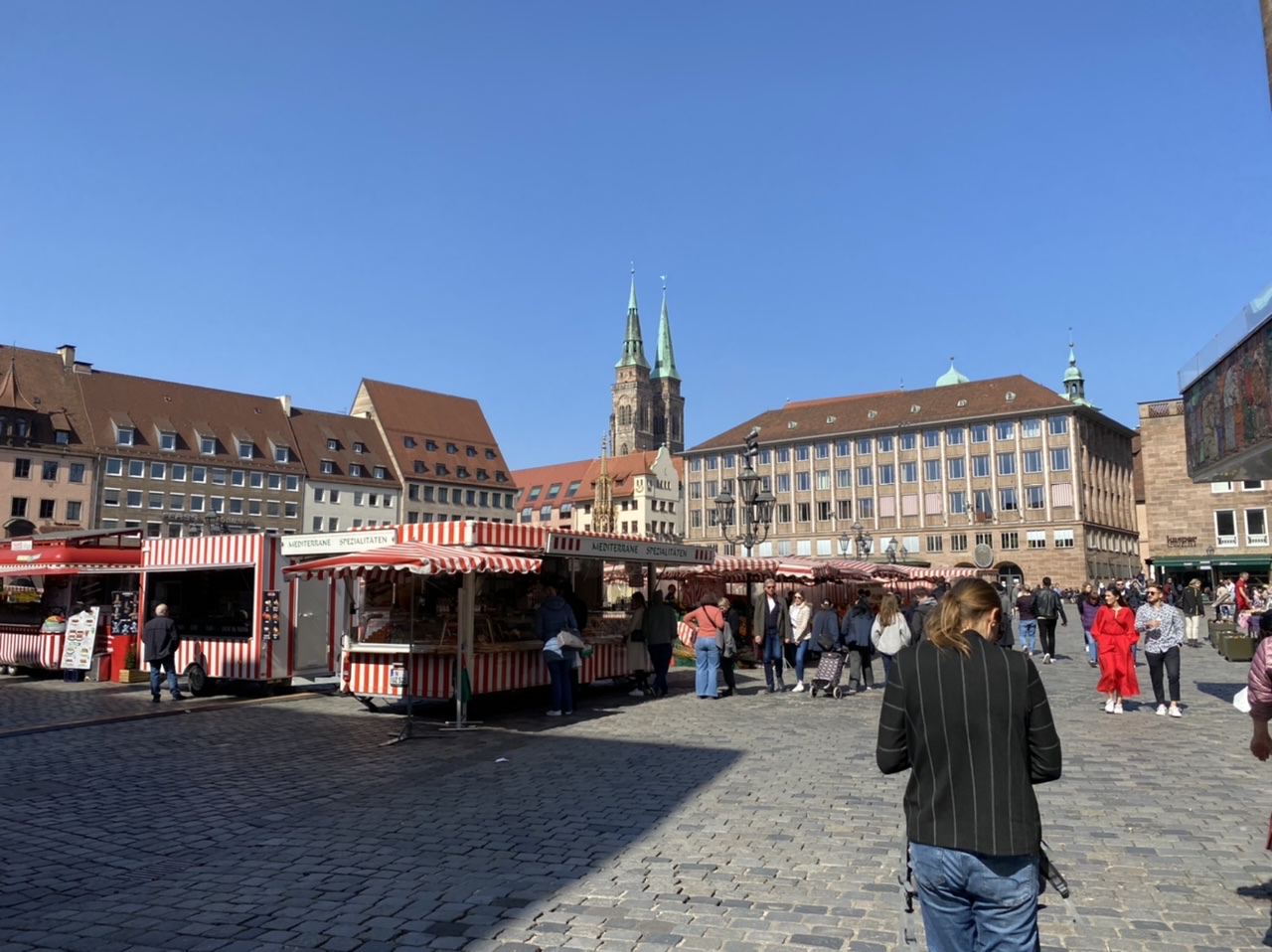
The restaurant Frank took us to was called Jøwåy. (I thought at first it was going to be Scandinavian, but the name is a play on the owner’s name – Johannes Hannweg.) It’s a fairly small place, and they only do lunch one day a week. We were astonished to find that we were the only people in the place, and we were being personally served by the owner himself.
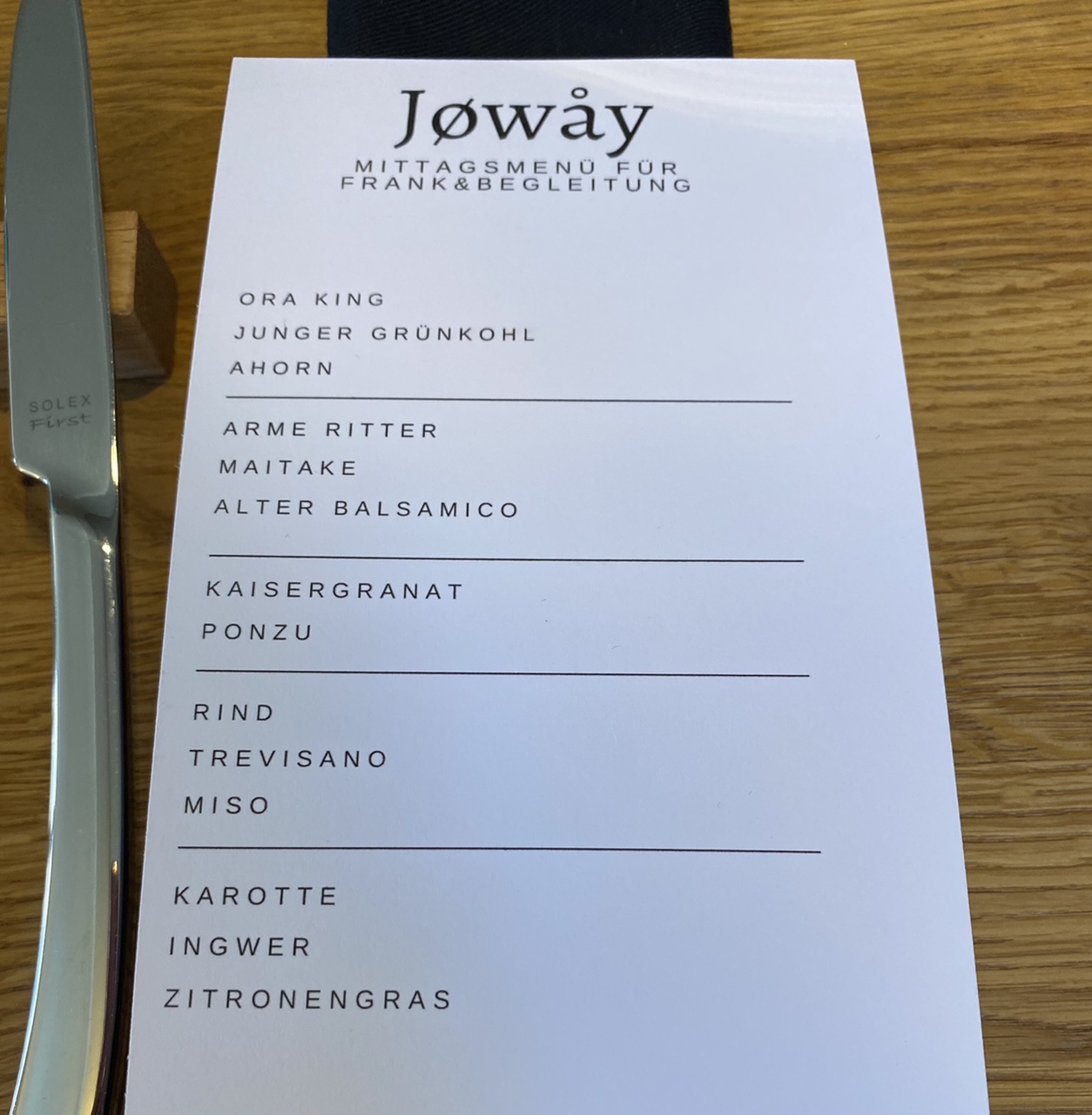
They even made custom lunch menus for “Frank & Begleitung” (Frank and company)!!
Folks, this was a fantastic meal. We spent nearly 3 hours there going through several courses, along with a container of caviar (Chinese farmed sturgeon – not Russian!) and a lot of wine. My favourite dish was the “Arme Ritter” (“Poor Knight,” which was actually savoury French toast with mushrooms and balsamic vinegar).
Each of the main courses had a paired wine, but for the beef course Johannes decided to do something special. He knew that we were from Australia so he dug out a bottle of Mount Barker Cab Sav! Pretty much the last thing we expected to find in Nürnberg.
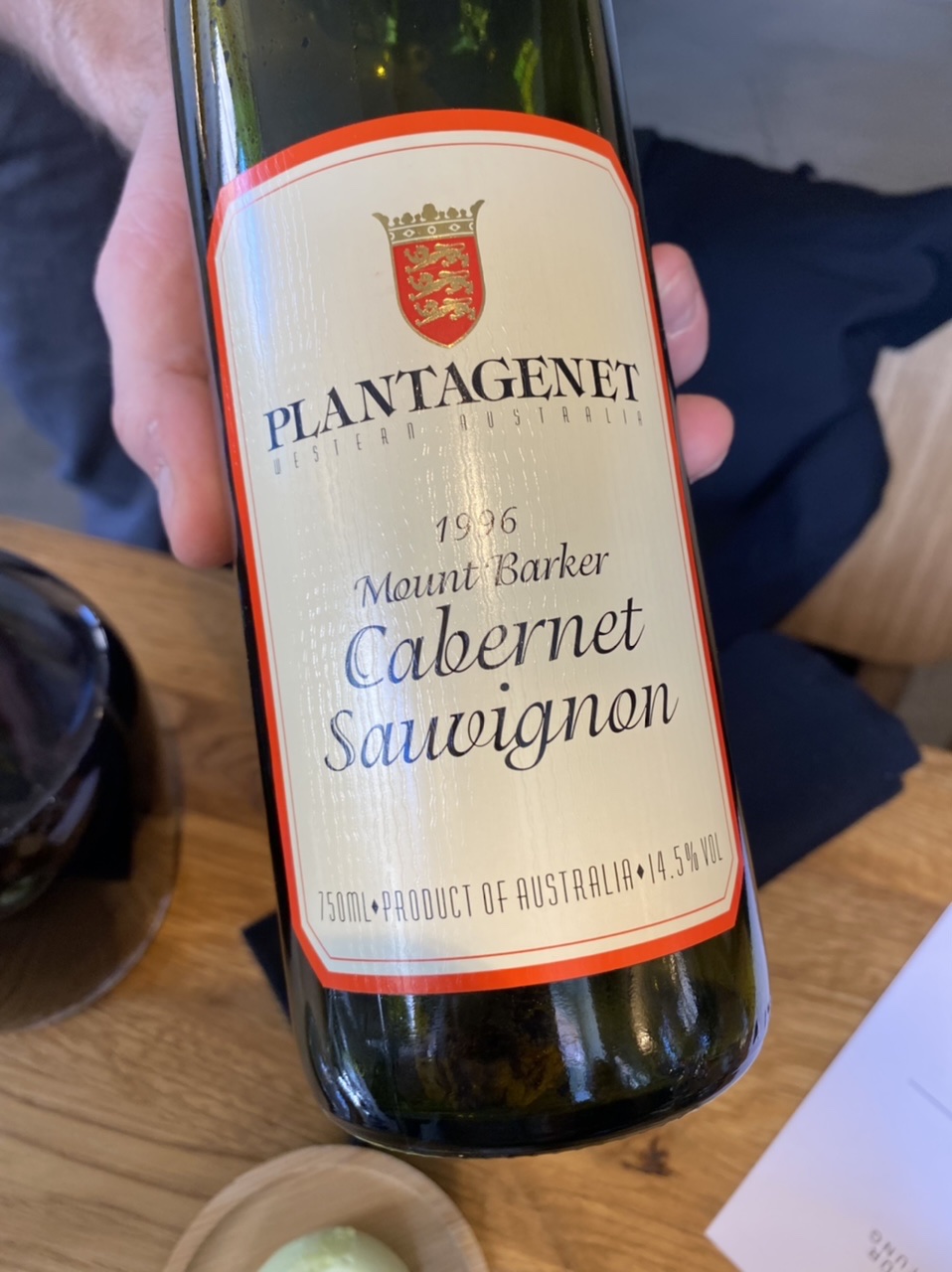
How great is that?!
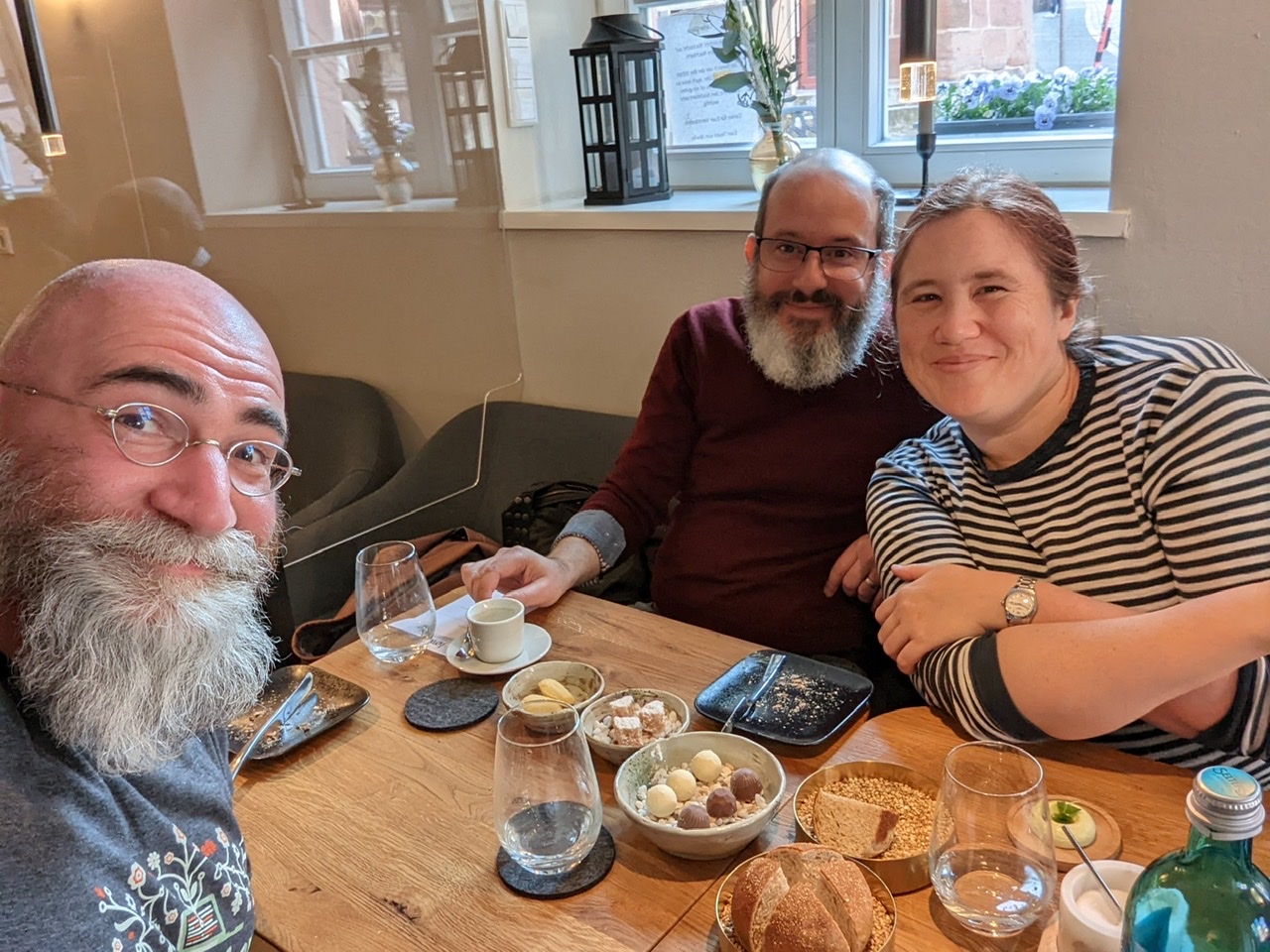
As you might imagine, we pretty much rolled out of Jøwåy. Time for more disturbing sculptures! Over in the Ludwigsplatz we found the famous “Ehekarussell” (“Marriage Carousel”) by Jürgen Weber. It depicts the course of a relationship from young and optimistic to old and fat and then ultimately death. Cheerful guy, Jürgen.
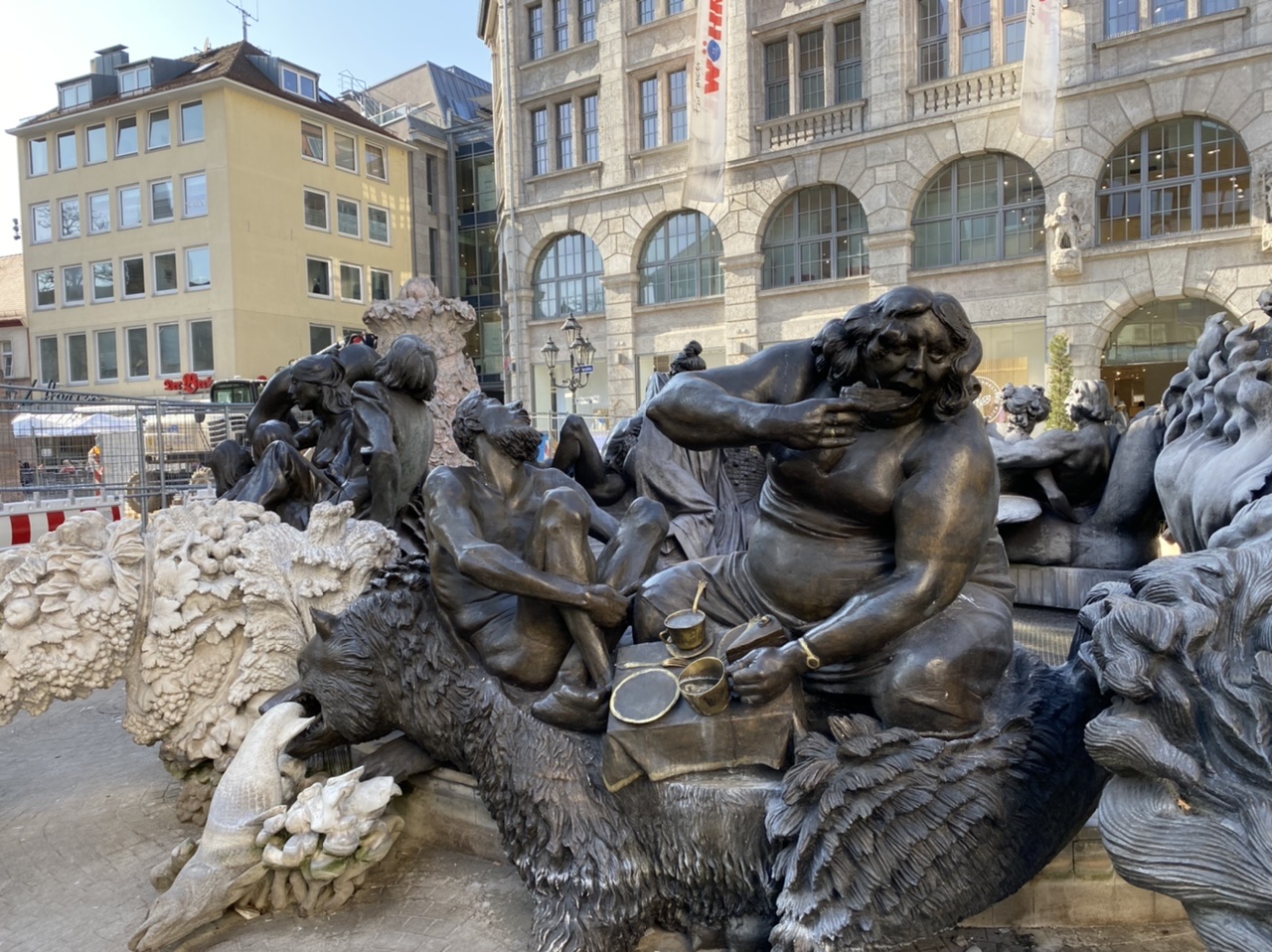
Here’s St. Elisabeth (St. Elizabeth’s), a Catholic Church. I love the green copper dome.
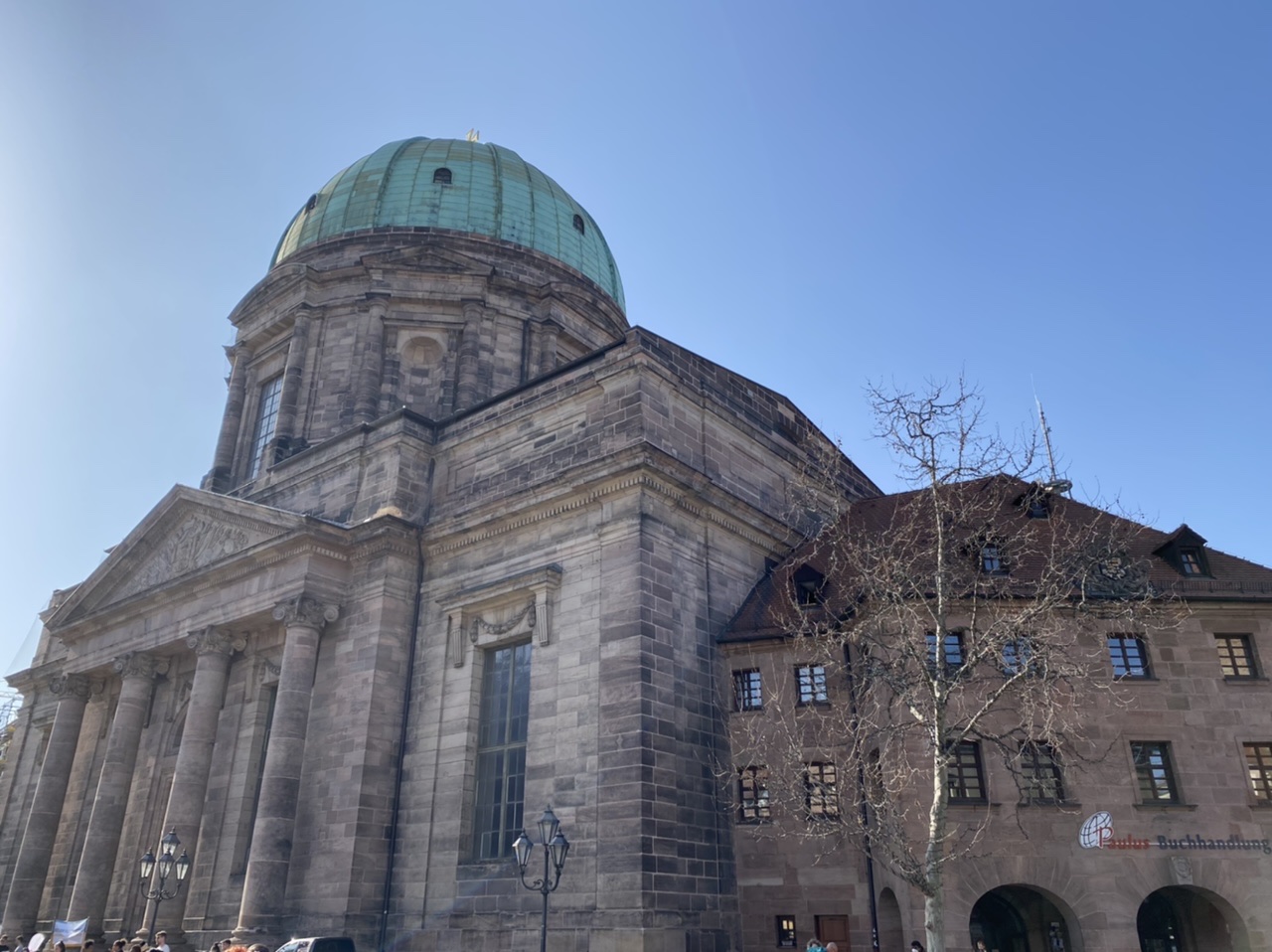
The Hauptbahnhof (central train station) stands just outside the city walls opposite the Königstor (King’s gate). It’s one of the biggest in Bavaria.
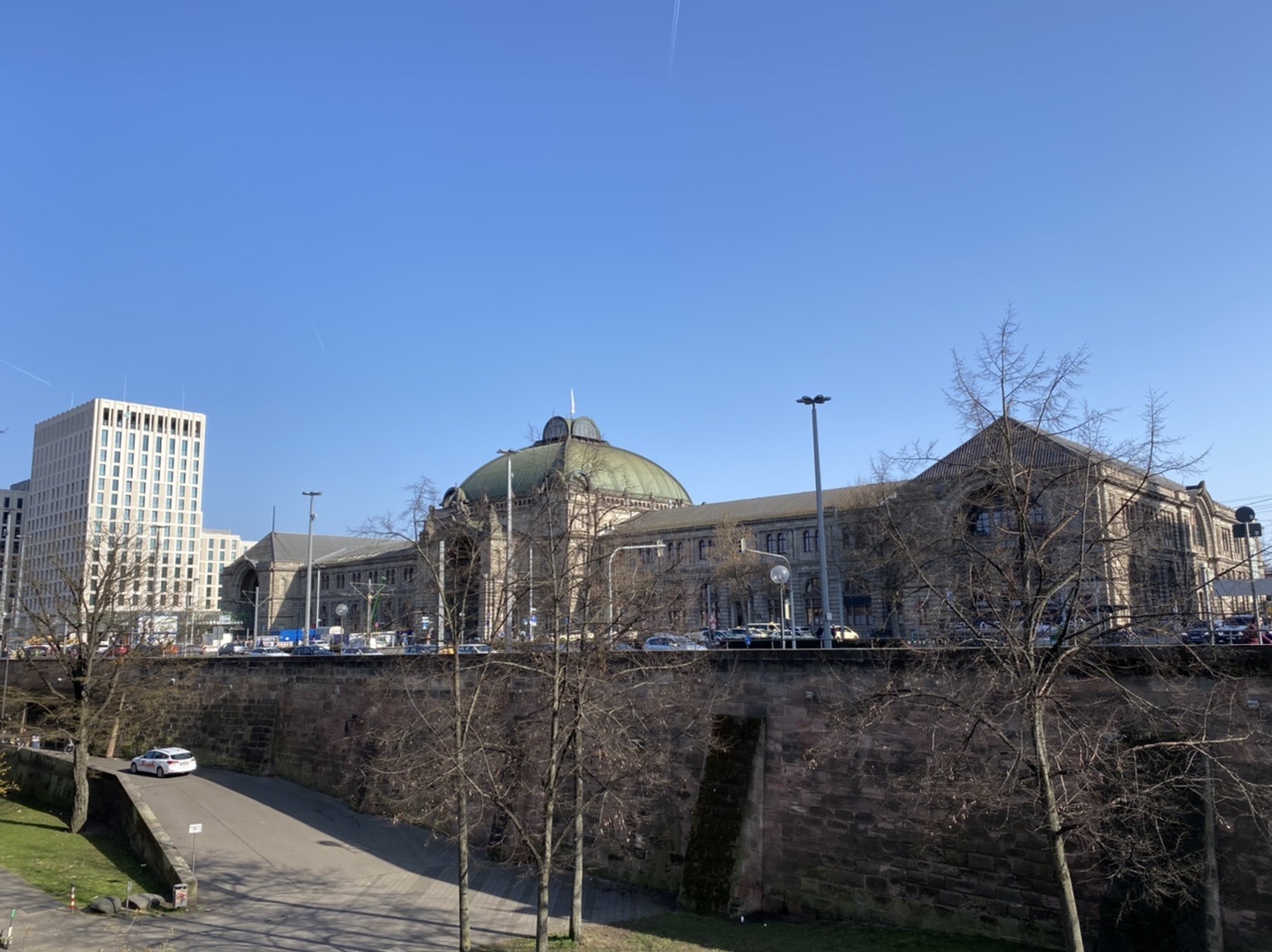
One of the first things you see when you arrive at the station in Nürnberg is the Frauentorturm (Women’s gate tower).
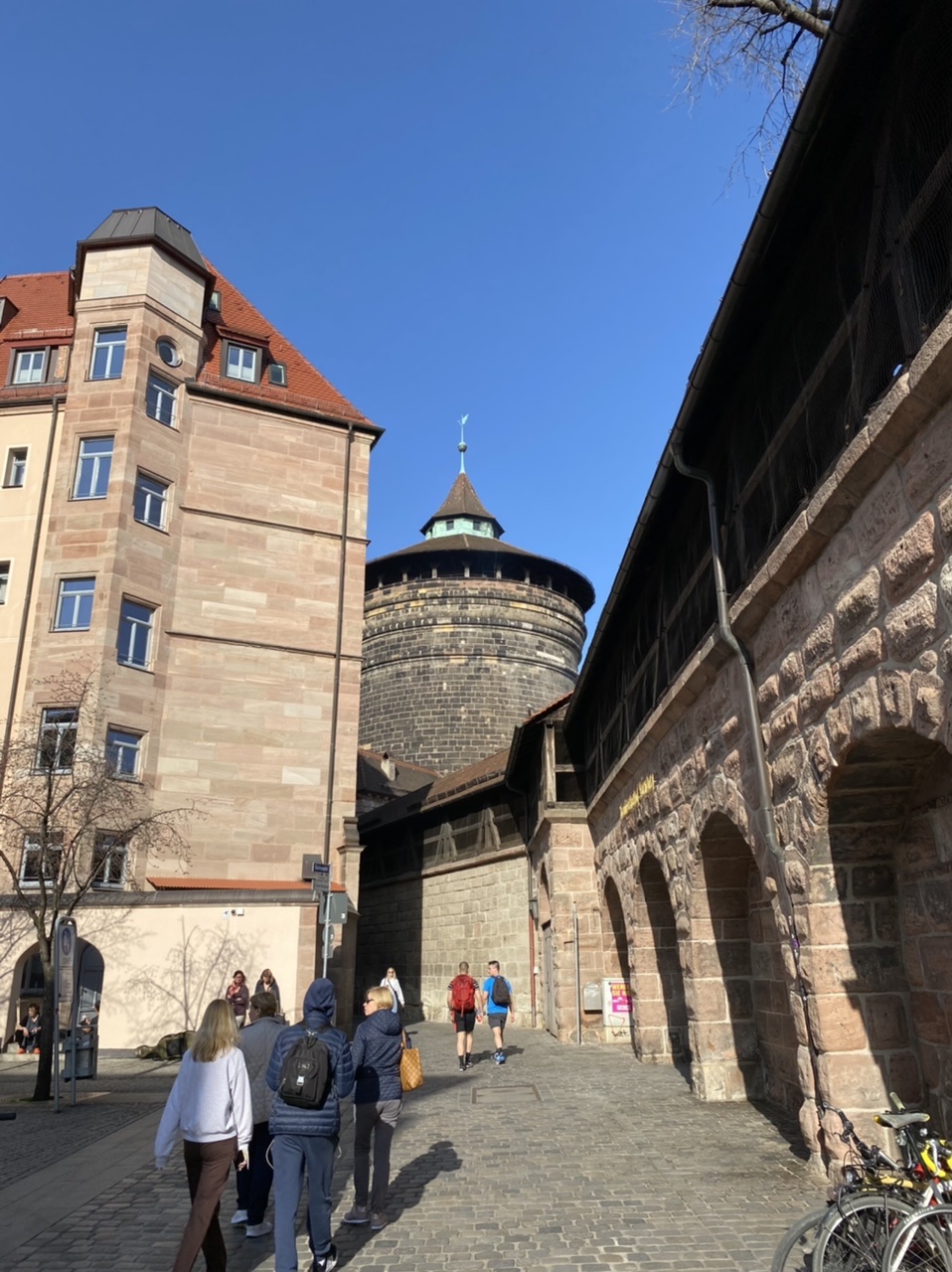
Around the base of the tower in what used to be the armoury is the Handwerkerhof (Artisans’ yard). There are lots of little shops selling locally produced craft goods.
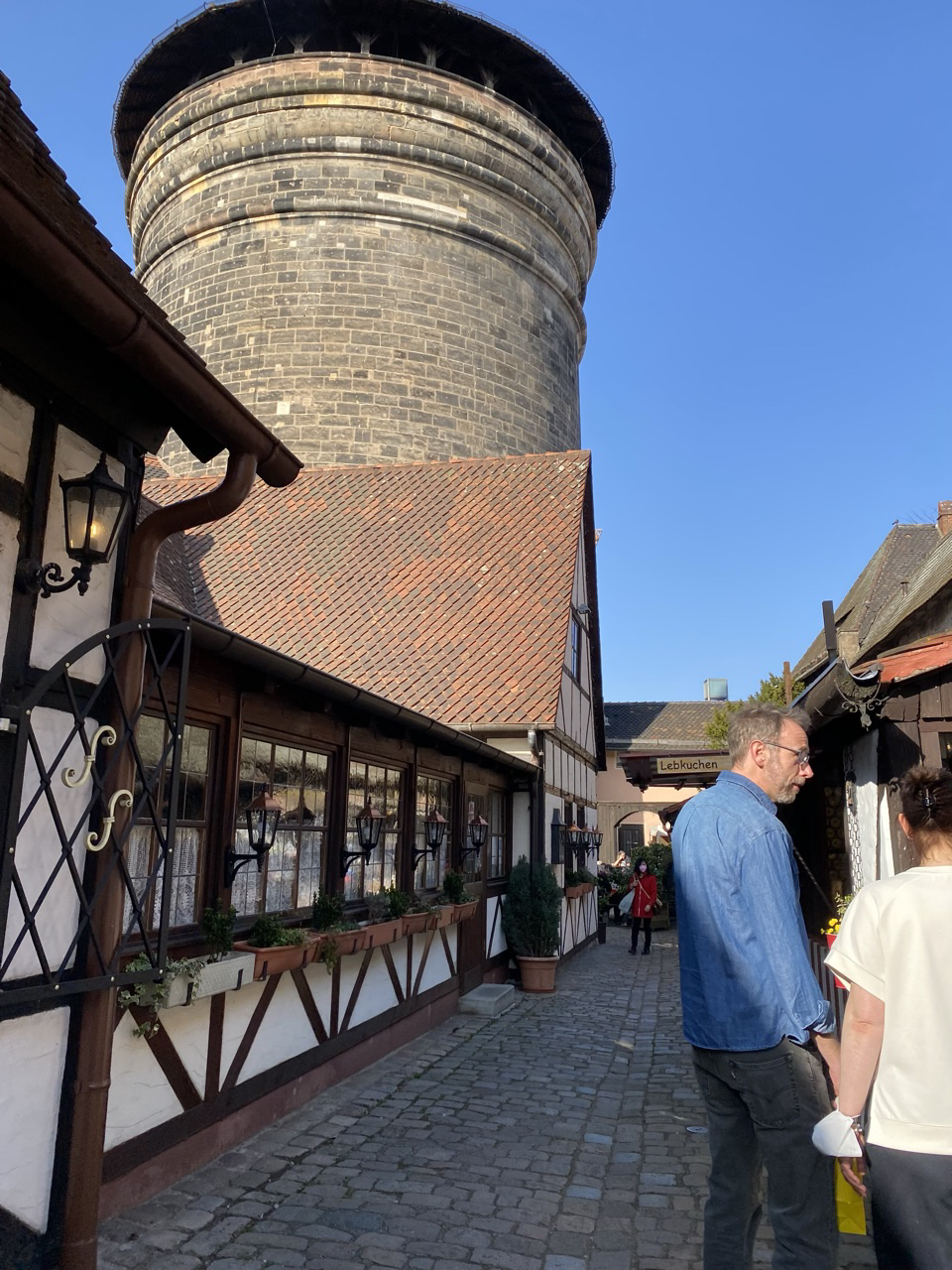
There was one final stop on Frank’s itinerary, so we headed back up the Königstraße…
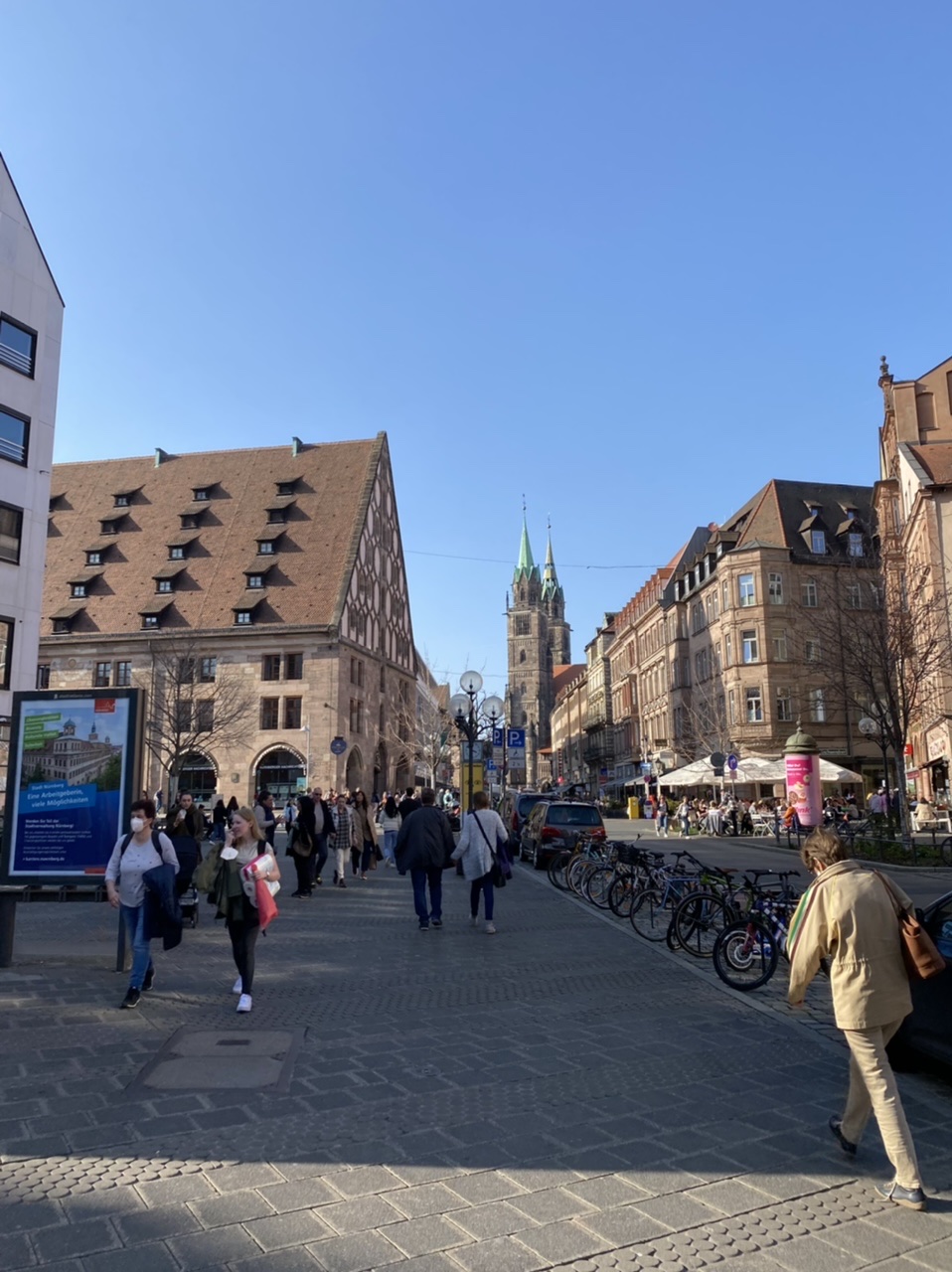
Our final stop was the Museum 22/20/18 Kühnertsgasse. This is a set of three adjoining 14th-century artisans’ houses that have been restored and turned into a museum.
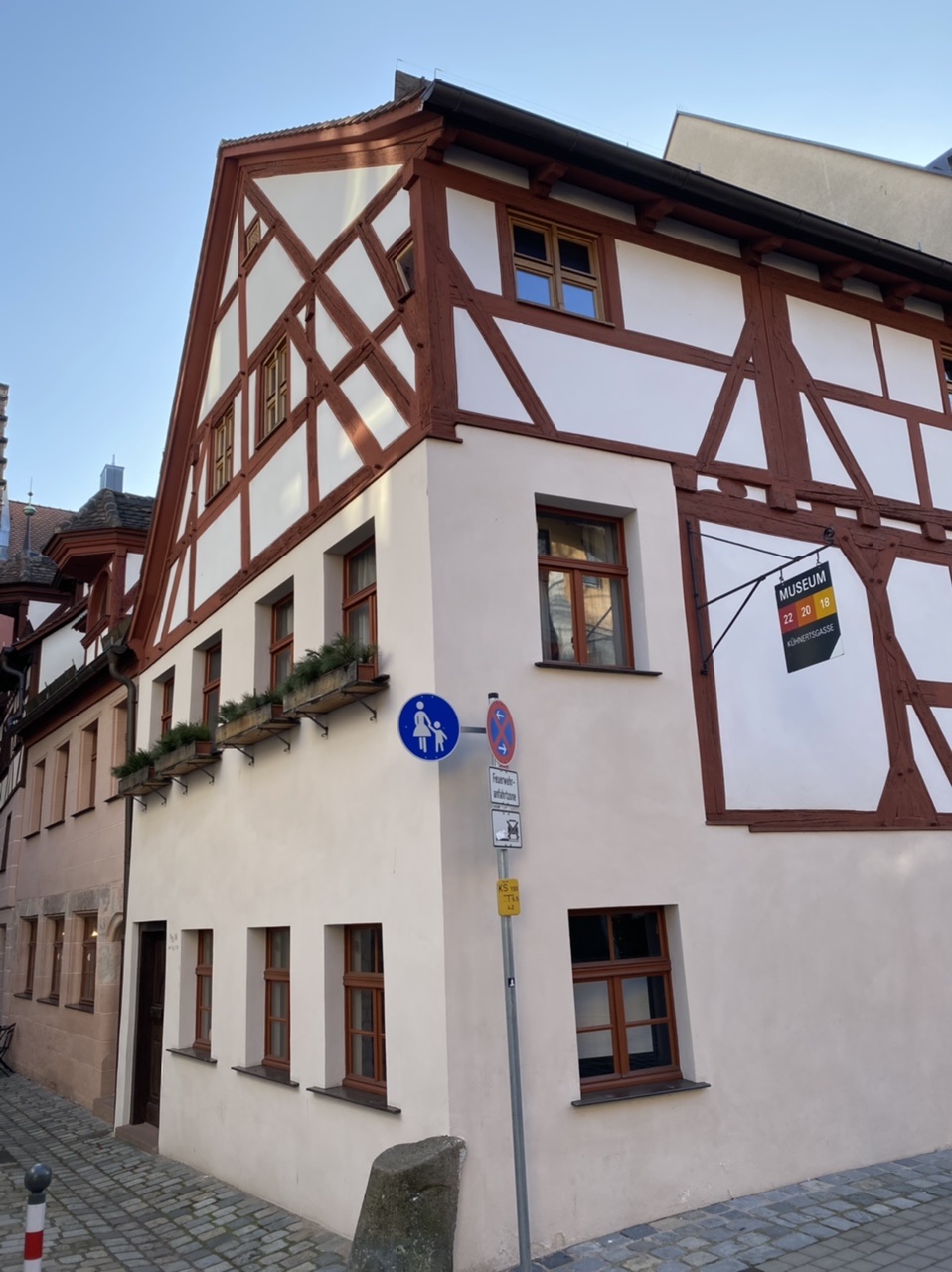
The houses were gloriously wonky inside, and you got to see how they were expanded and improved over the centuries. As we were in the run-up to Easter, the Museum also featured an exhibition of vintage German Easter-related merchandise.
Frank dropped us back off at our hotel, exhausted from a full day of sightseeing. He’s absolutely amazing, and we couldn’t thank him enough for showing off his wonderful city! ❤️ Thanks, Frank.
There was no way we were going to eat dinner after that epic lunch, but we booked some seats at the bar at the nearby “Blume von Hawaii” (Flower of Hawaii) tiki bar…
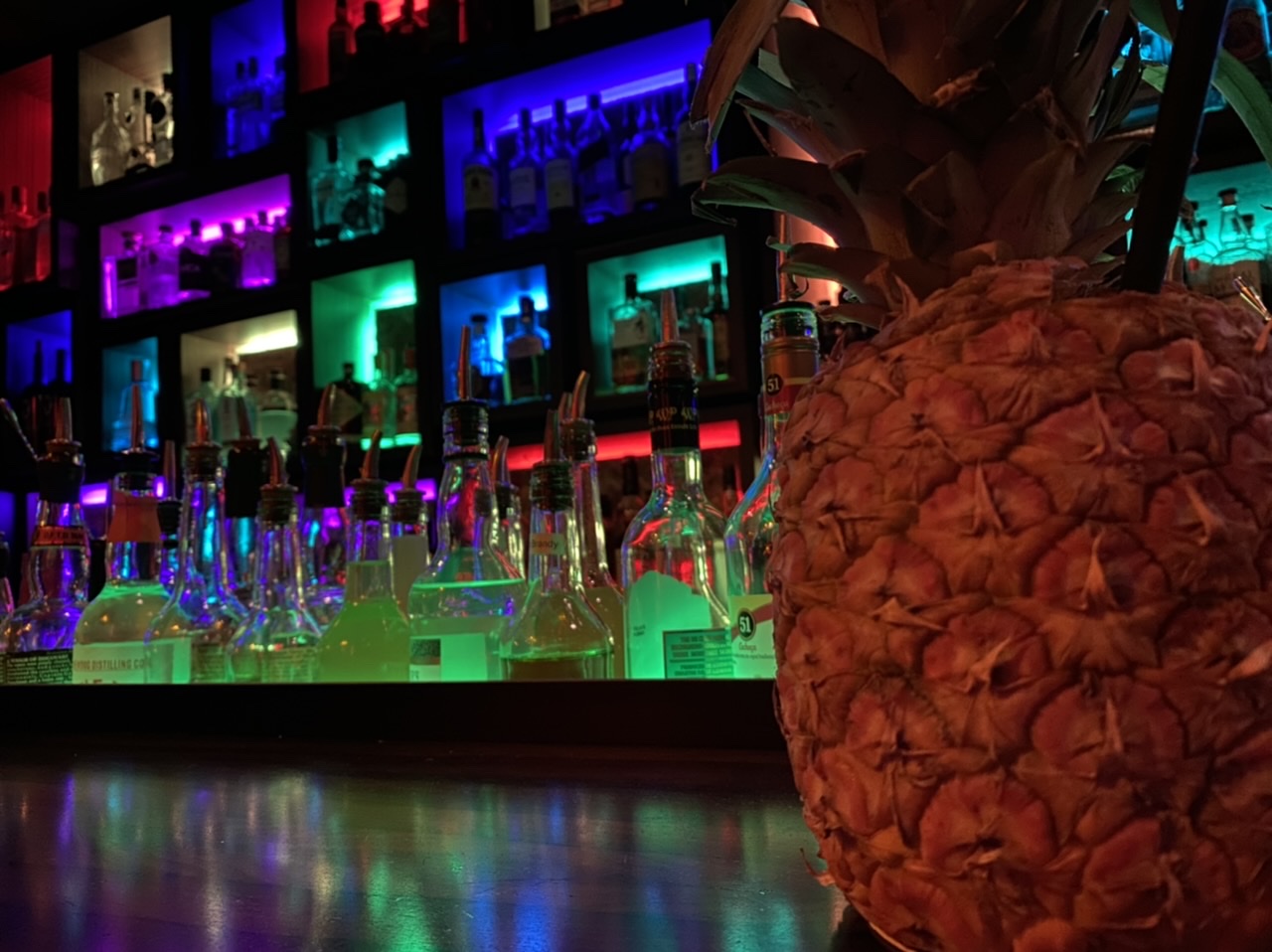
“Dude, we are not cool enough for this place,” we joked. It was pretty awesome. My first drink came in a hollowed out frozen pineapple!
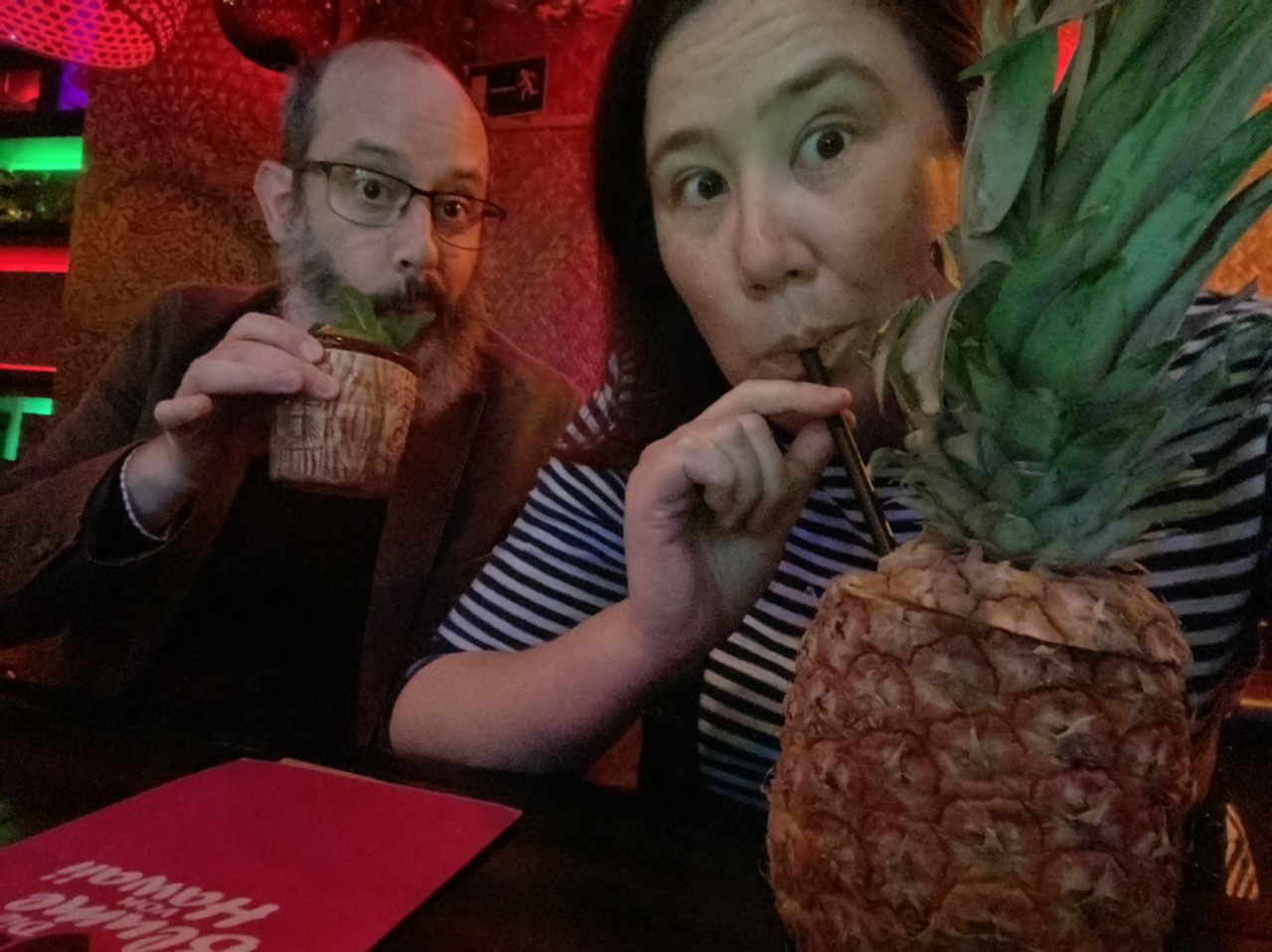
And my second was ON FIRE.
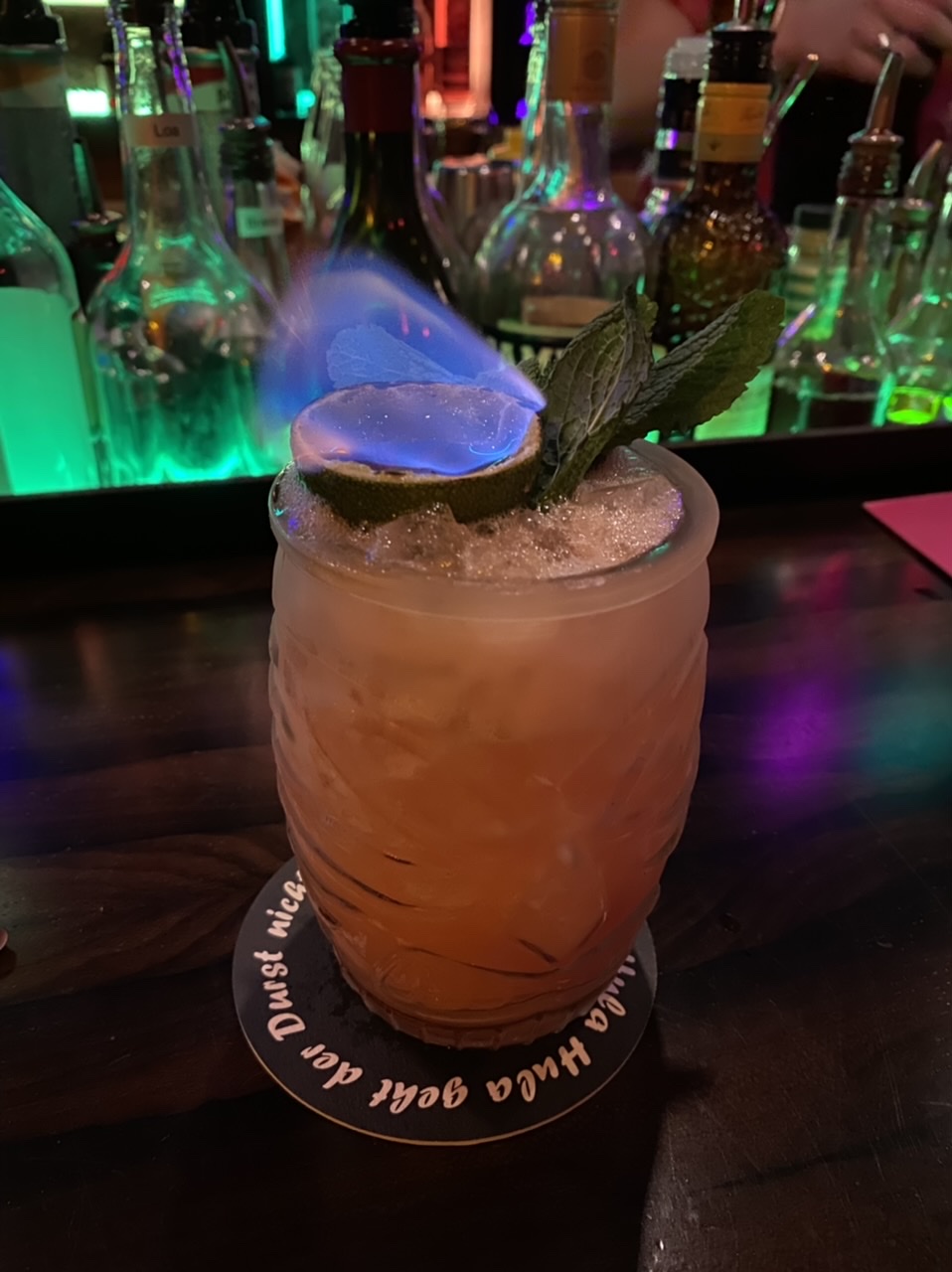
And that’s pretty much it for Nürnberg! We checked out the next morning and caught the train back to Munich. It’s an easy day trip, so if you’re ever in the area – and it’s a nice day! – you should definitely check it out.

